July 4, 2021
Martha O'Kennon
.
What a week! It was so hot and humid that I would peel myself off the computer and go out to get some new pictures, come inside, collapse and crop pictures, drink, drink, drink. And of course, eat, eat, eat. Global climate destabilization. Thunderstorms, then repeat hot and humid. But the good news is we are in photographic heaven. Always something to keep us amused and certainly busy. I love it.
Many of the flowers this week came in small groups or single. The Asiatic Day Flower is almost always found in a group of one. But such a blue! Blue, in fact, will show up several times this week. The Butterfly Weed, which is not fully open - you can tell both from the fact that the buds are tightly closed at this point and from the pallid color. It will be bright orange soon. It is the last of a group of Milkweeds that I planted and kept trying to nurture, but nurture doesn't seem to be in its nature. (Sorry for the cheap shot, but not sorry enough not to shoot.) Leave me alone, it seems to say, and maybe I'll bloom and maybe I'll be there when the Monarch comes by to lay its eggs. (It rarely does either in this yard.) Will the Trumpets finally blare forth for these buds? Cautious optimism here, folks.
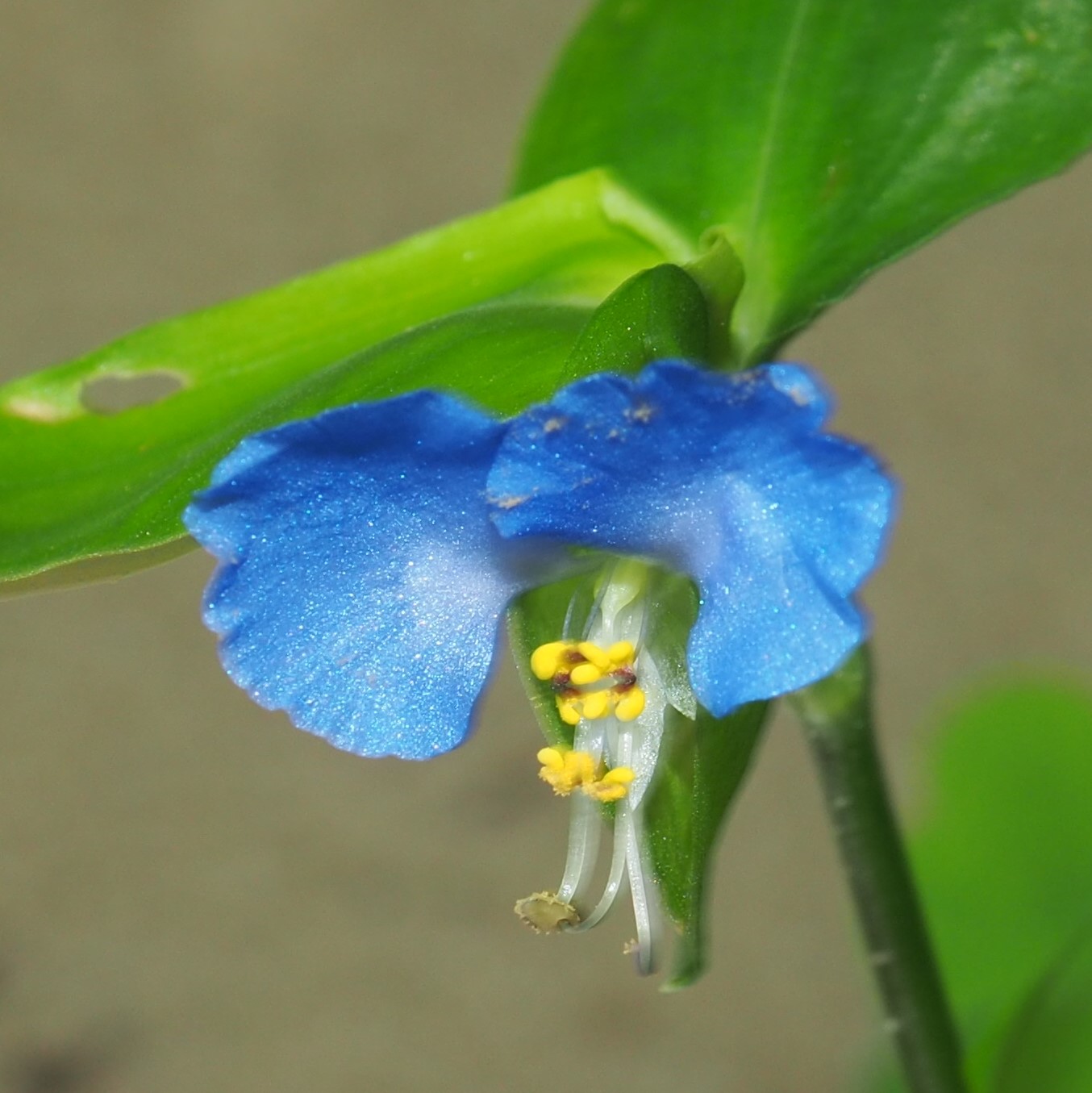
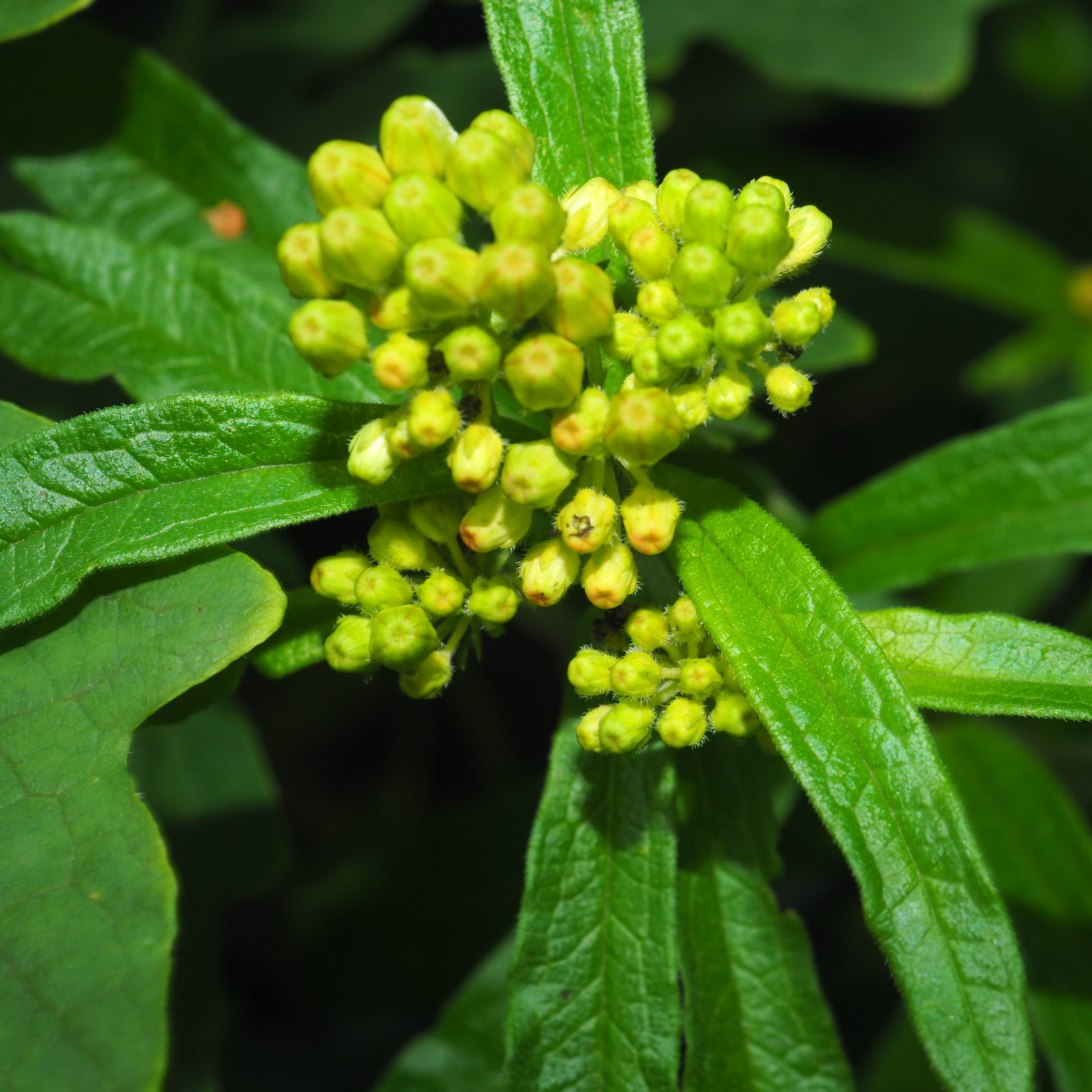
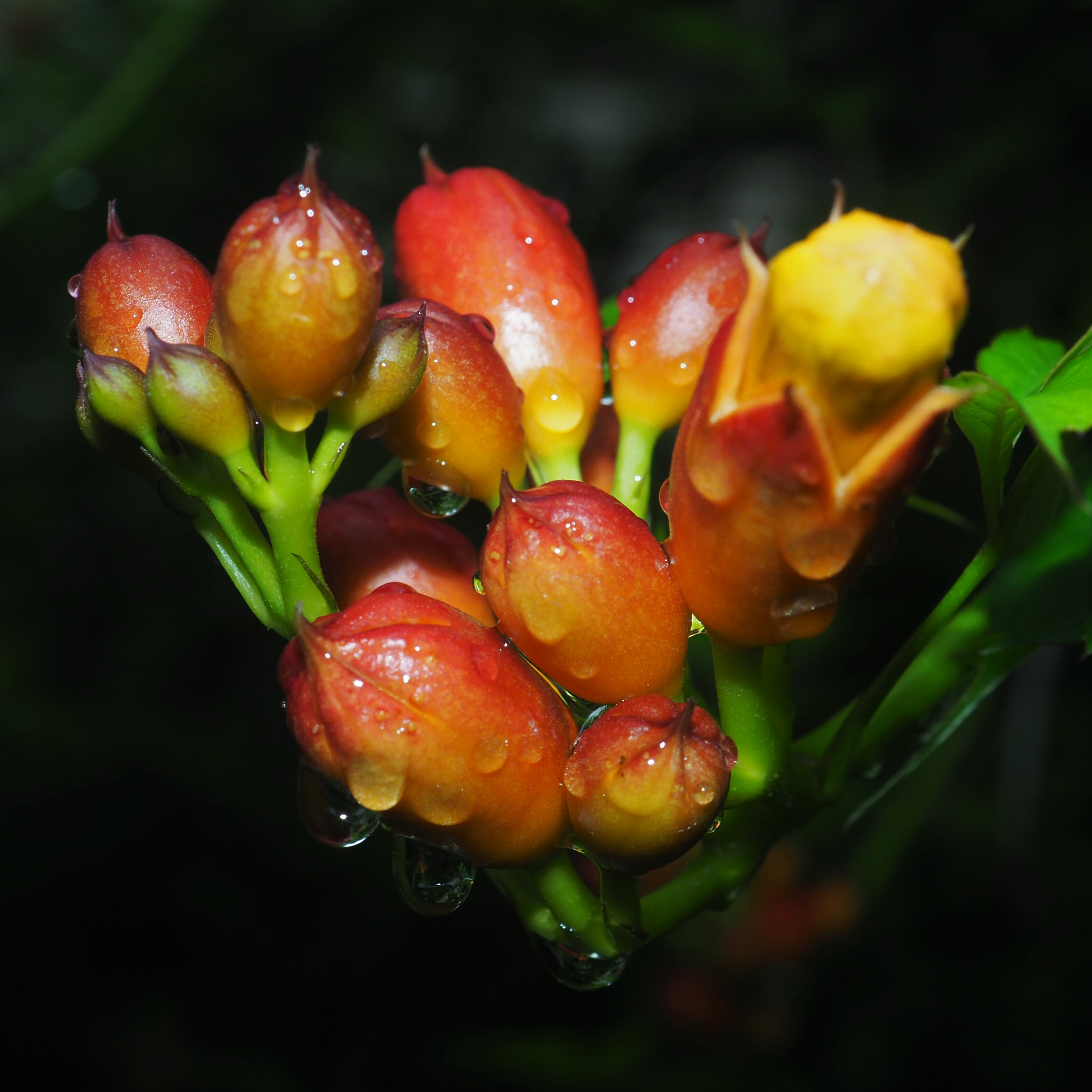
Remember that there is information in the name of the file for each image. You can see it by mousing over the
image - look at the lower left of the screen. Or you can click on the image to get to the (usually) larger image.
Then the info is displayed in the address line above. Sometimes the second click will actually display a
different view of the original image.
The Ants seemed to be deliberately misleading me this time. Easy ones first: an Eastern Black Carpenter Ant; then a Small Honey Ant; and then, a Smaller Carpenter Ant.
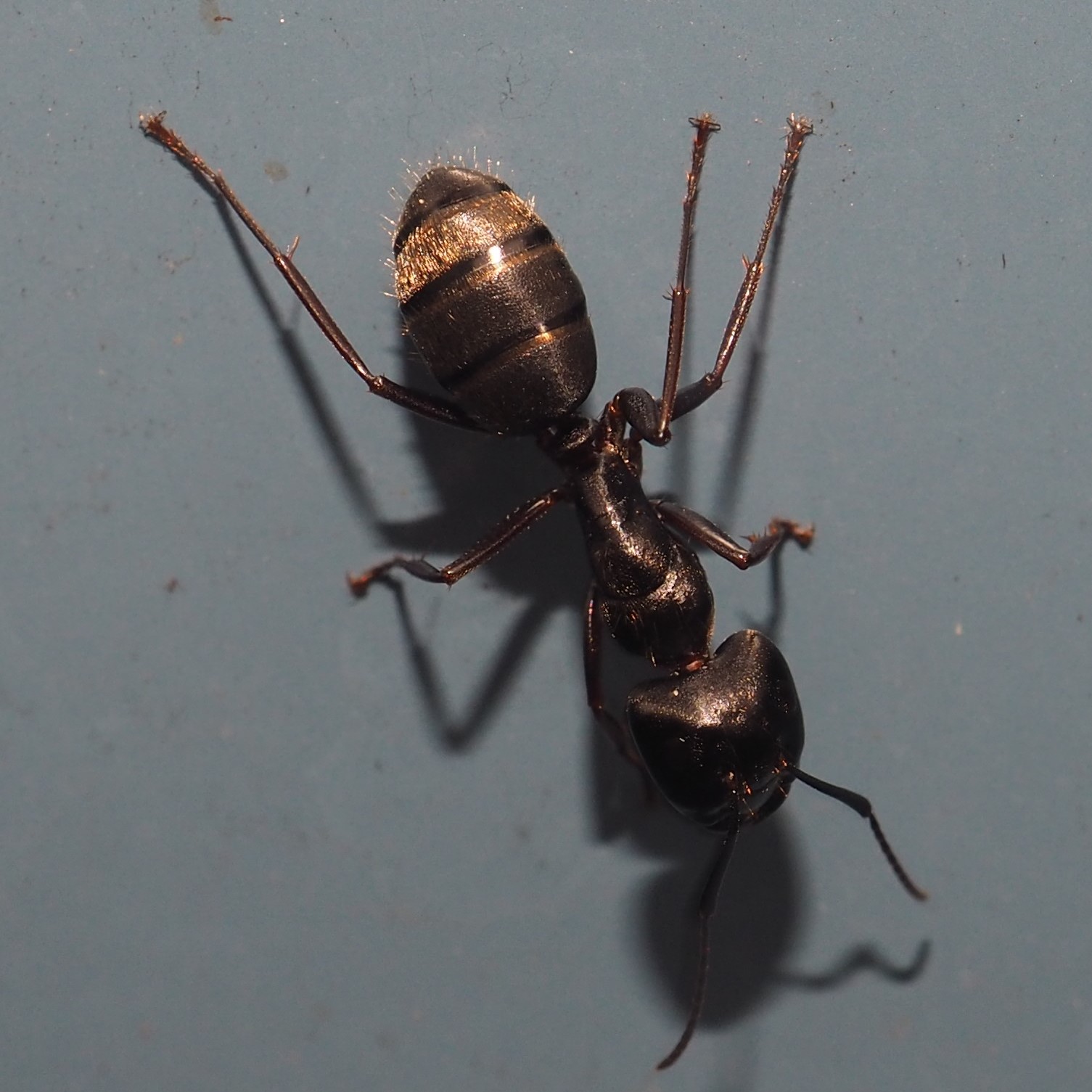
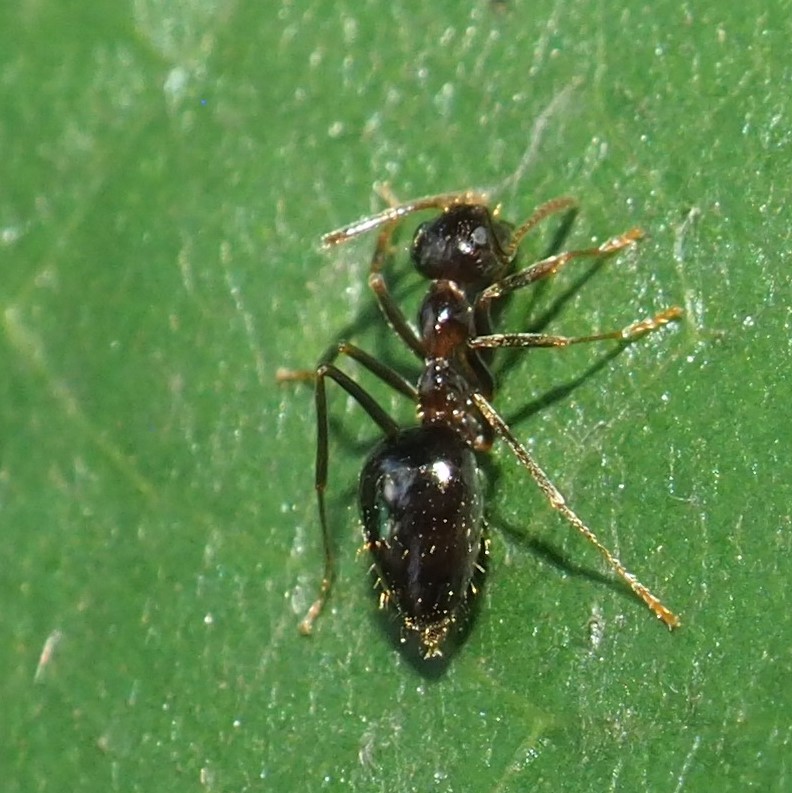
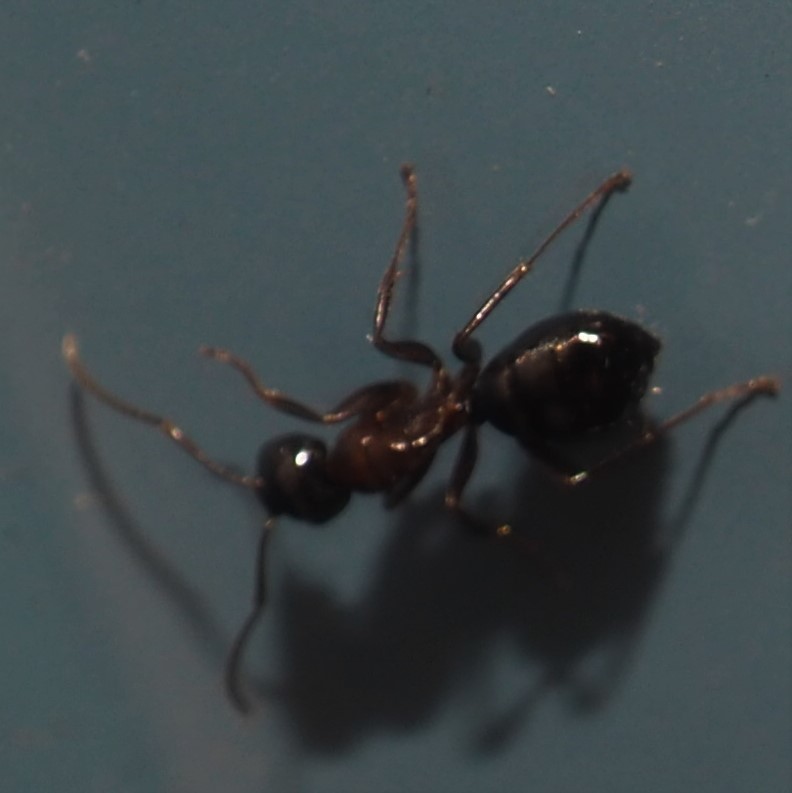
Here is one of the Ants in genus Formica. Actually it is in the complex Formica Fusca group in the genus Formica. They tend to pick up this shine when you shoot them with flash. The second one is just a bit out of focus but shows its shape - which I don't recognize. Now, last year I saw the tiny Hairless Rover Ant OFTEN, but not this year. So this third Ant may be the Hairless Rover or it may be the "curved-spine" Ant. OK, these pictures are puzzling but do represent real Ants.
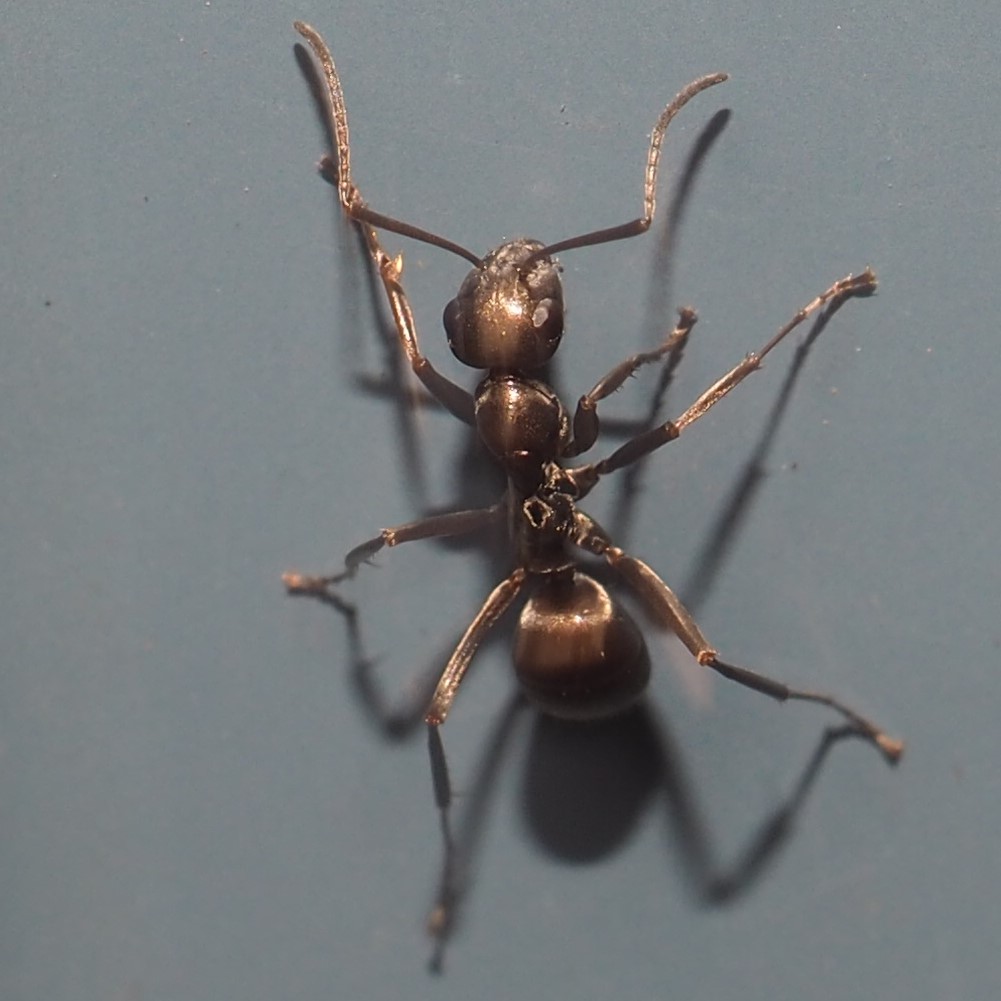

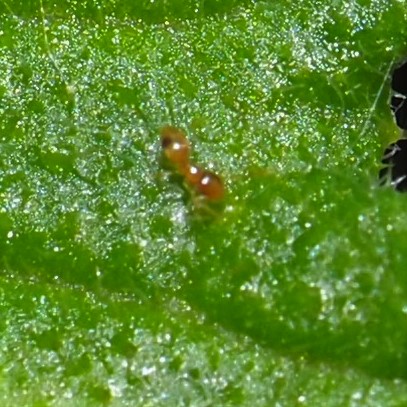
Now let's get crazy. Look at this one. I wrote to Steven Wang to see if this really IS an Ant. He agreed with me that it is a fooler. It has the narrow waist of a real Ant, and in general most people would say, yes, it's an Ant. But the antennae are the wrong shape, and it looks as if it has TWO HEADS. So it is one of those sneaky Ant Mimics. It turns out that the world is full of creatures that look like other creatures. We say creature 1 mimics creature 2. You may or may not have perused my Ant website. At the end, there is a discussion of Ant Mimics. You should take a quick look at it. One is a member of the famous Ant Mimics that I seem to see every year about now. It is actually a Bug, but its nymph looks like an Ant if you don't look too closely. It is Paraxenetus guttulatus, and as it grows it looks less ant-like and more like the adult True Bug. That nymph is what you see in picture 2. Picture 3 shows it as it gets older and is starting to get its Bug wings. But what I love is the way the gaster (tail segment) seems to be made like a kind of Lego mechanized section!
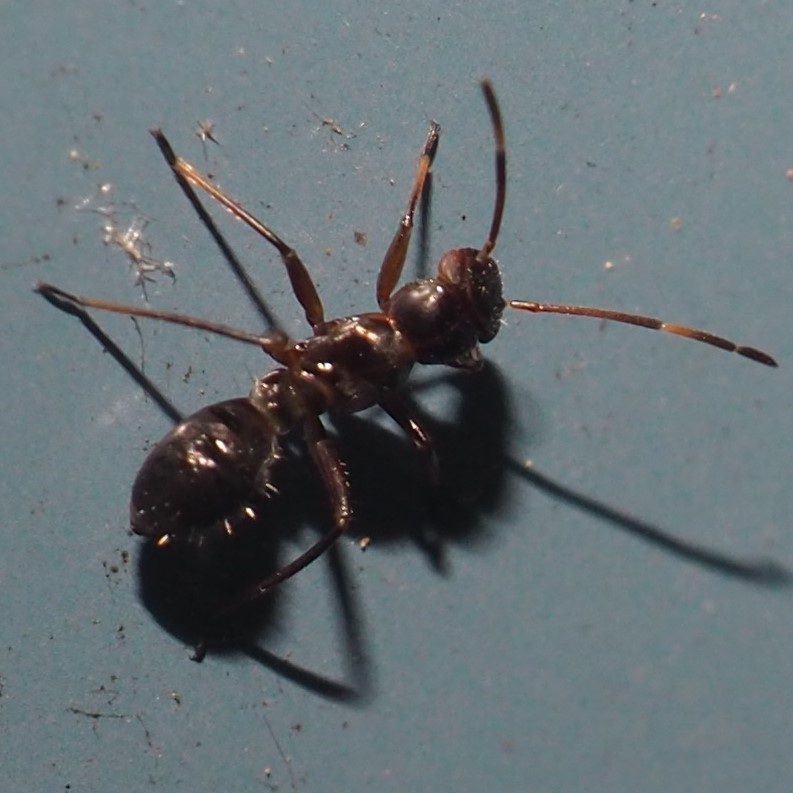
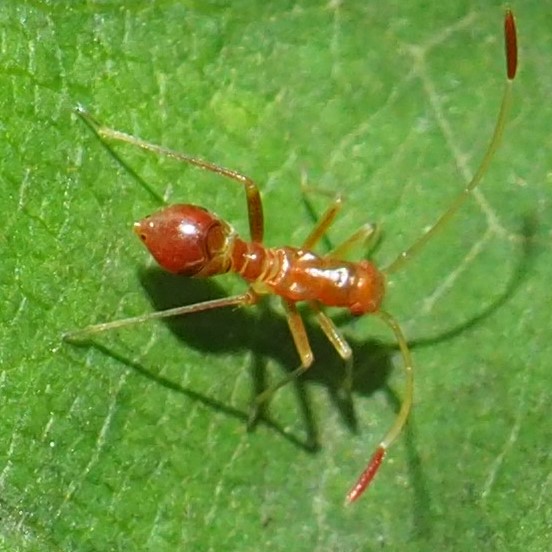
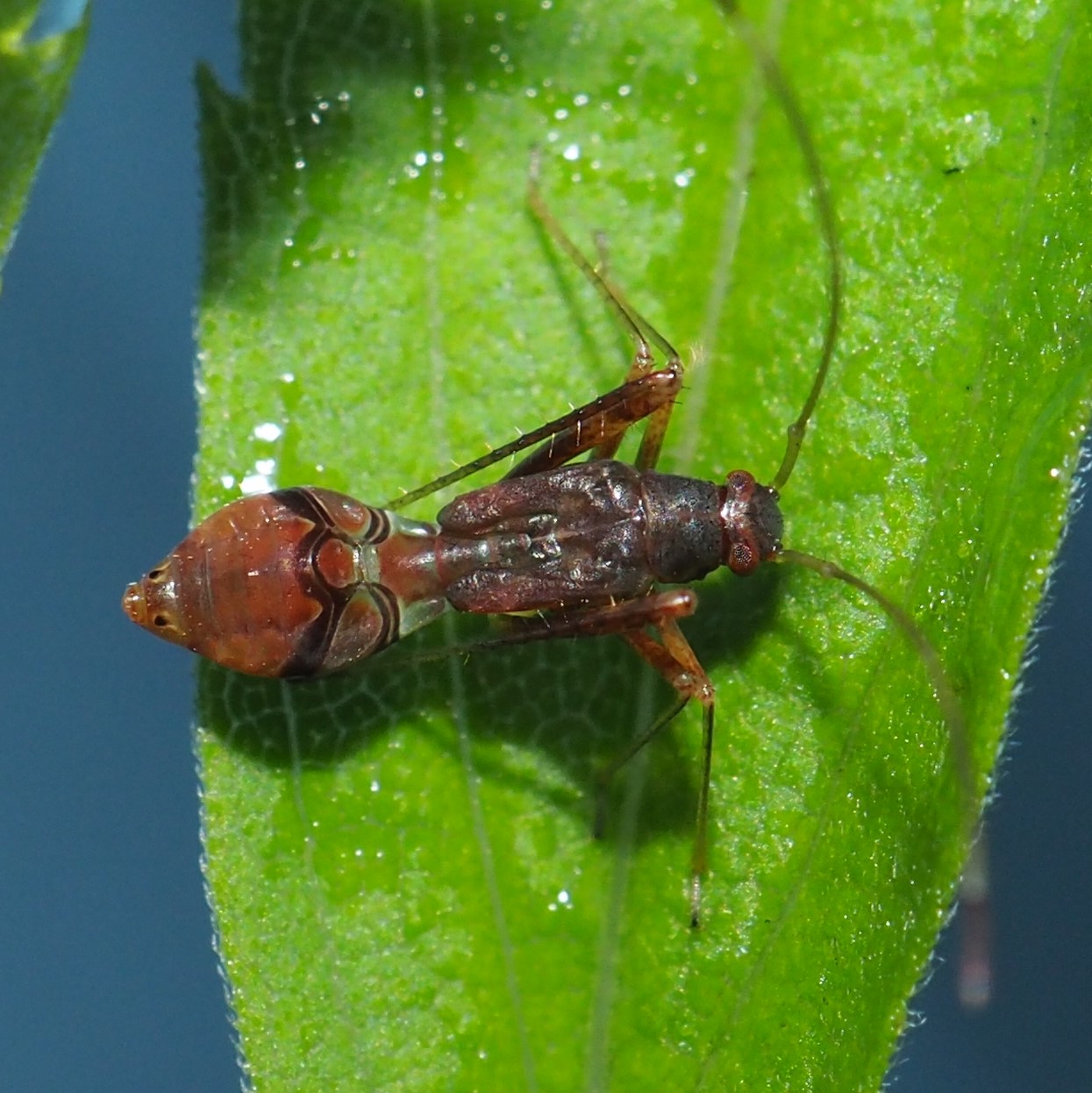
Maybe we'll just do a bit of review of the Barklice. The Ectopsocus moms have laid lots of eggs. Now the count-down till the precious babies hatch. The Graphopsocus babies (picture 2) are turning into adults (picture 3) every day.
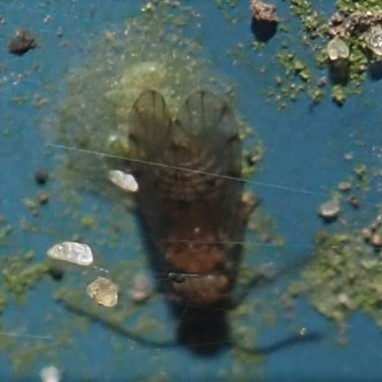


The Polypsocus from last week have been very quiet, but yesterday we spotted three (and today two more) Polypsocus corruptus nymphs! Picture 2 shows a new nymph - I can't quite match it up with any of our usual adults. Third here is an adult Valenzuela (probably flavidus) Barklouse.

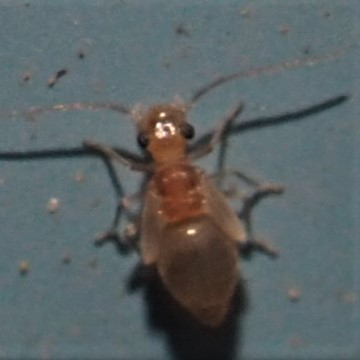
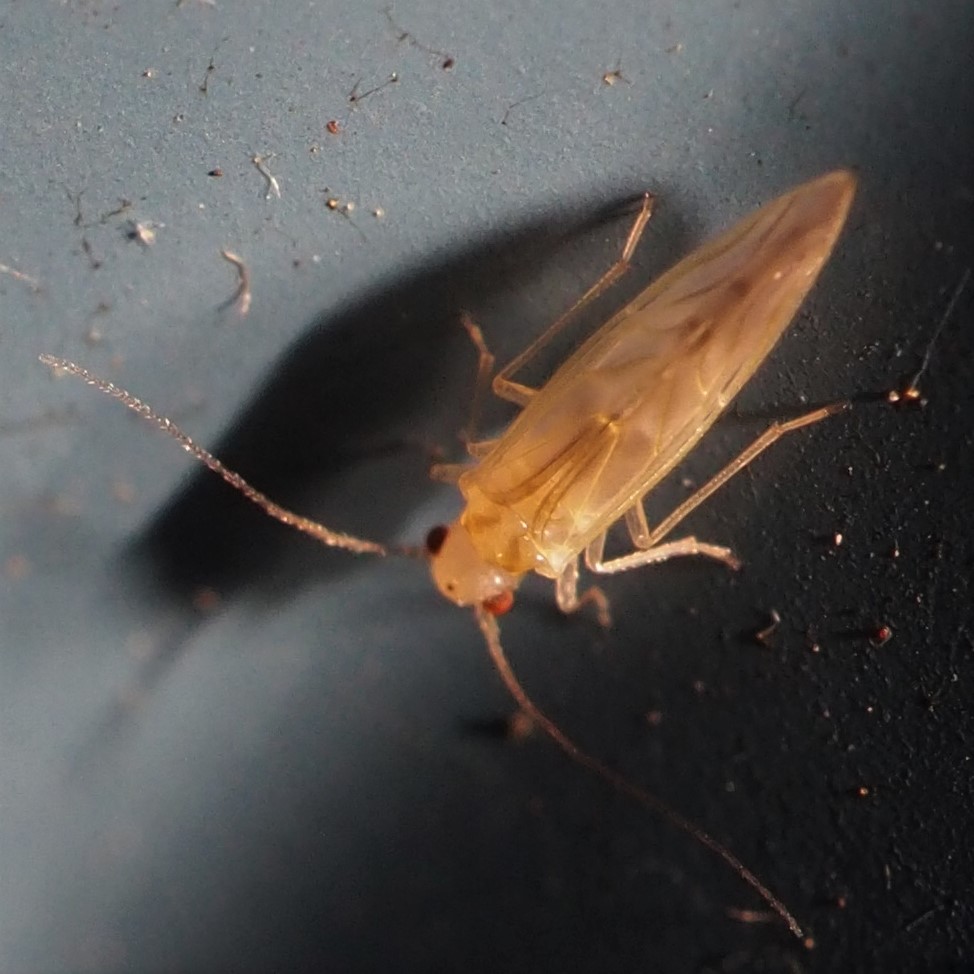 Here are four unidentified adult Barklice.
Here are four unidentified adult Barklice.
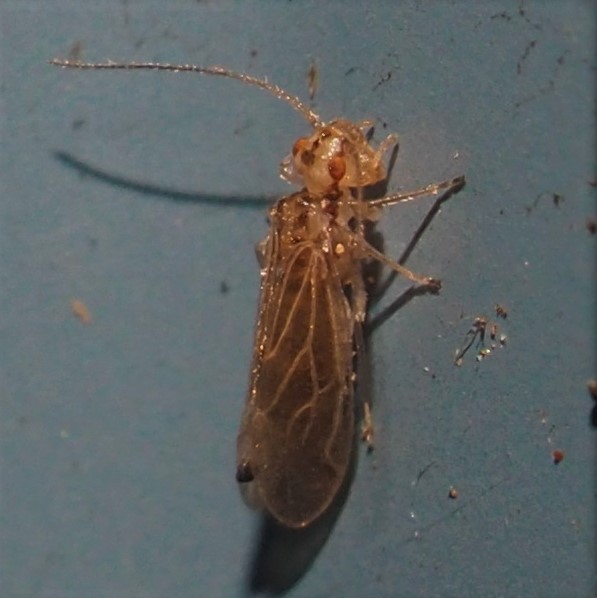
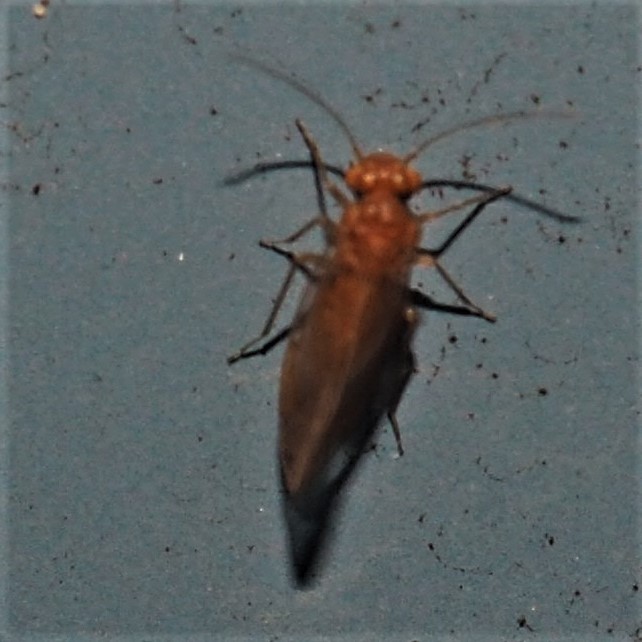
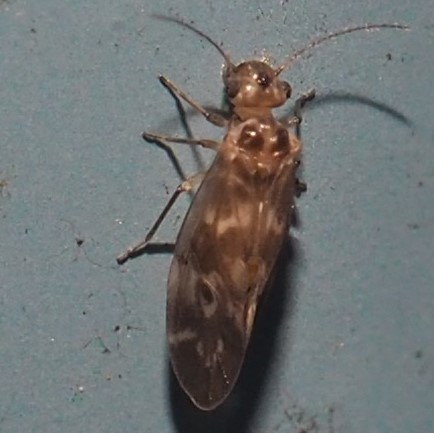

The Echmepteryx hageni nymphs (picture 1) have grown fast and are rapidly turning into adults (two variations in pictures 2 and 3).
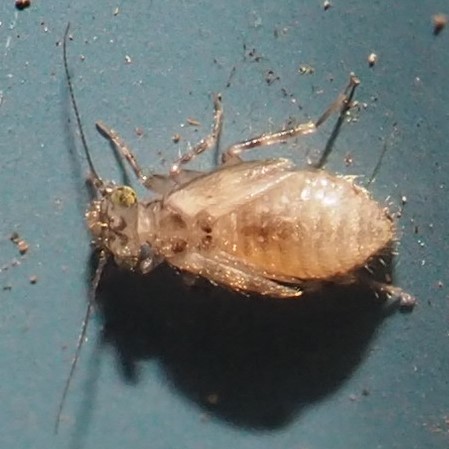


Here we are at the Beetles. First, this pretty black one with a red head. I don't have an identification for it yet, though the ID app in iNat suggested genus Paria.
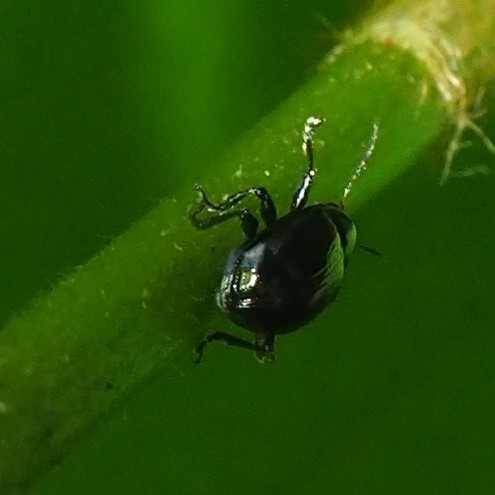
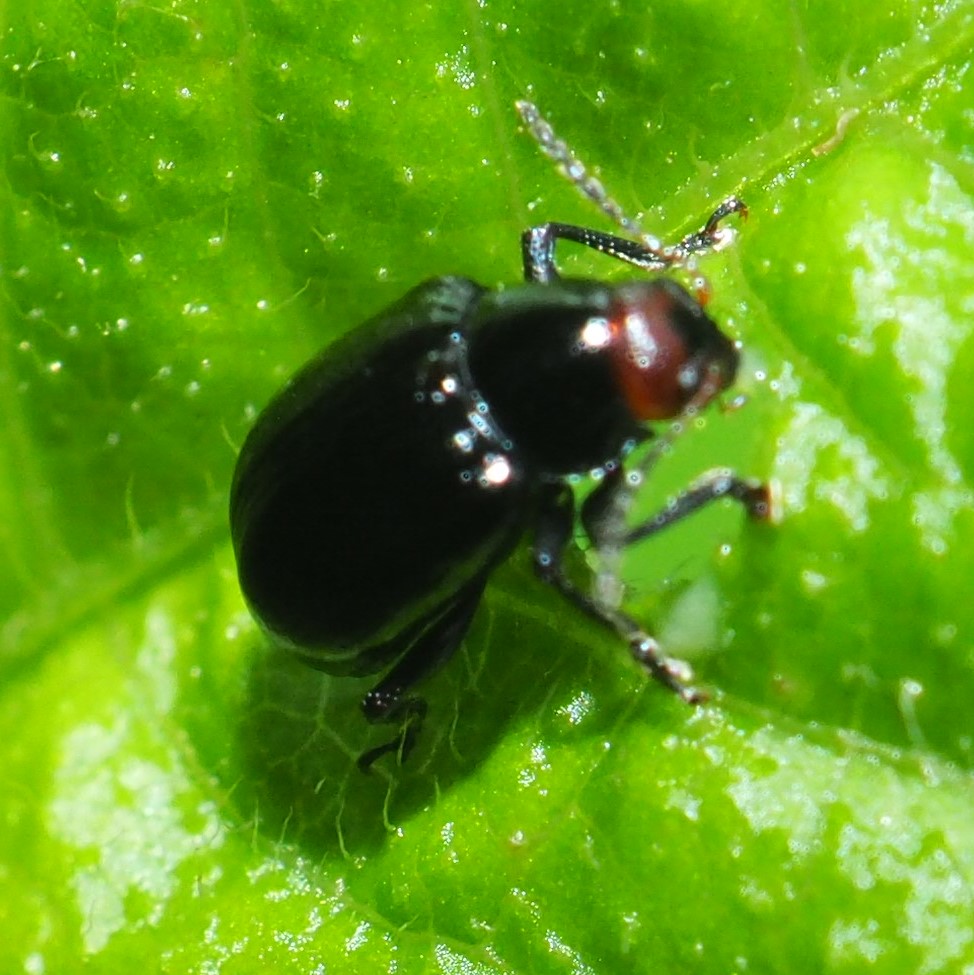

The first one here belongs to the genus Anaspis, but the second, which resembles Anaspis a bit, is one of those Tumbling Flower Beetles. It is so easy to confuse things with a slight resemblance! Third is the Dogwood Twig Borer.

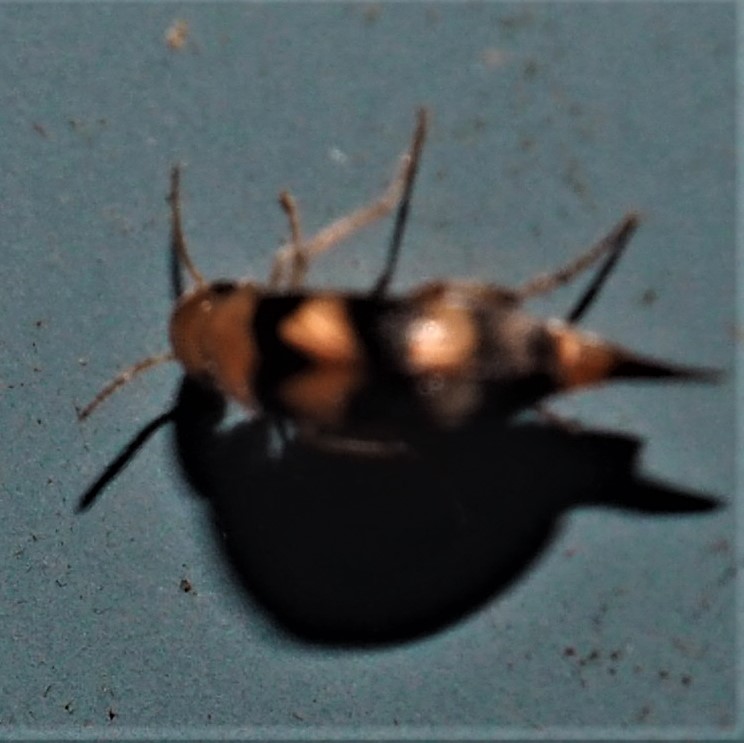

Remember how a week or so ago we had an Asian Lady Beetle grub that looked like picture 1? And that it later went into its pupal form, like picture 2 here? Well, the new thing that happened here was that the adult Asian Lady Beetle came out from the Puparium and spent some time sitting on top of it. For a few hours it gathered its strength and then wandered off as if it had never gone through this strange childhood... But it had! That's how Beetles grow up.
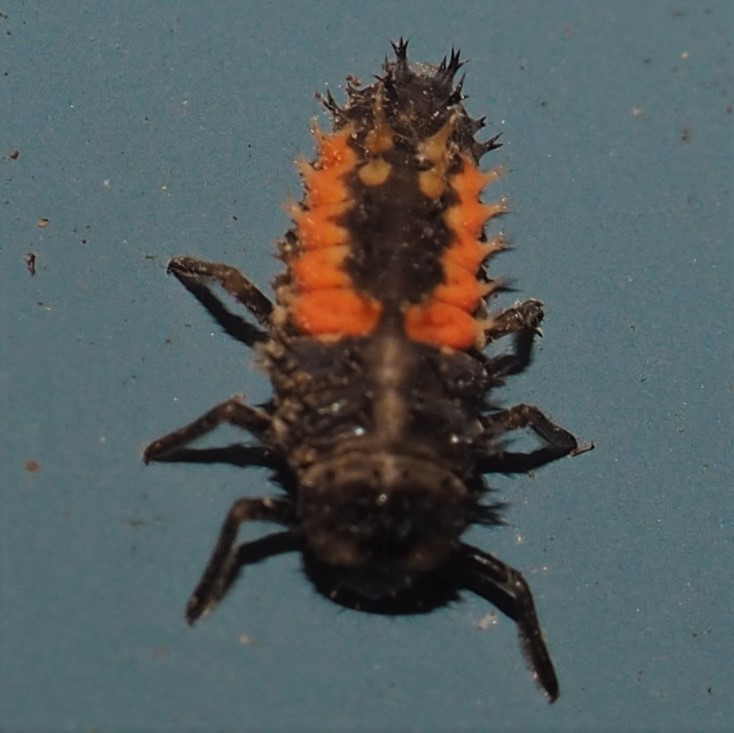

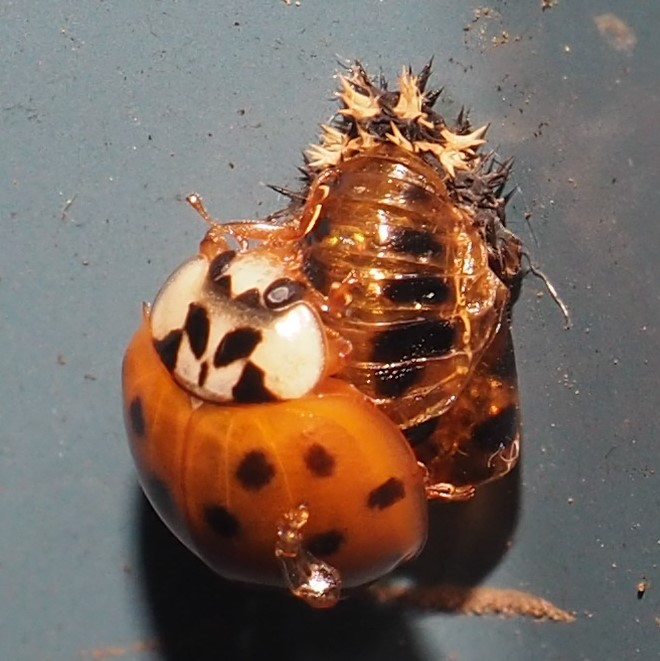
Just a few more Beetles. This first muddy fellow is some kind of Click Beetle. Next is that Leaf Miner Beetle, Sumitrosis inaequalis, that we have now met several times in the last few months. And finally we see (again!) the Strawberry Root Weevil!

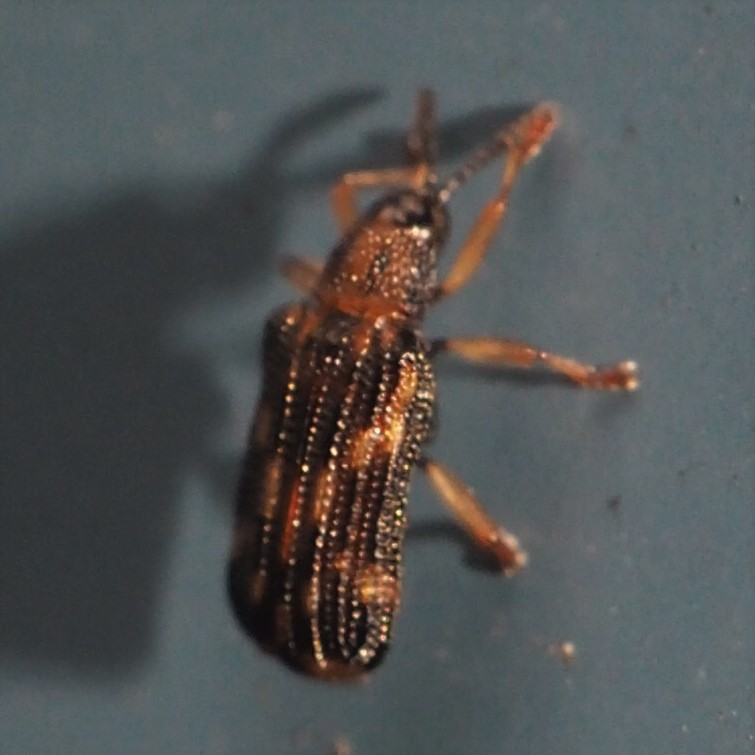
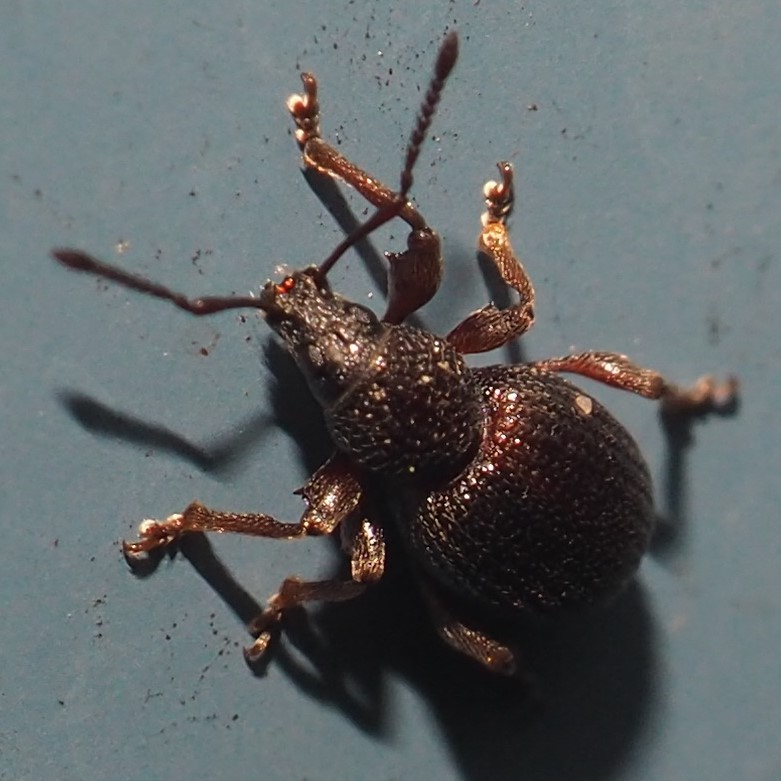
I always start out the Bugs section with the Zelus Assassin Bugs. Well, today we have something special. Back in July of 2018, I discovered an egg mass on the back of a Redbud leaf, and something amazing was happening. From each egg cell a tiny Zelus Assassin Bug was emerging - sort of backing out of the cell. Soon the region around the egg mass was full of newborn Zelus Assassin Bugs. I think they were Z. luridus, but I suppose the birth process for Z. tetracanthus will be similar. Now a few days ago, I started finding these egg masses, a couple on the underside of Oak leaves, and a couple underneath Walnut leaves. The cells in these masses are still moist and I suppose they will look similar to the one from 2018 in a day or so. Right now they look like picture 2 (earliest in process) or picture 3 (further along in process).
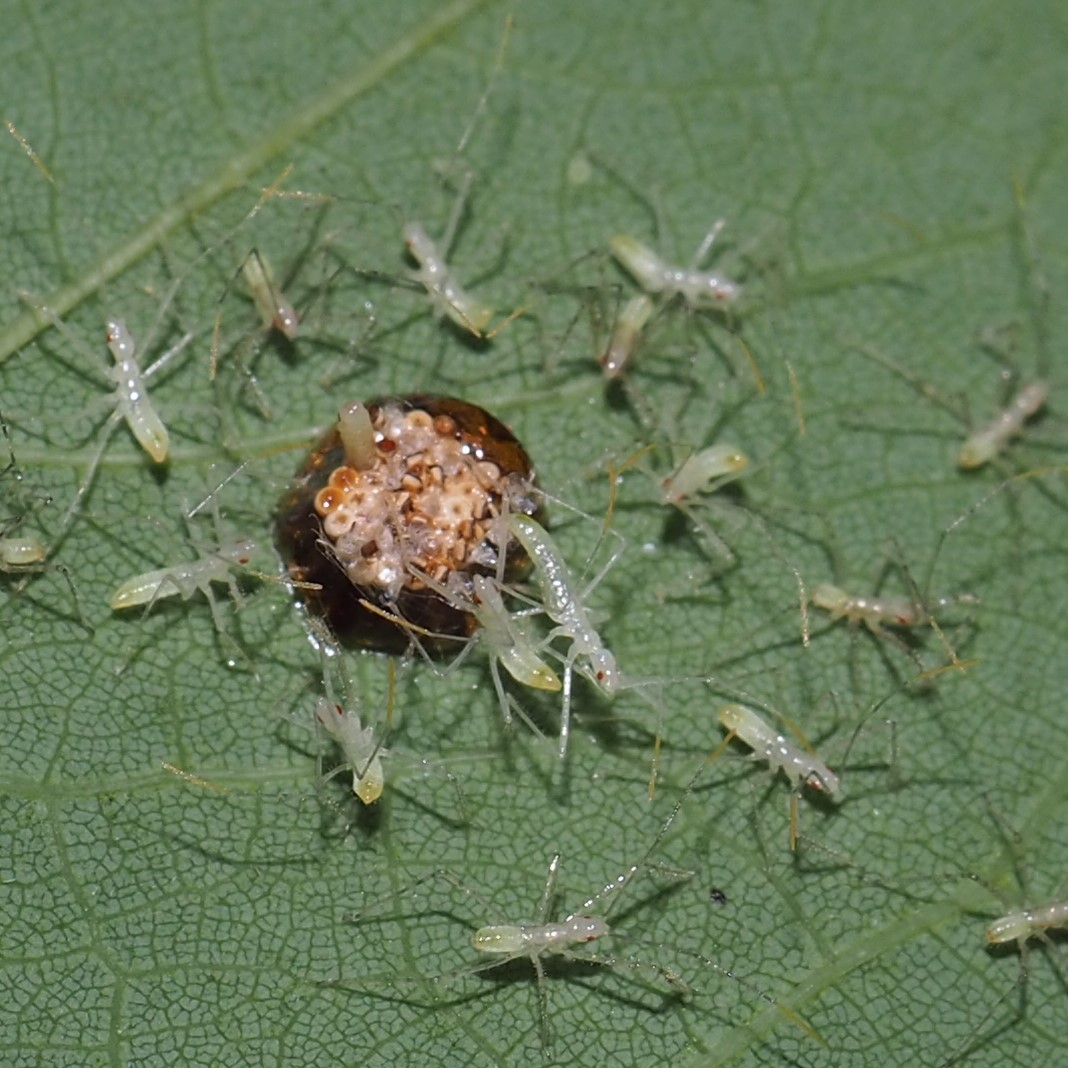
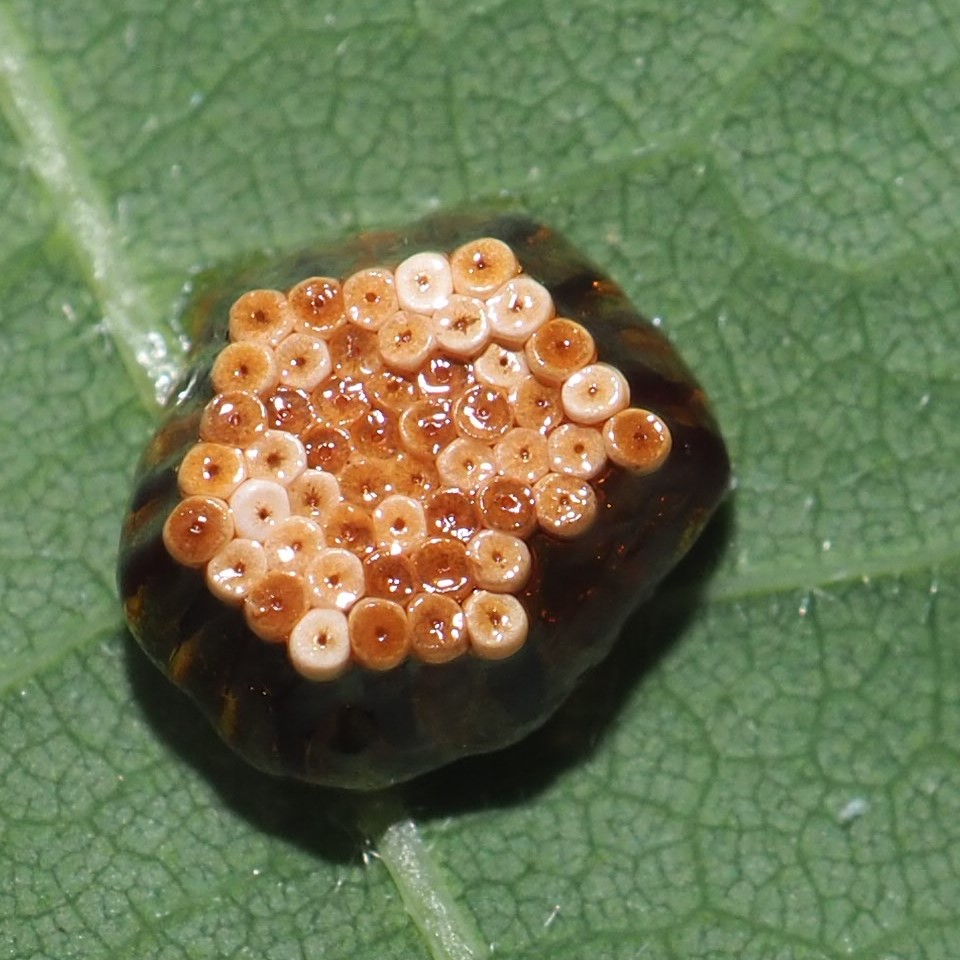
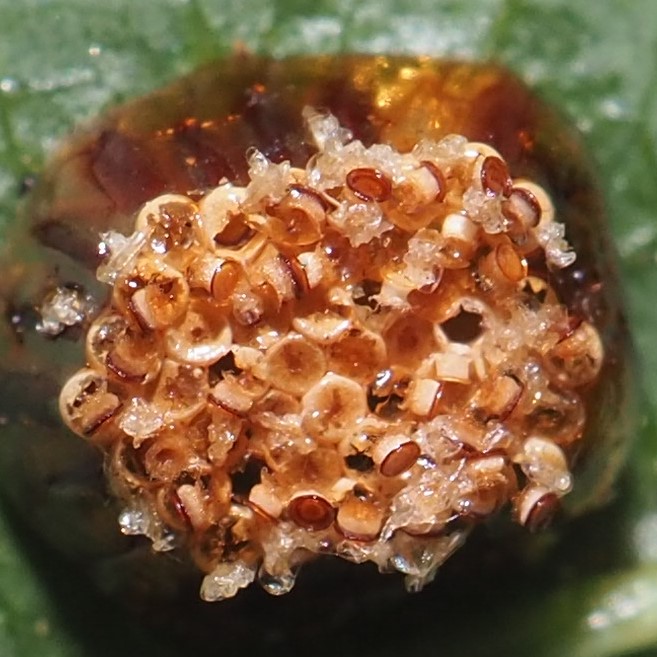
Yesterday and today I began seeing what looks like a Zelus Assassin Bug on the North Wall. But it has a well-defined white stripe down each side of the abdomen, and I wonder if it is another species of Assassin Bug. The first two pictures were taken on July 2, and the third (the adult version) on July 3. I'm thinking it is a different shoot off the Assassin Bug family tree.

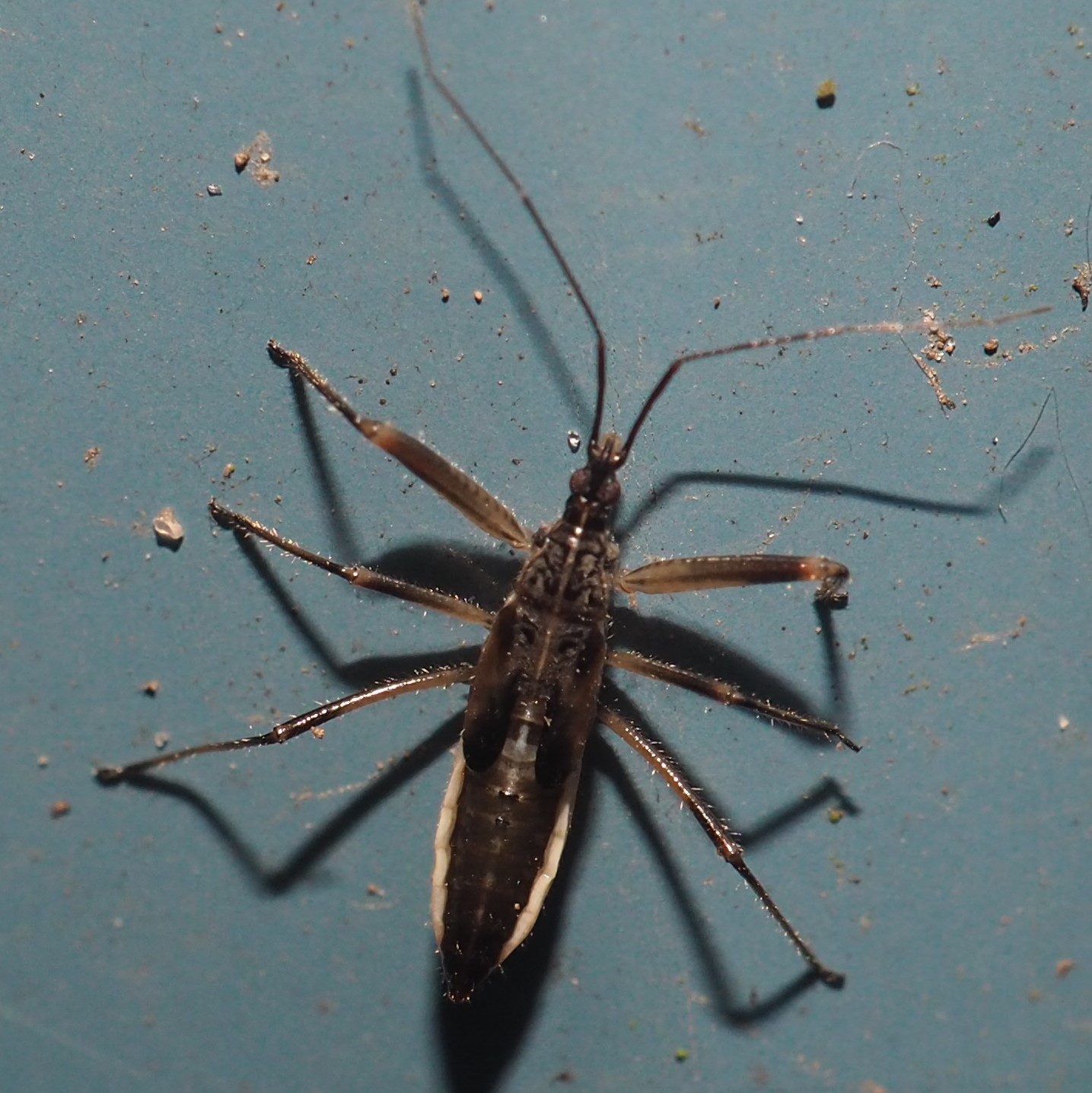
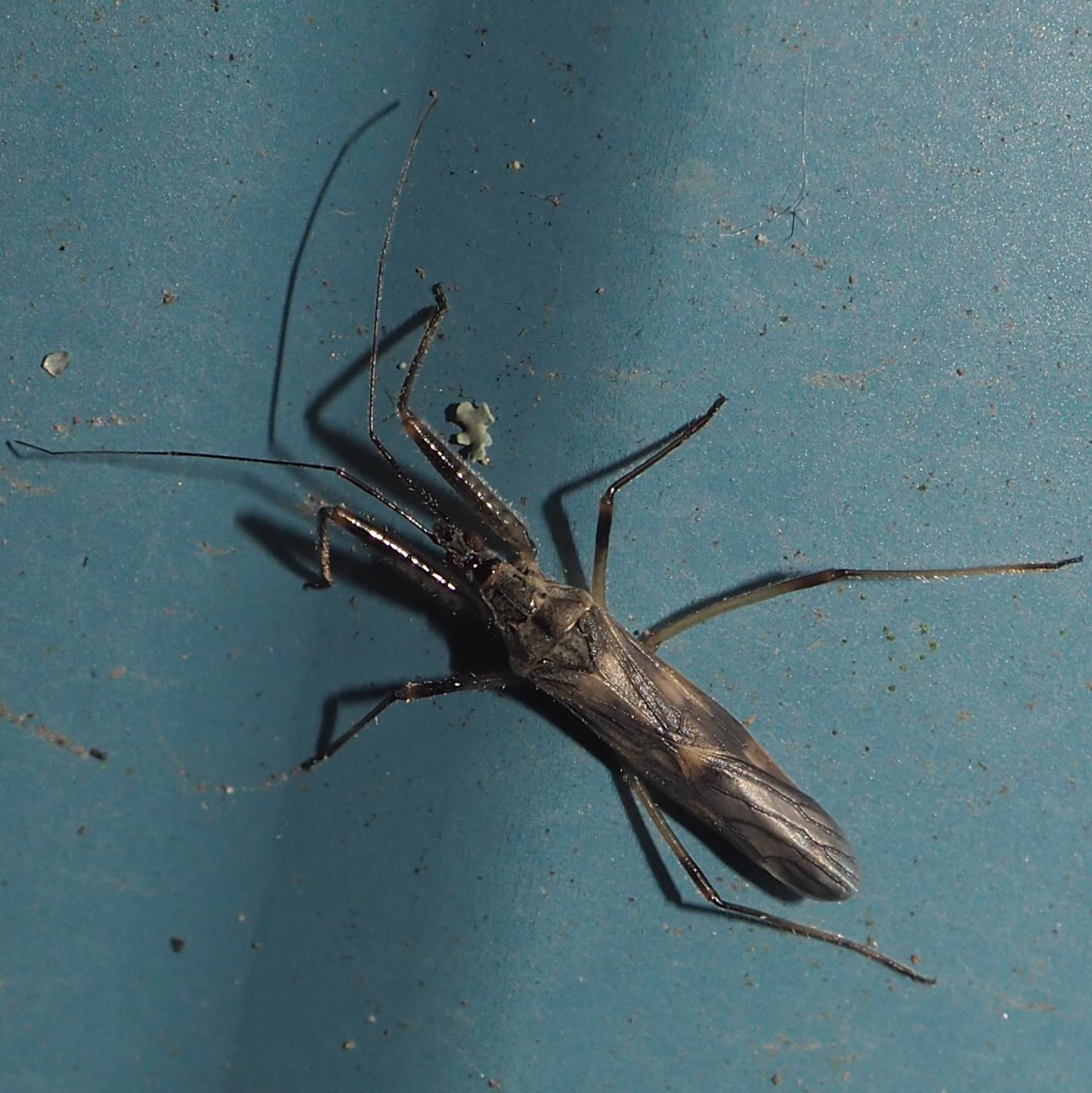
Since we traditionally move from the Assassin Bugs to the Leafhoppers, let's take a look at our catch of the week. Here are three in the genus Aphrodes. I think they may be two different species or sexes. If you see one in your Goldenrod, please send me a picture, or, better yet, submit it to iNaturalist.org.

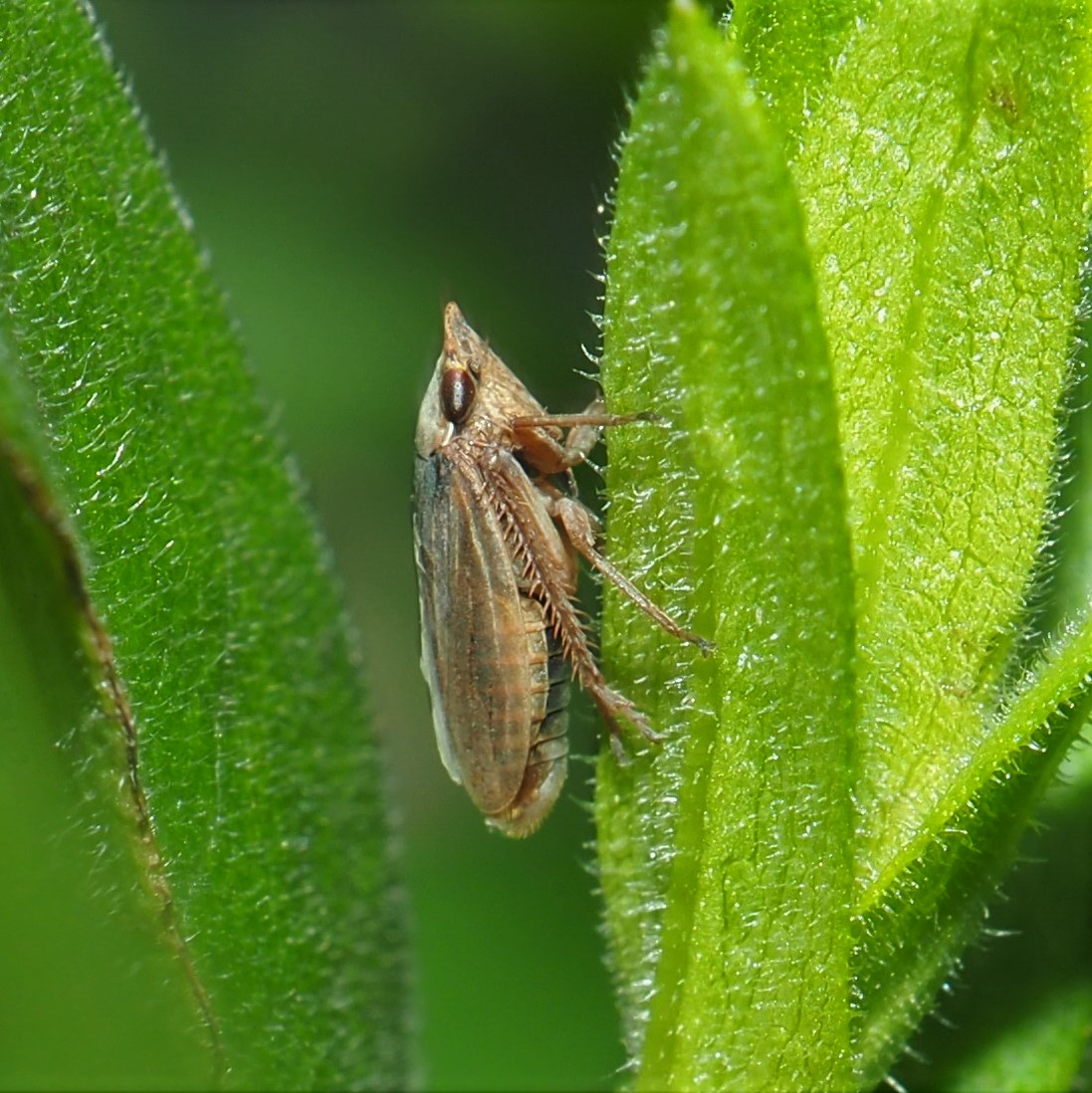
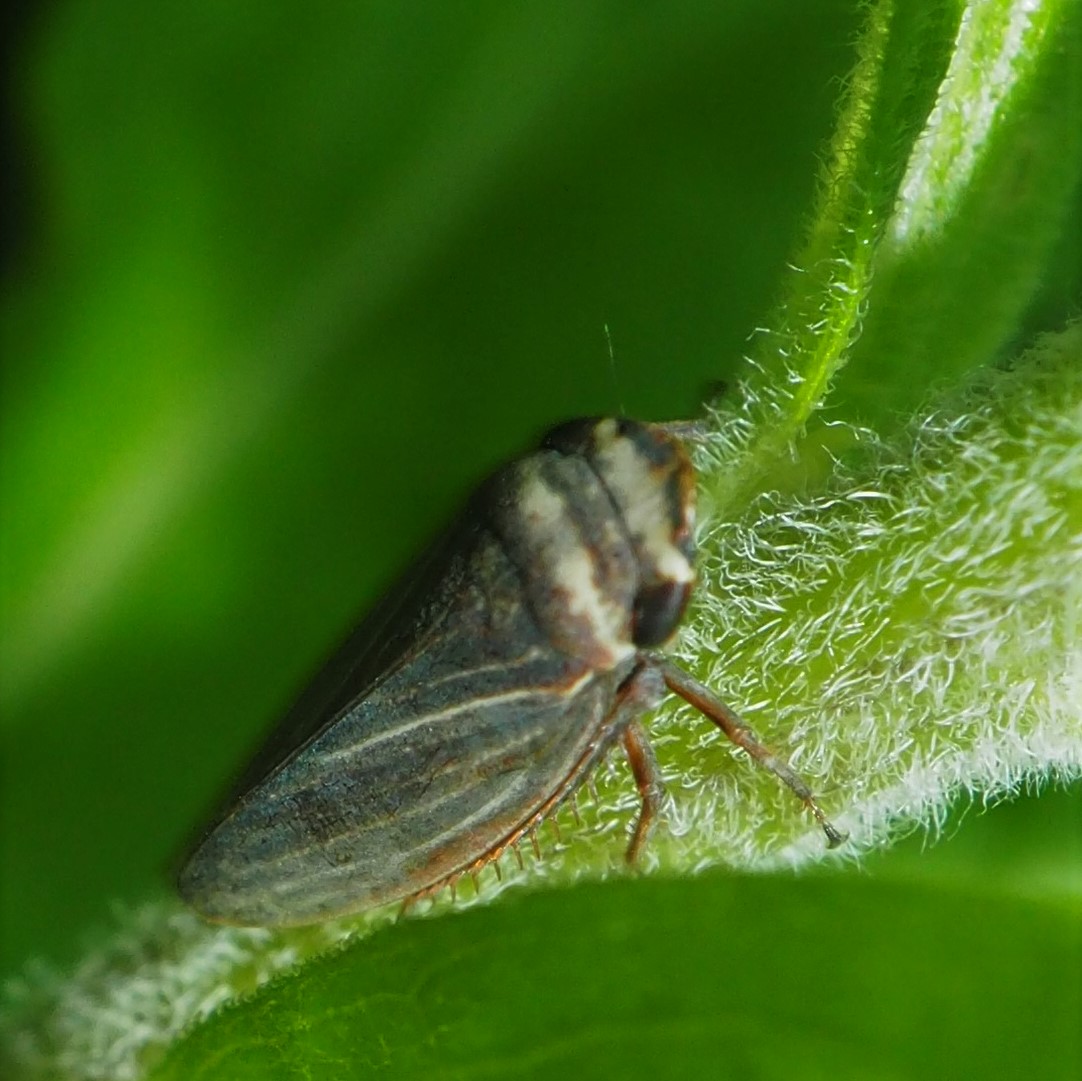
On Friday evening I seemed to be having a Blue day. Kyle Kittelberger thinks this first one may be in the genus Cedusa. A few minutes later on another bit of Goldenrod, there was this one (pictures 2 and 3) - what a beauty!
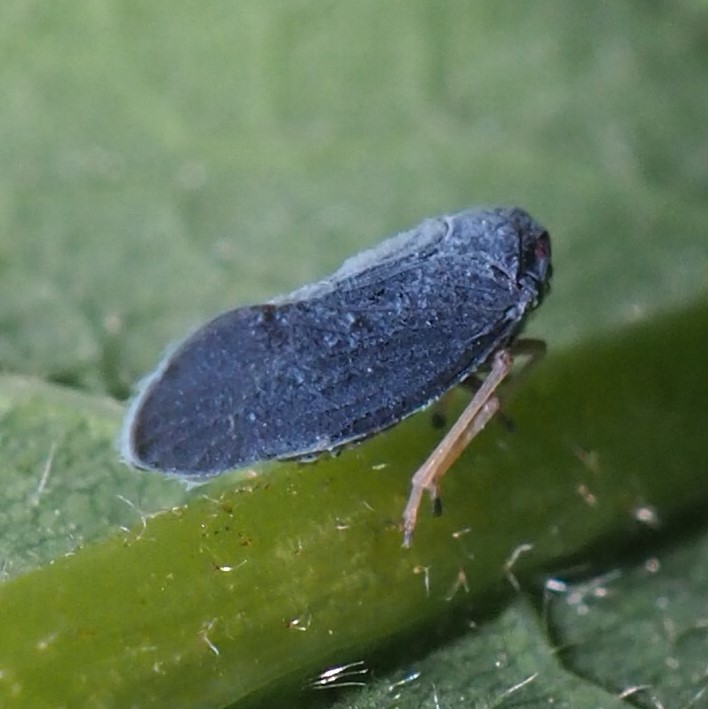
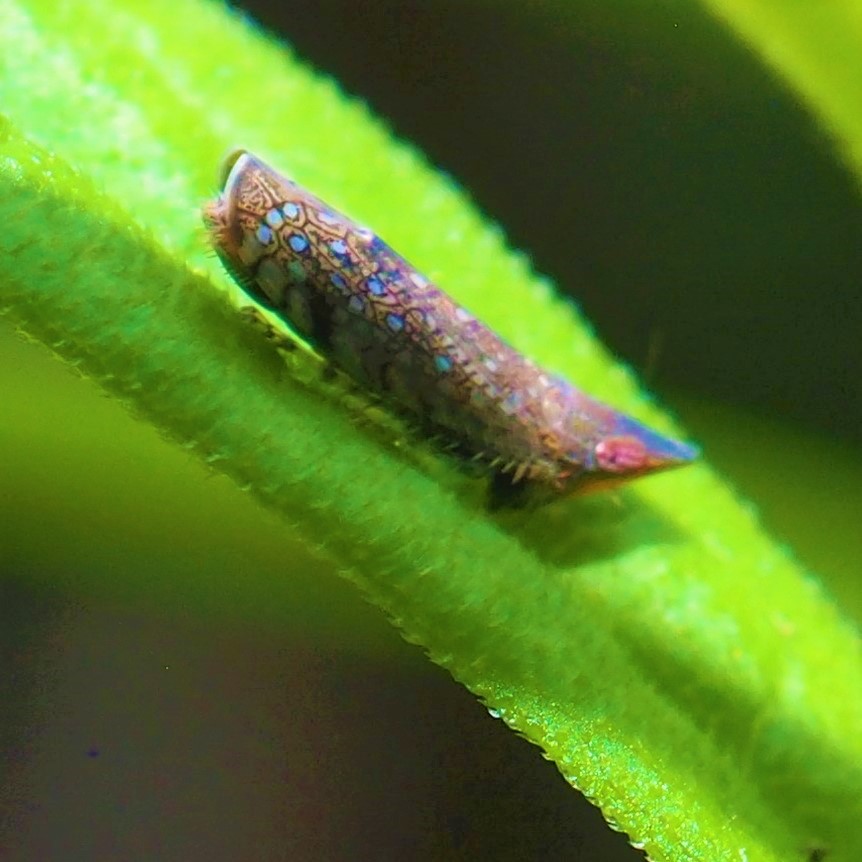
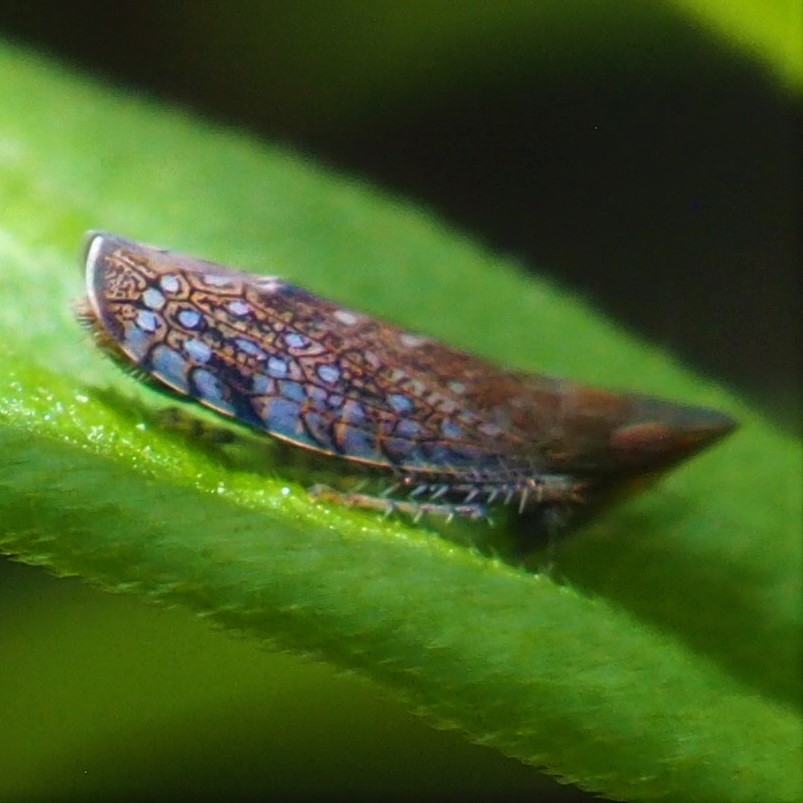
The Japanese Leafhopper comes in many color combos: golds, blues, greys. I'm moving the blue one to the top because it really goes with the previous group of Blues Brothers.
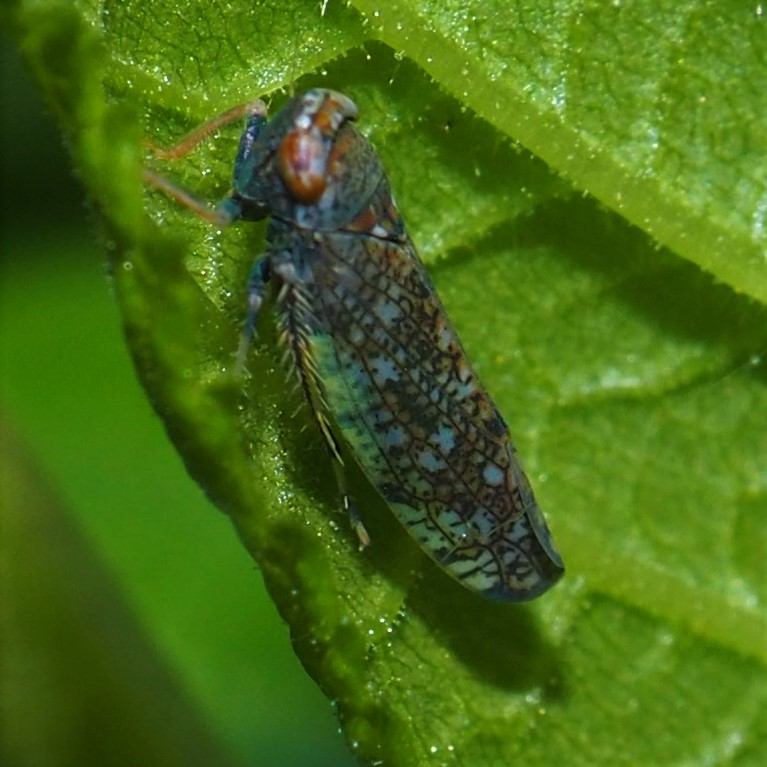
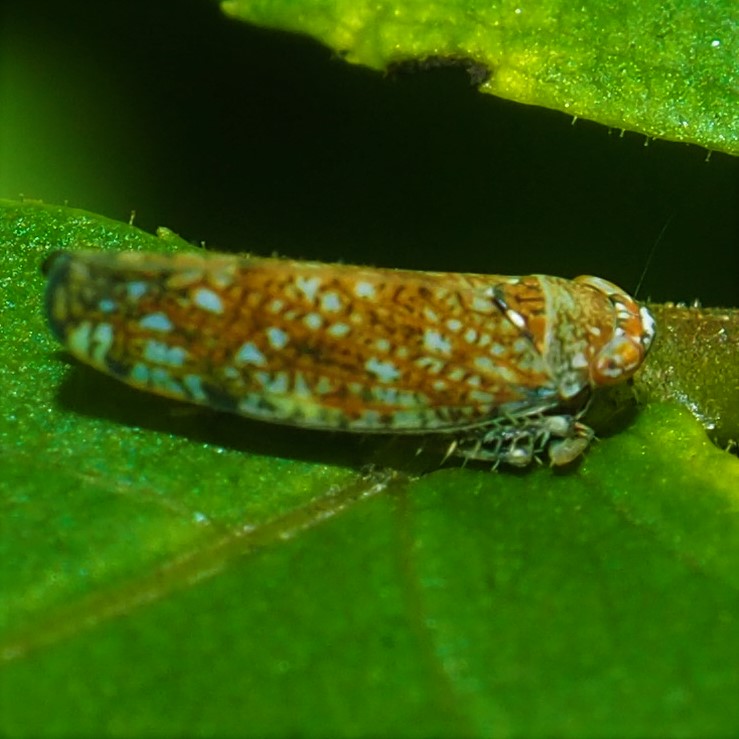
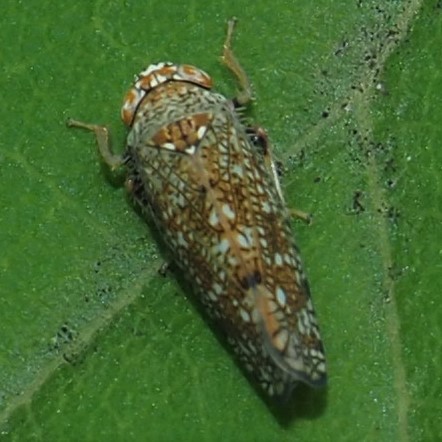
Now we are seeing both nymph and adult of the Japanese Maple Leafhopper. Here is the nymph, followed by two shots of the adult.
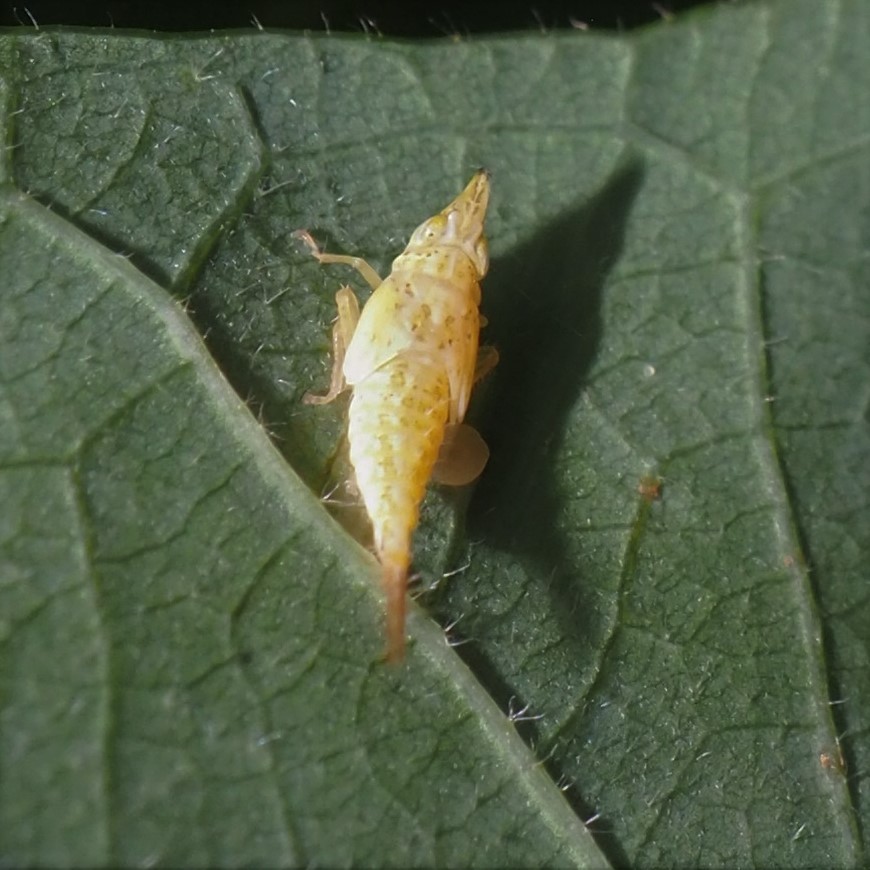
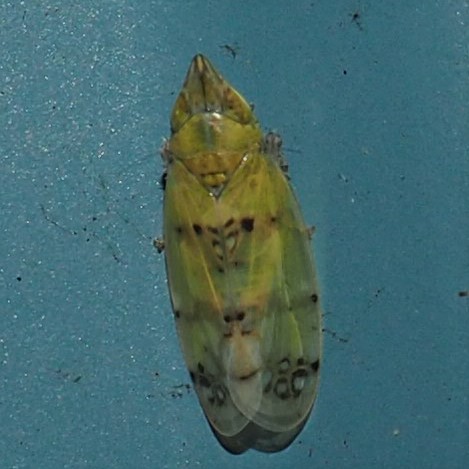
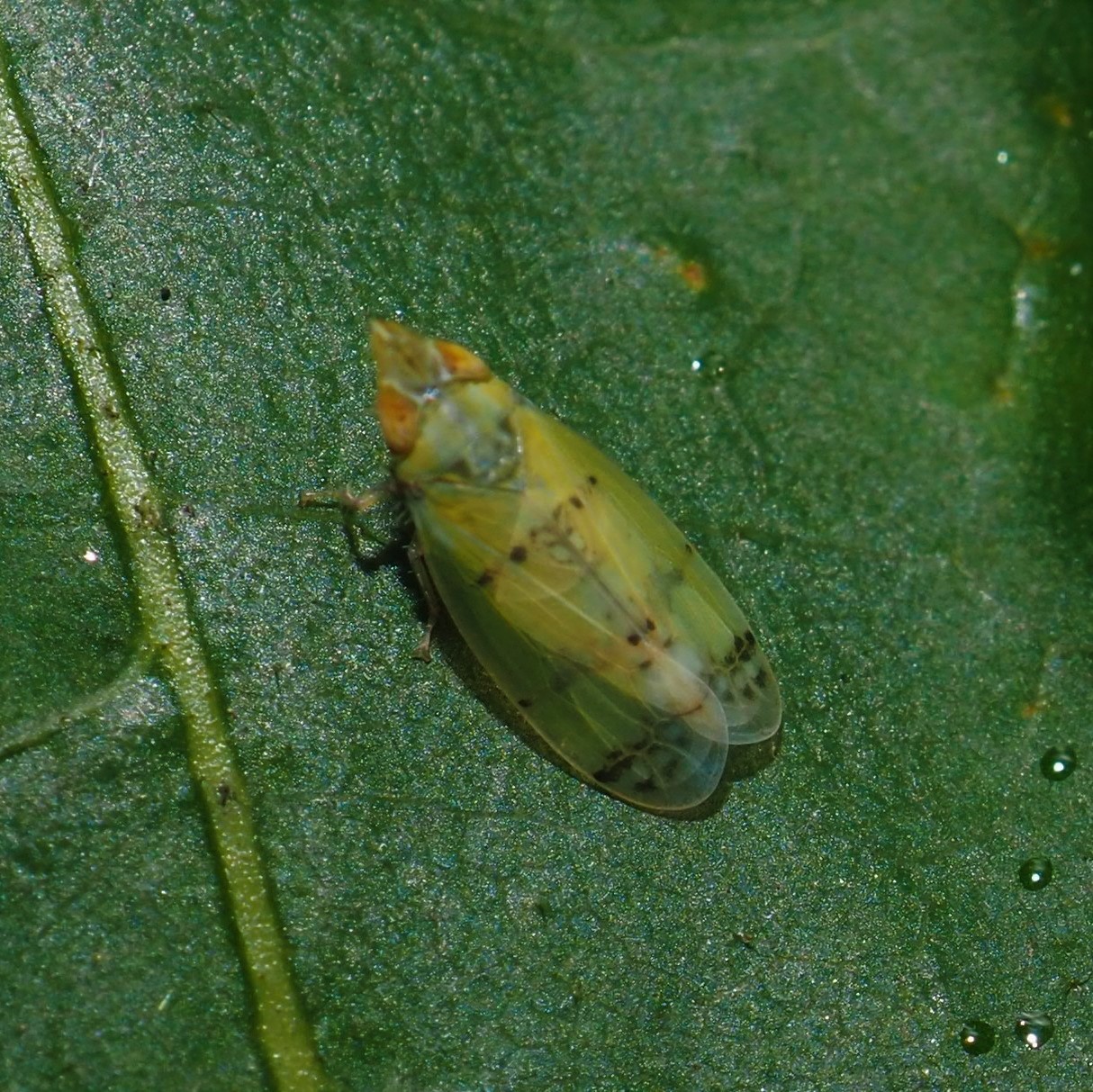
Remember how the Coppery Leafhopper (Jikradia olitoria) has a nymph with retroussee tail? Here it is in yellows, and then a couple of poses in greenish yellows. The fourth one really is the same bug as the third one. I couldn't believe it till I rotated it a few times.
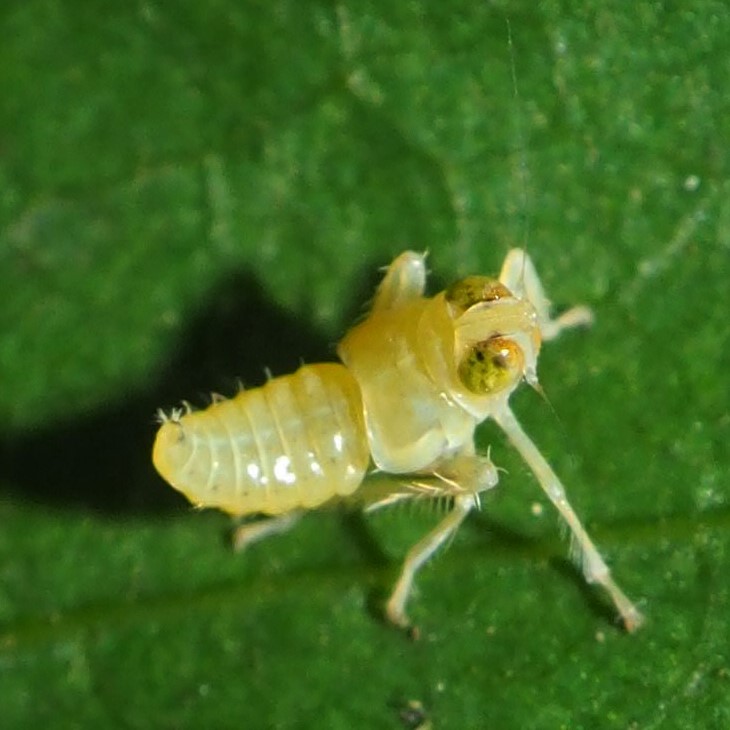
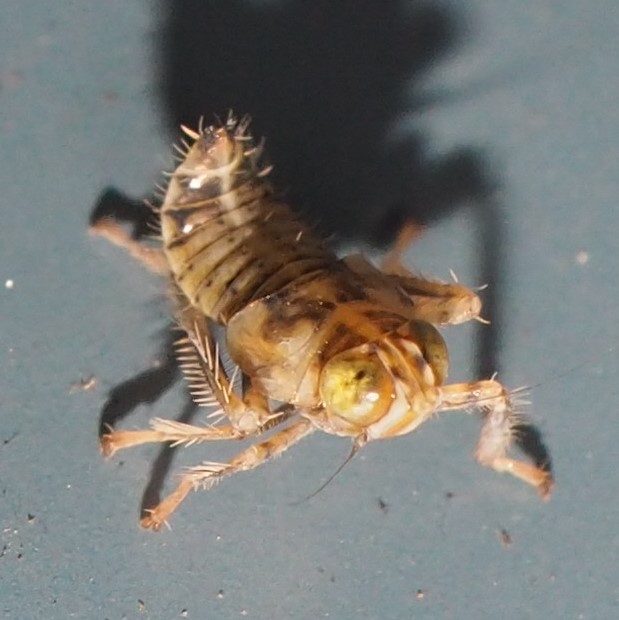
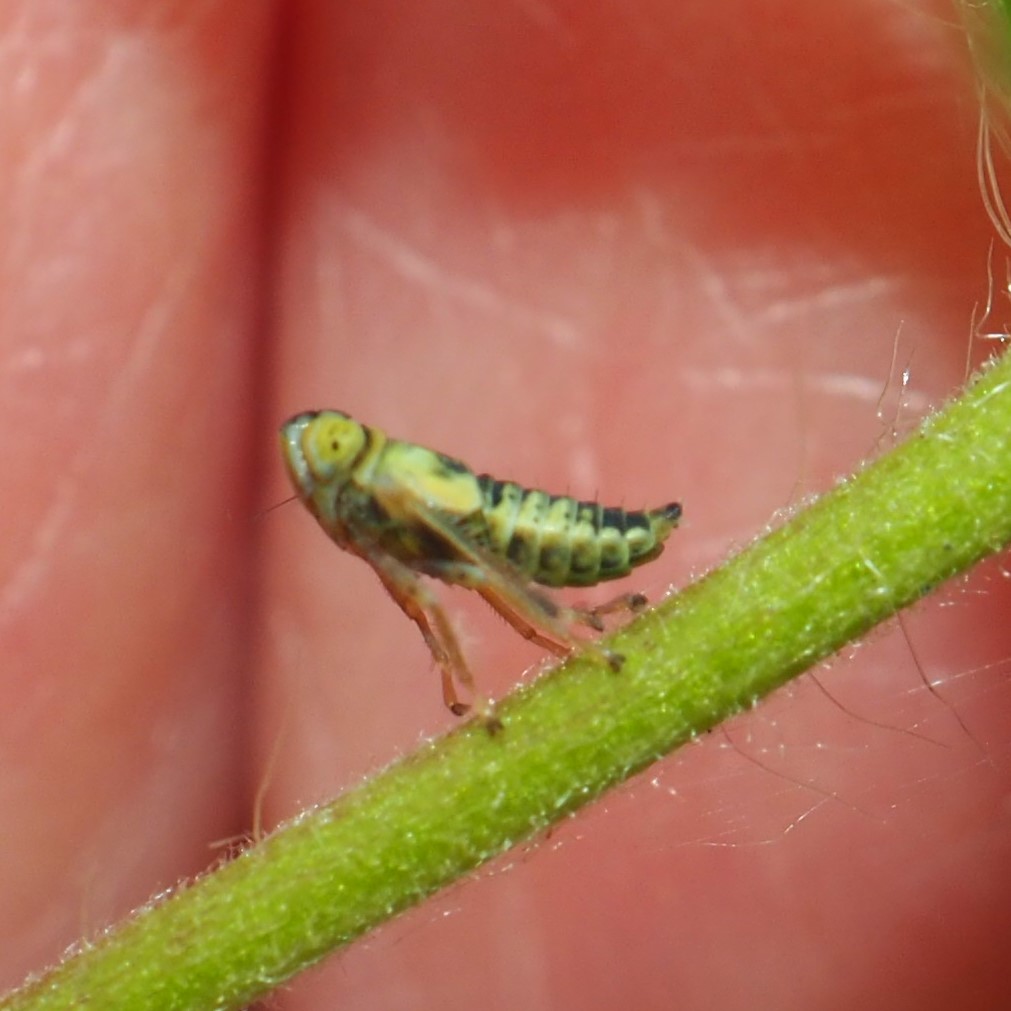
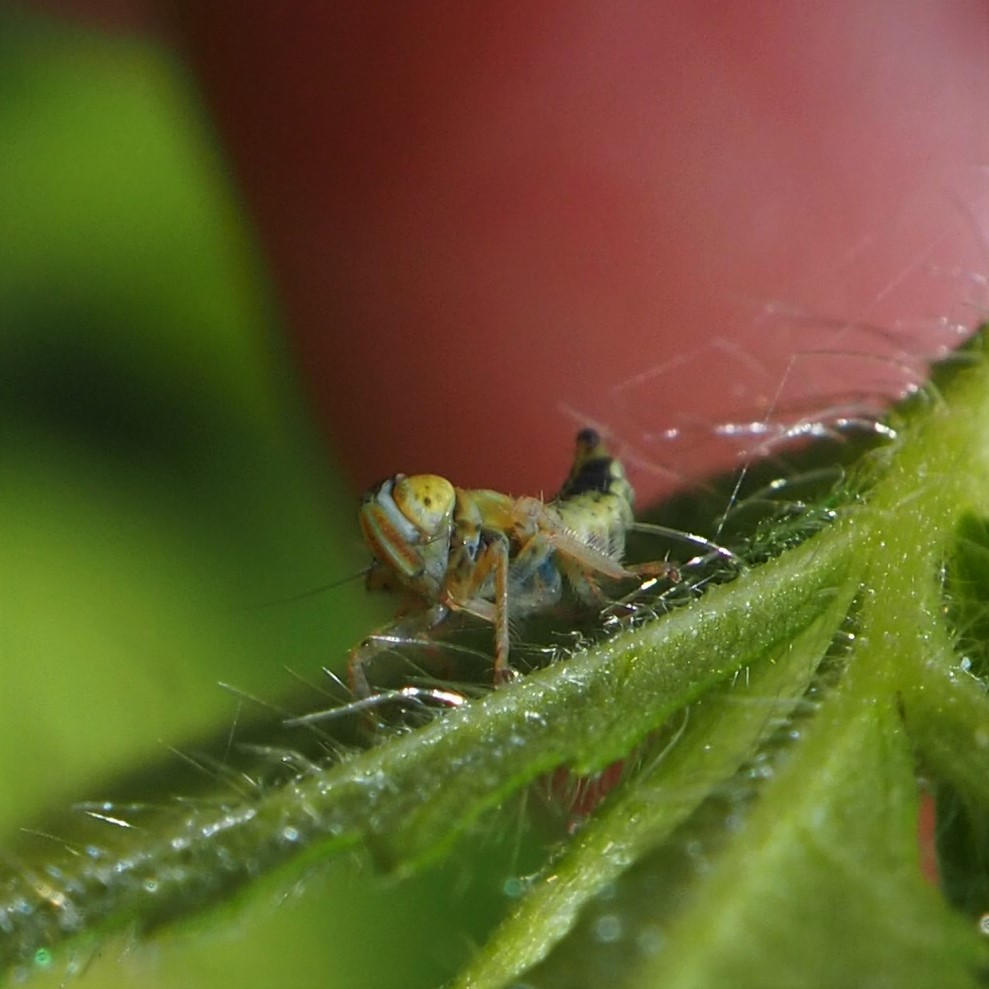
The colors in number 4 above reminded me of the Graphocephala Leafhoppers. Usually I think first of the red-blue striped ones, but this week we got the red and green variation called the Rhododendron Leafhopper. Last night I ran into this monster. At first I thought this was a mating pair, but when I saw picture 3, I realized this was a common red-blue Graphocephala leafhopper but it was in the process of shedding the skin from a previous instar! Can you wrap your eyes around that? Those extra whitish limbs in picture 3 belong to the old skin!

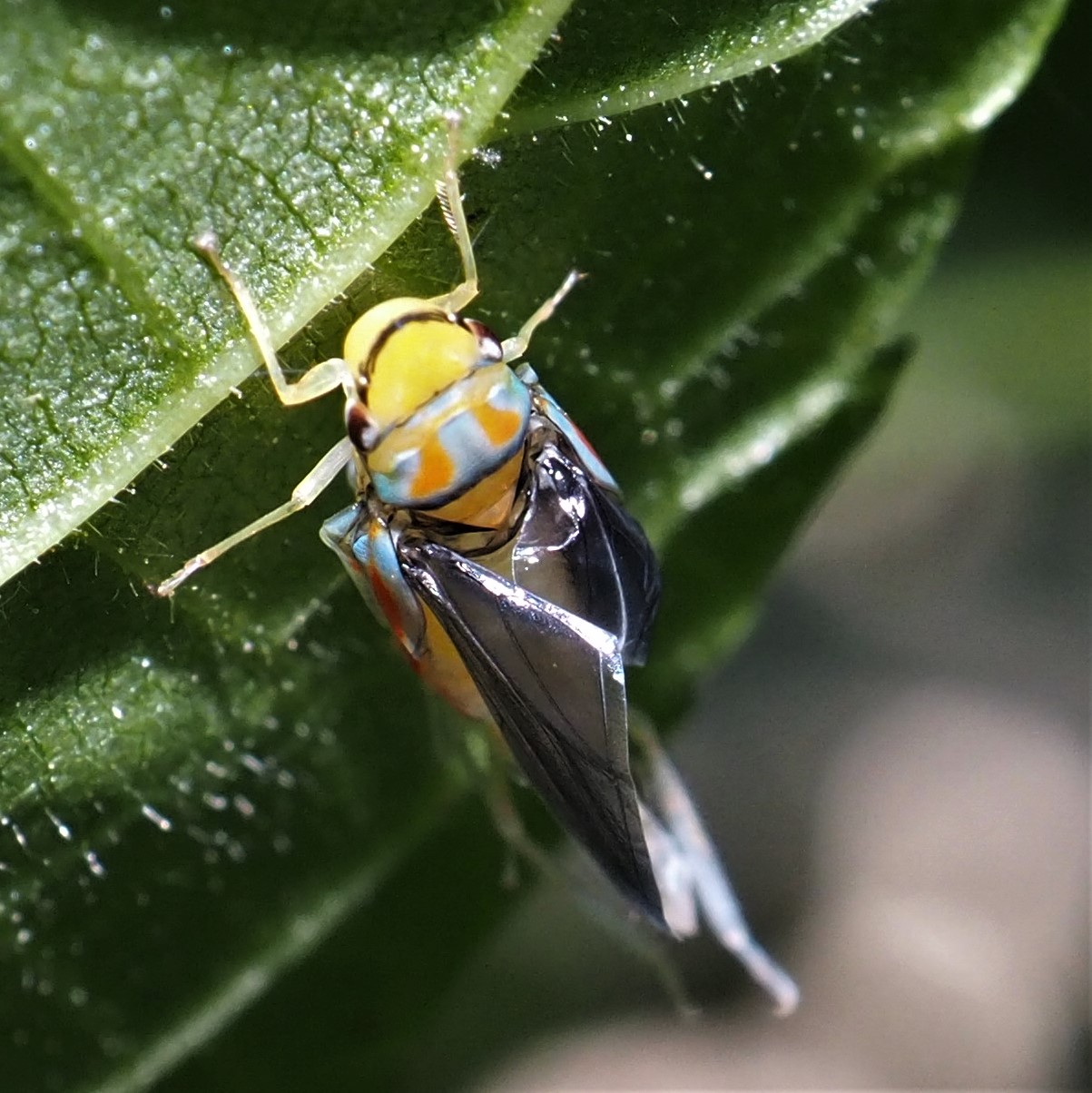
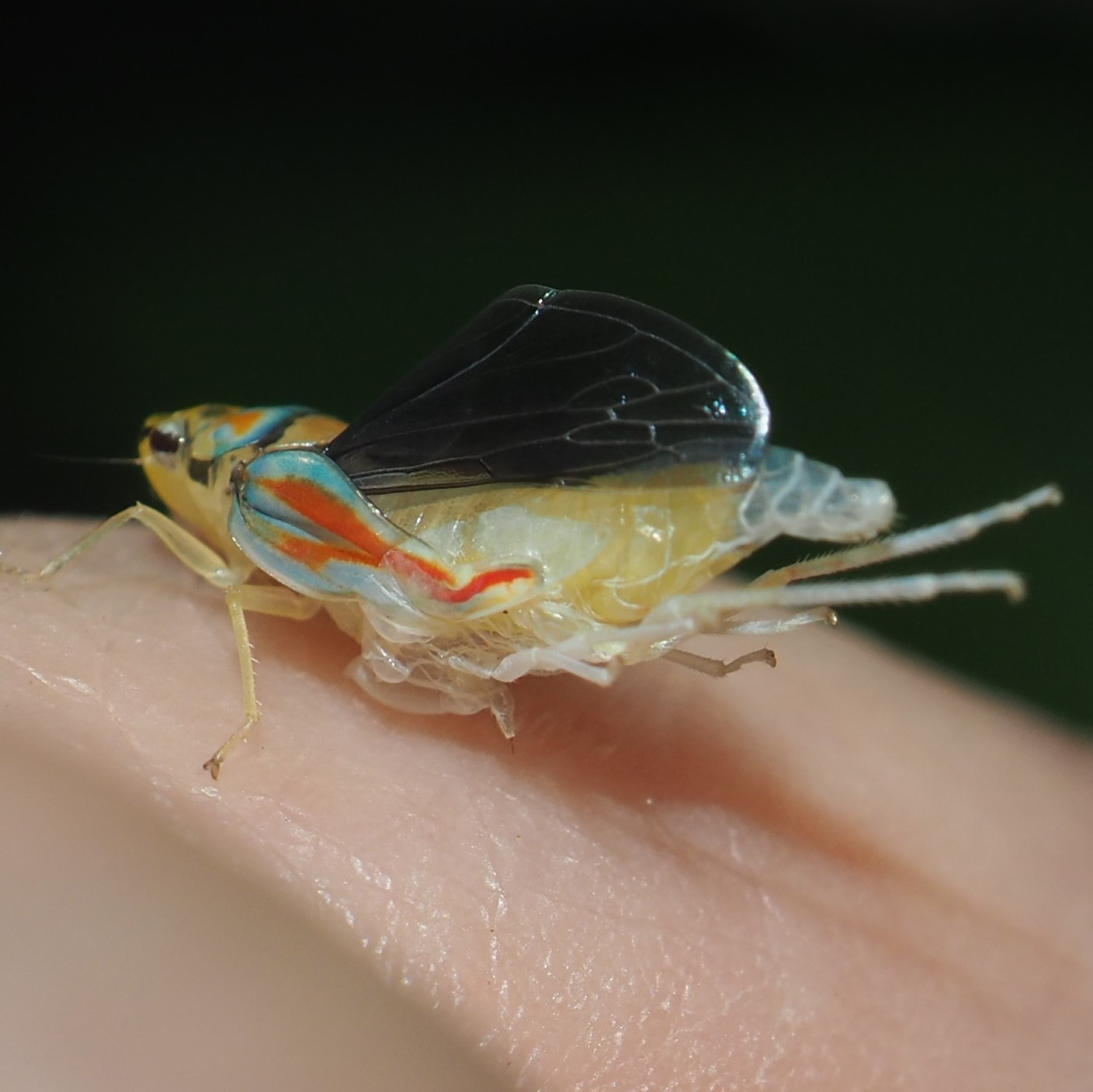
This little Bug was racing up the shop wall to escape the lens of Fear, and so I thought it was just a different view of the 4-spotted Leafhopper, Agallia quadripunctata. But when I compared it with that picture, it is NOT the same. So I still have to try to get an ID on it. Picture 2 is also a mystery Leafhopper. It seems to have just moulted an old skin, and in that case we aren't surprised that the color is just gradually developing from face down. It might have been a Japanese Maple Leafhopper - the shape of the cast-off skin is right. What do you think? In picture 3, we also still have to compare this Scaphoideus leafhopper to get an ID.
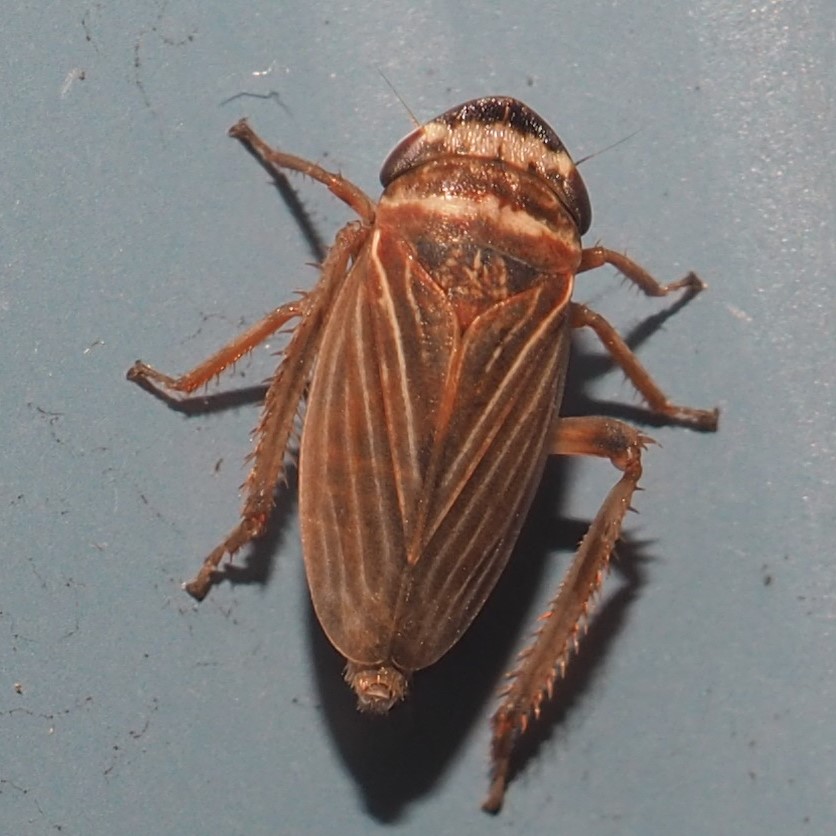
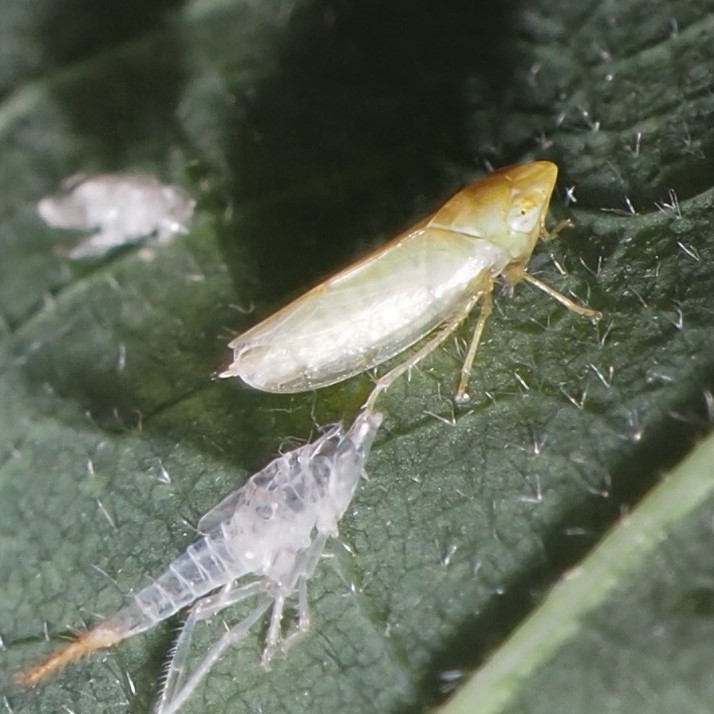
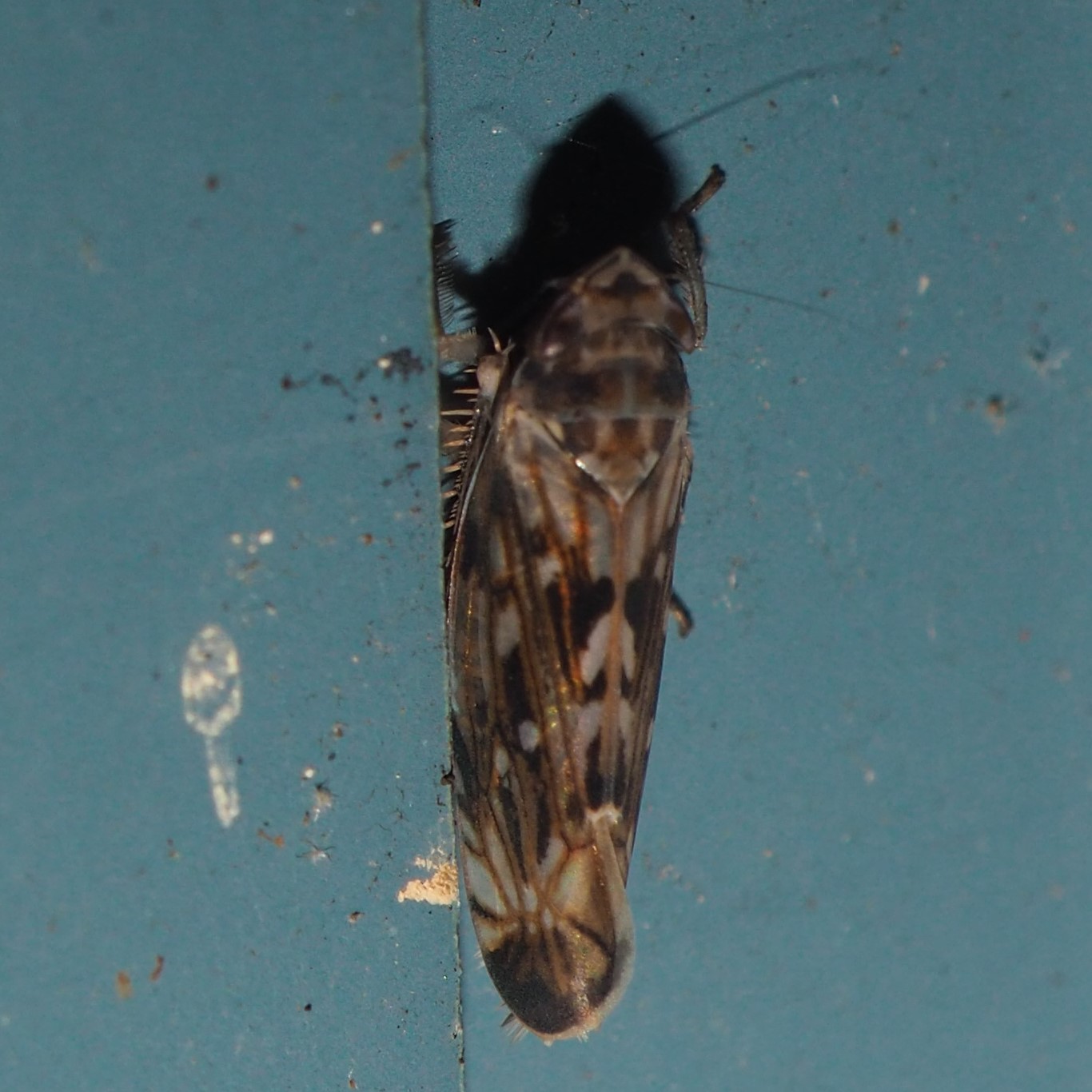
All right, my friends, we have reached the point where we examine the True Bugs. These include the Plant Bugs, like this Obscure Plant Bug. Why do I always goof and call it the Obtuse Plant Bug (there's no such thing, AFAIK.)? That's your new word for today, As Far As I Know. The Phytocoris are also Plant Bugs, like this one munching on Spider Eggs. The third is a bright red Plant Bug, which may actually be a baby Boxelder Bug. I know they are all red in most of their nymphal life.
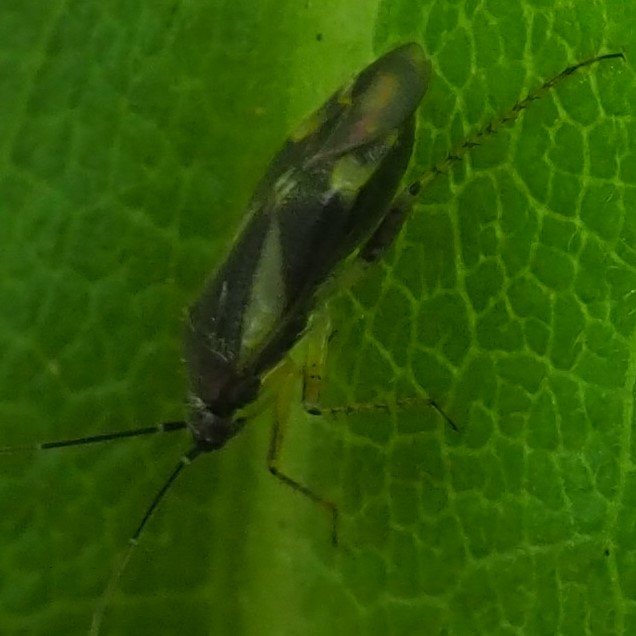
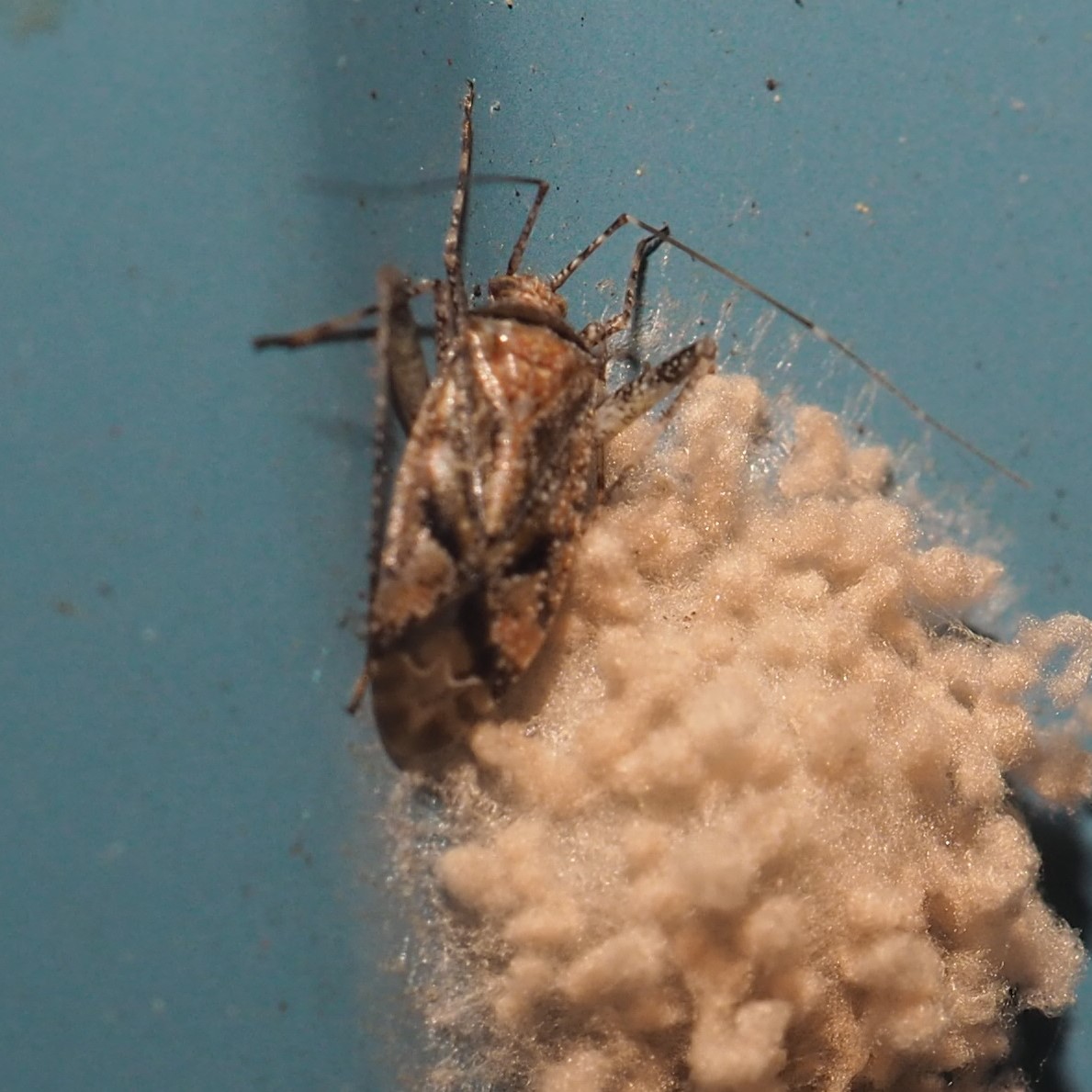
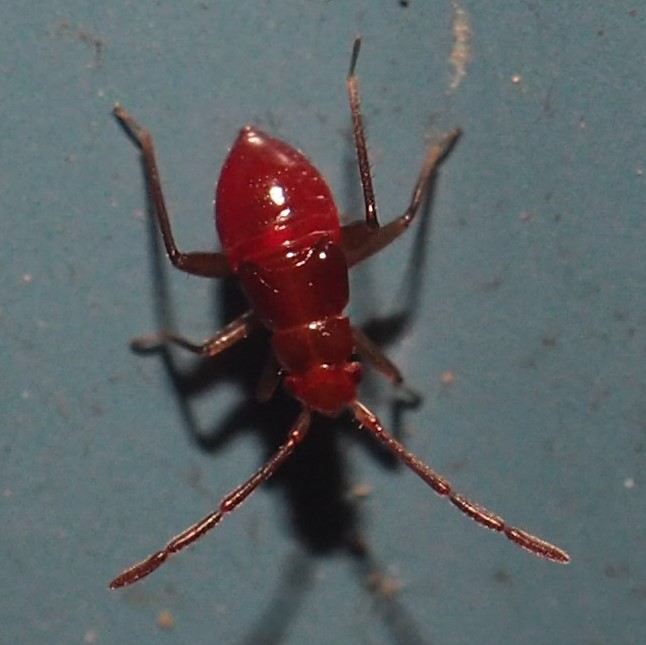
The evil beautiful Four-lined Plant Bug is another example. It and its friends can do in all sorts of plants, like Mint, Chinese Lanterns, etc. Then there are the Lygus Plant Bugs (picture 2) and this sparkly black Bug (picture 4).
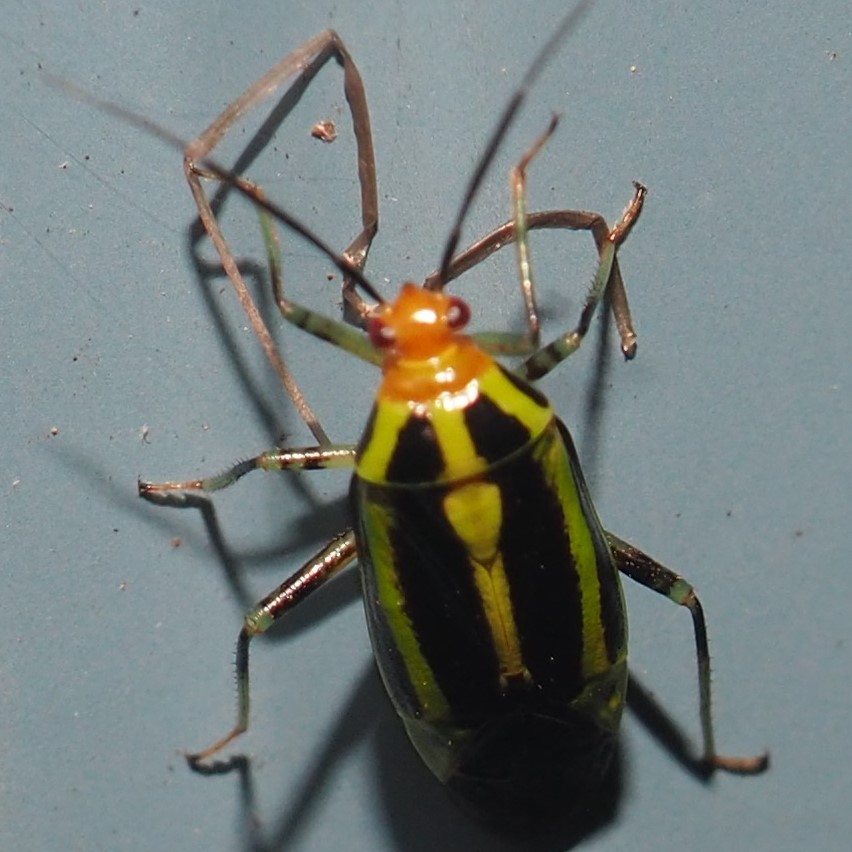
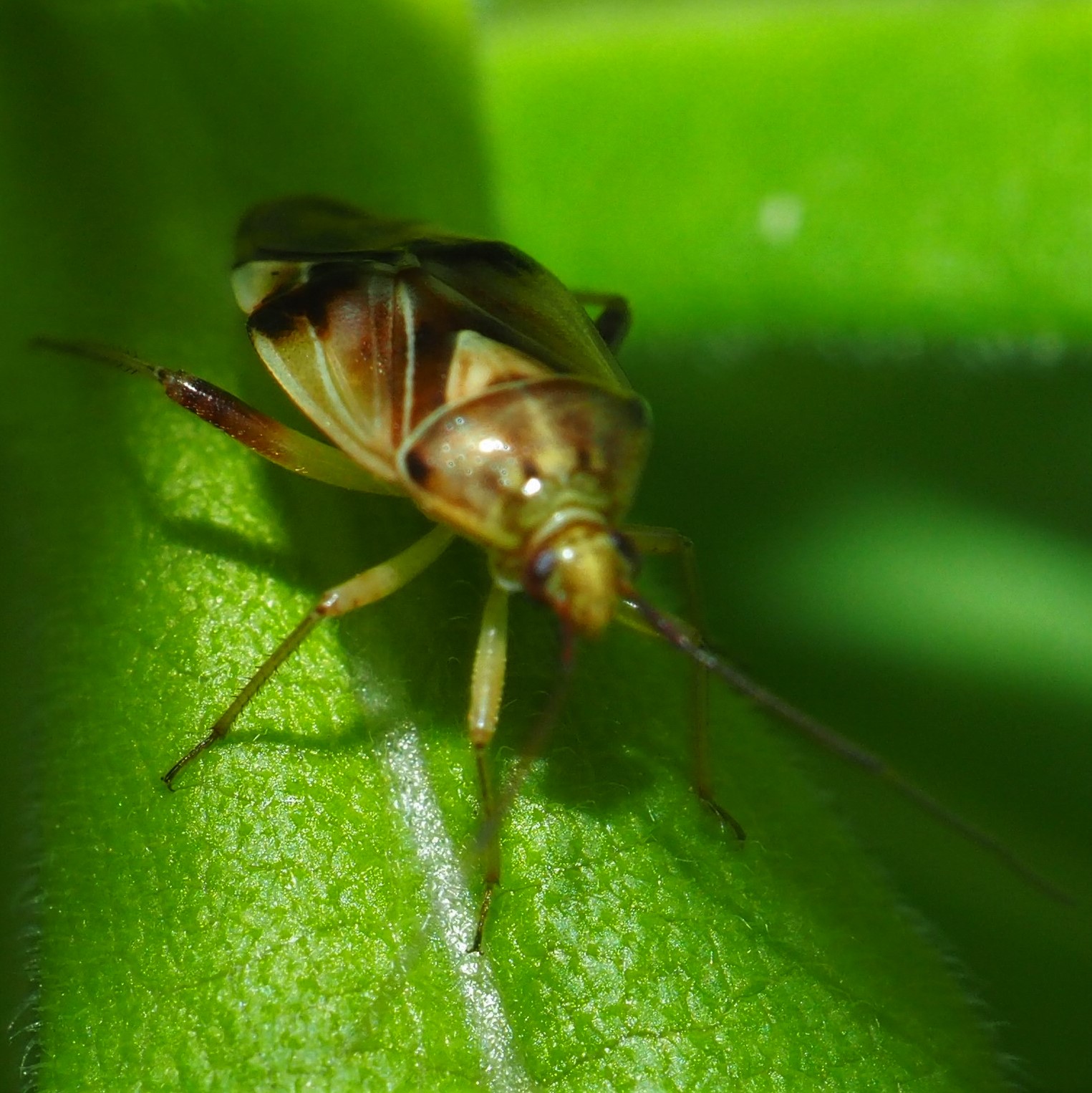
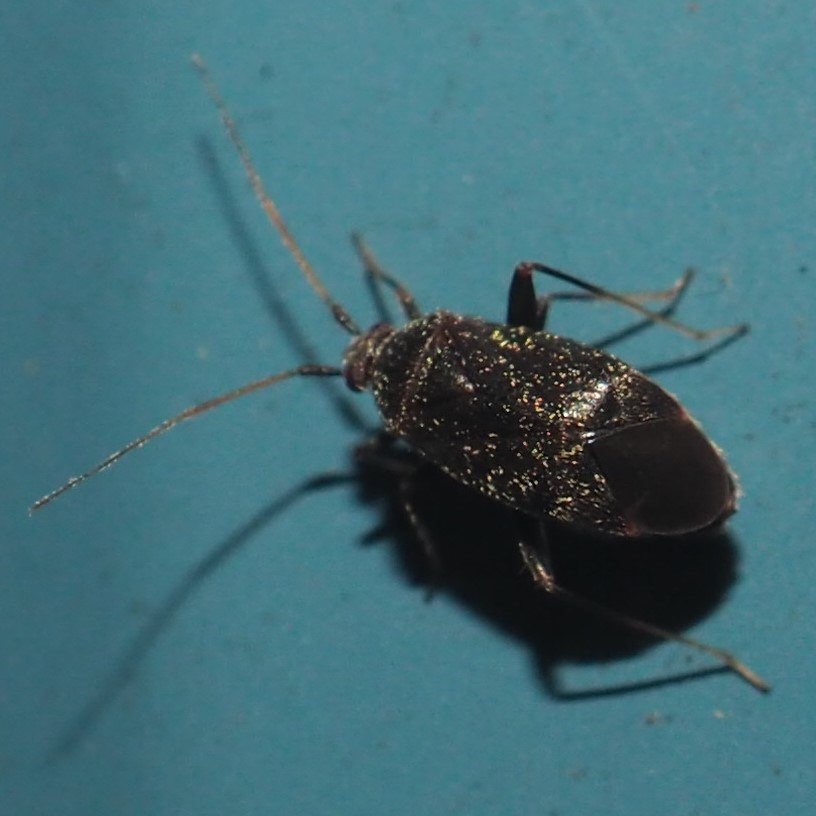
First is another Plant Bug - I mentioned it when talking about Ant Mimics, but it is really a Plant Bug. Good old Paraxenetus guttulatus. Then here is something that I thought at first was a Stilt Bug - it is actually a child of the Stilt Bugs but has no stilts, except perhaps for its longish back legs.. Third is the White-margined Burrower Bug in the raspberry bushes.
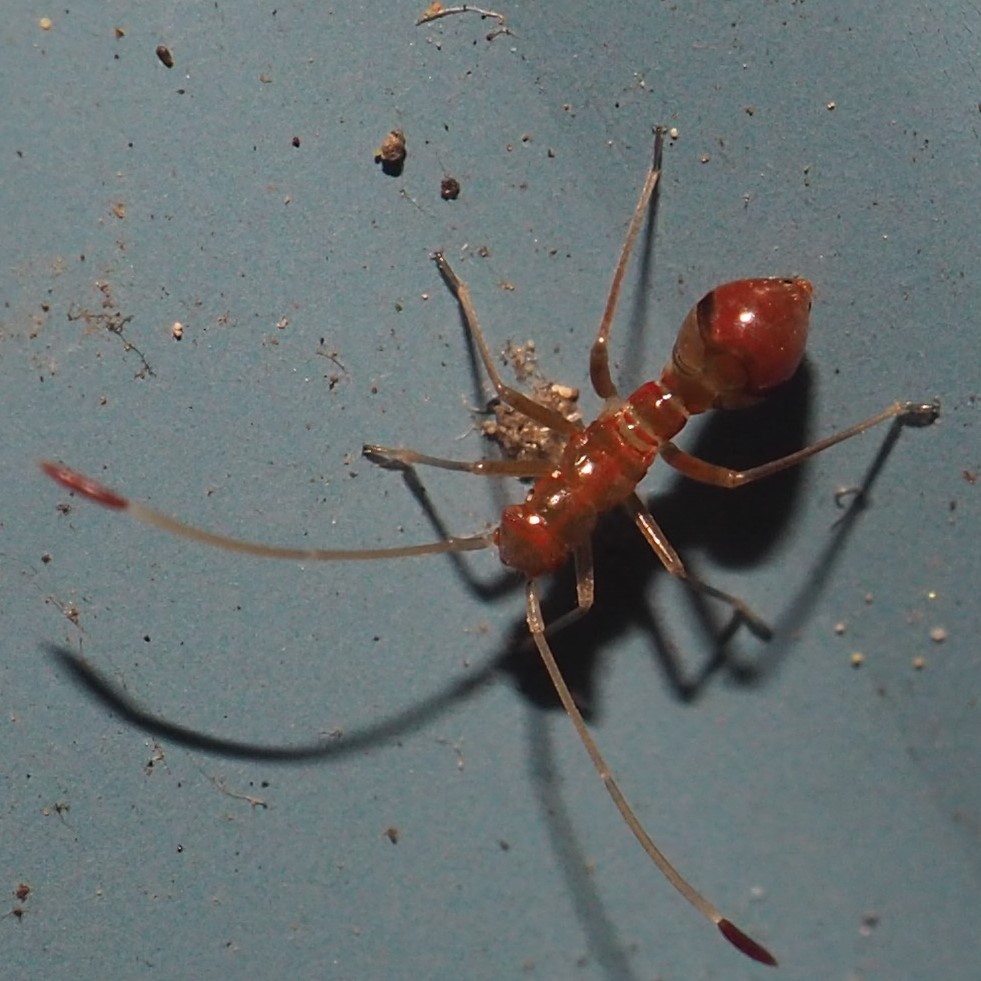
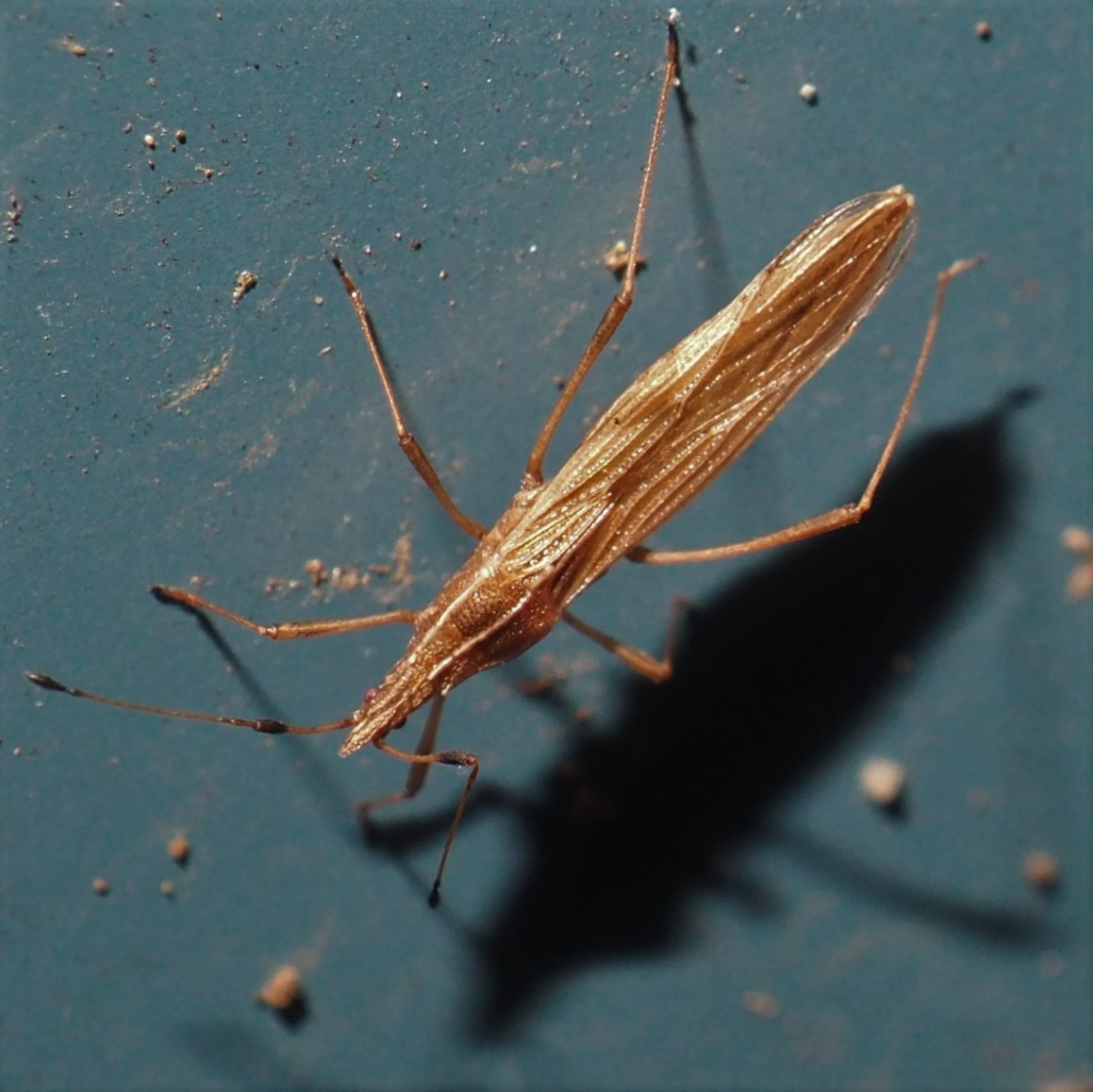
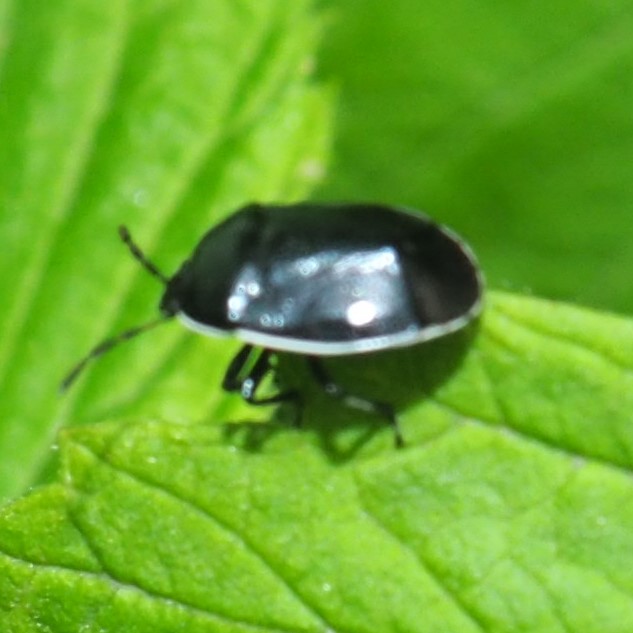
Often you can tell the difference between kinds of Stink Bugs by the pattern of colors in the antennae, but this Stink Bug is an exception. Most of the members of the genus Euschistus have the same pattern, so we can't ID this bug by considering the antennal pattern. Next is a nymphal Stink Bug. These nymphs aren't very well documented but it seems to be one of the instars of one of the Soldier Stink Bugs. Third is a nymph of the Leaf-footed Bug Acanthocephala terminalis. I like to think of them as disco dancers where the "head" is actually the abdomen of the bug and the arms are the bug's legs.
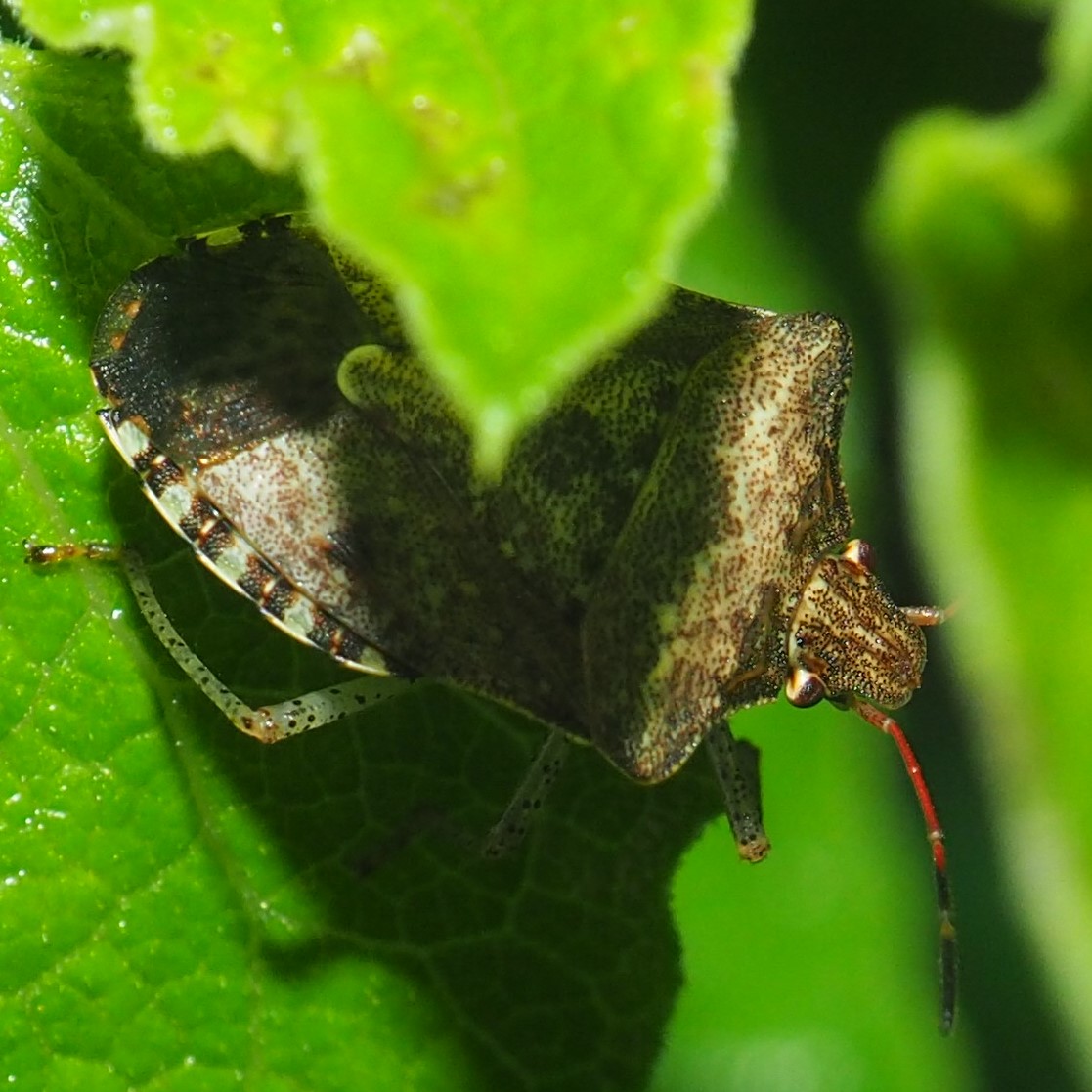
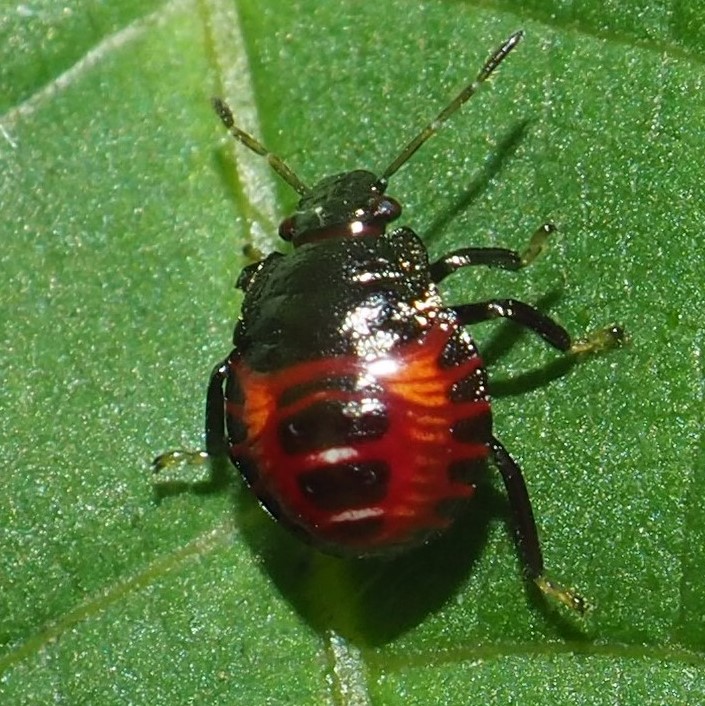
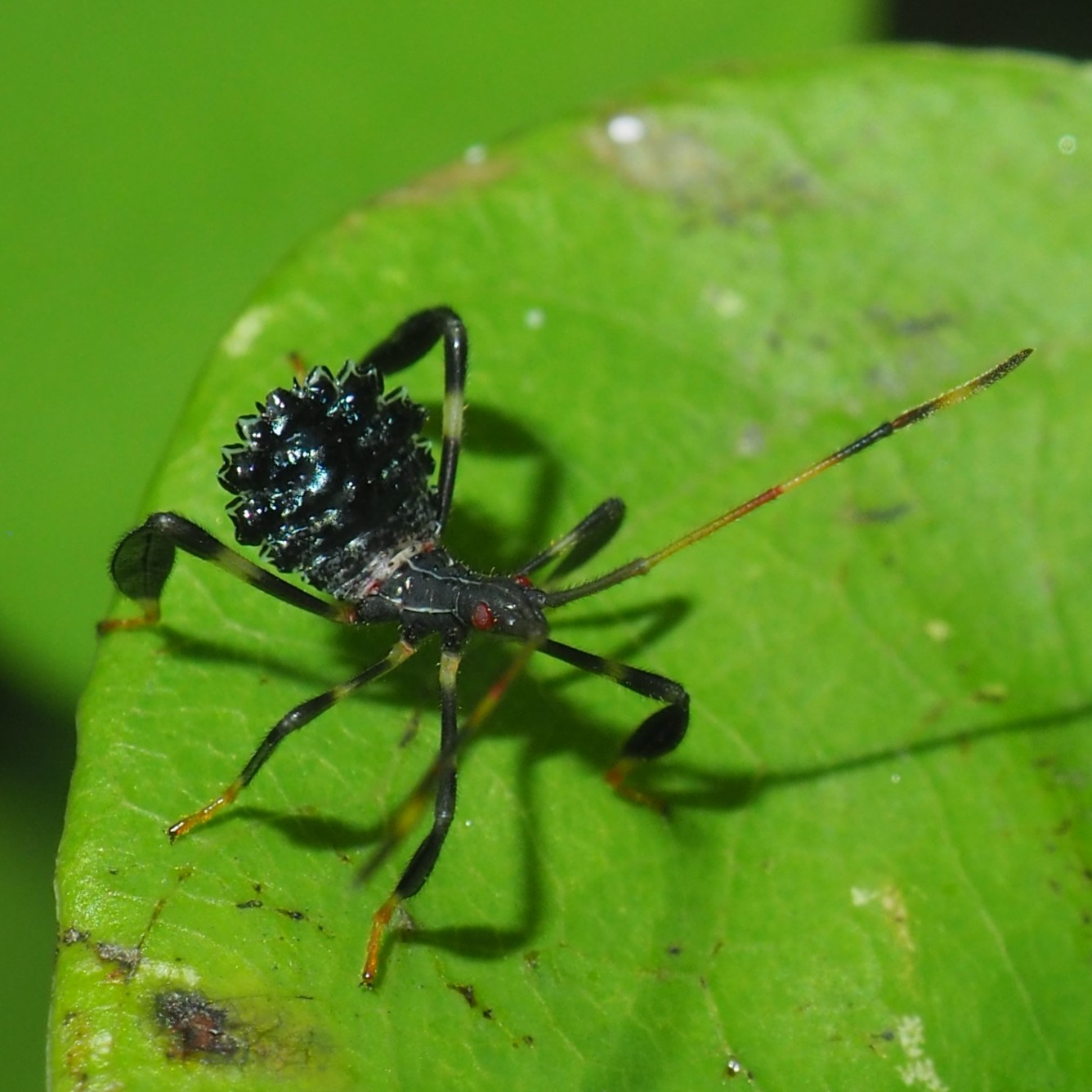
Now let's branch off to some more of the Hoppers. We've seen the Leafhoppers. Now for the Planthoppers and Treehoppers and the Spittlebugs. Here is a Planthopper nymph from last week. I believe that the second bug is a more advanced version of the first one. If it is, then both are probably members of the genus Acanalonia.
A couple of days after I saw those Planthoppers, this one showed up. I really think we're getting close to Acanalonia.
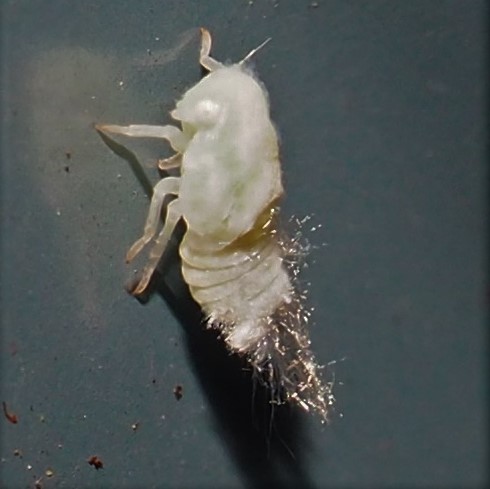

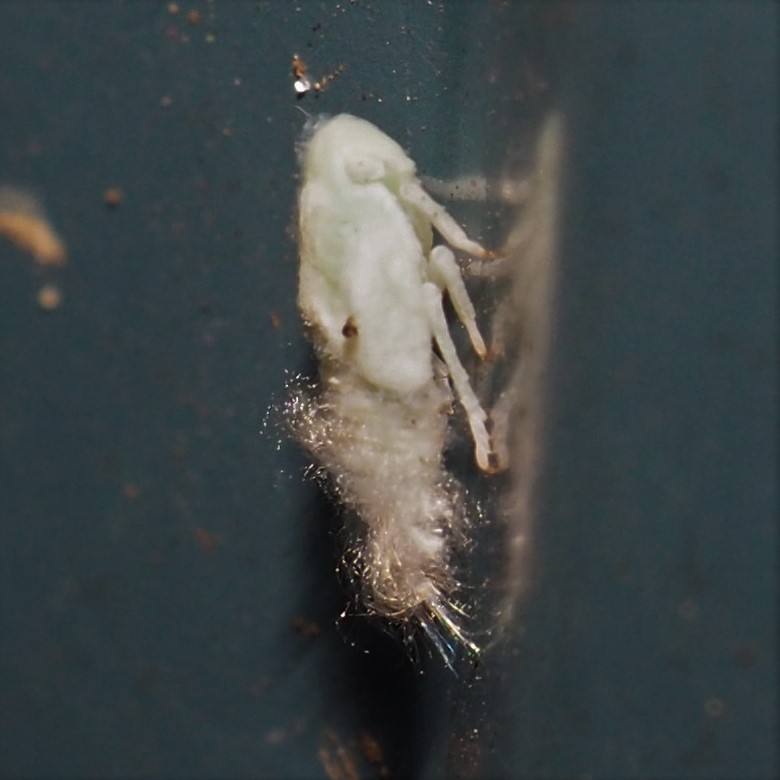
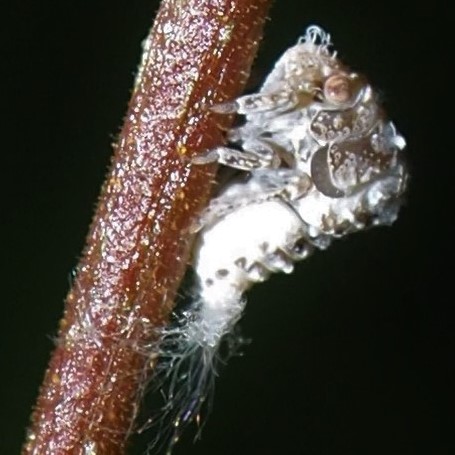
Now let's check out the Treehoppers. The Two-mark ones have almost ALL turned from nymph to adult.
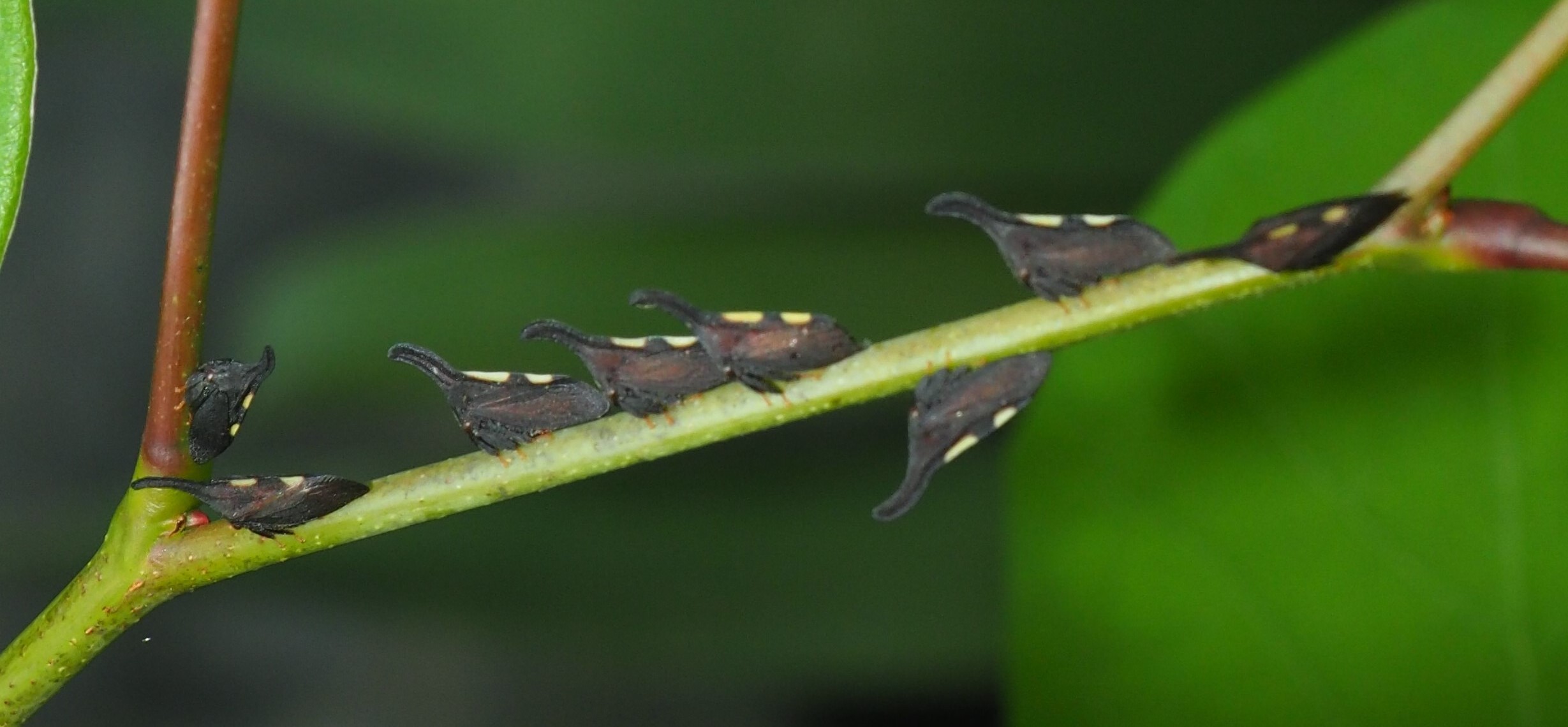

Unfortunately, the Thistles that I thought would make it to this summer didn't get big enough so I won't have the pleasure of shlepping my folding chair and cane to the side yard to watch a productive community of Keeled Treehoppers live through all their changes. But I'm nursing along a couple of plants which should make enough seeds for SOME new plants for NEXT summer.
There is one new Treehopper, one of the Buffalo Treehoppers, whose nymph appeared a couple of days ago. We played a game on a Wild Grape Vine.
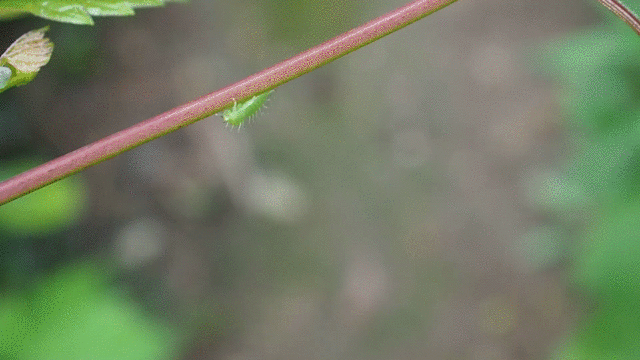
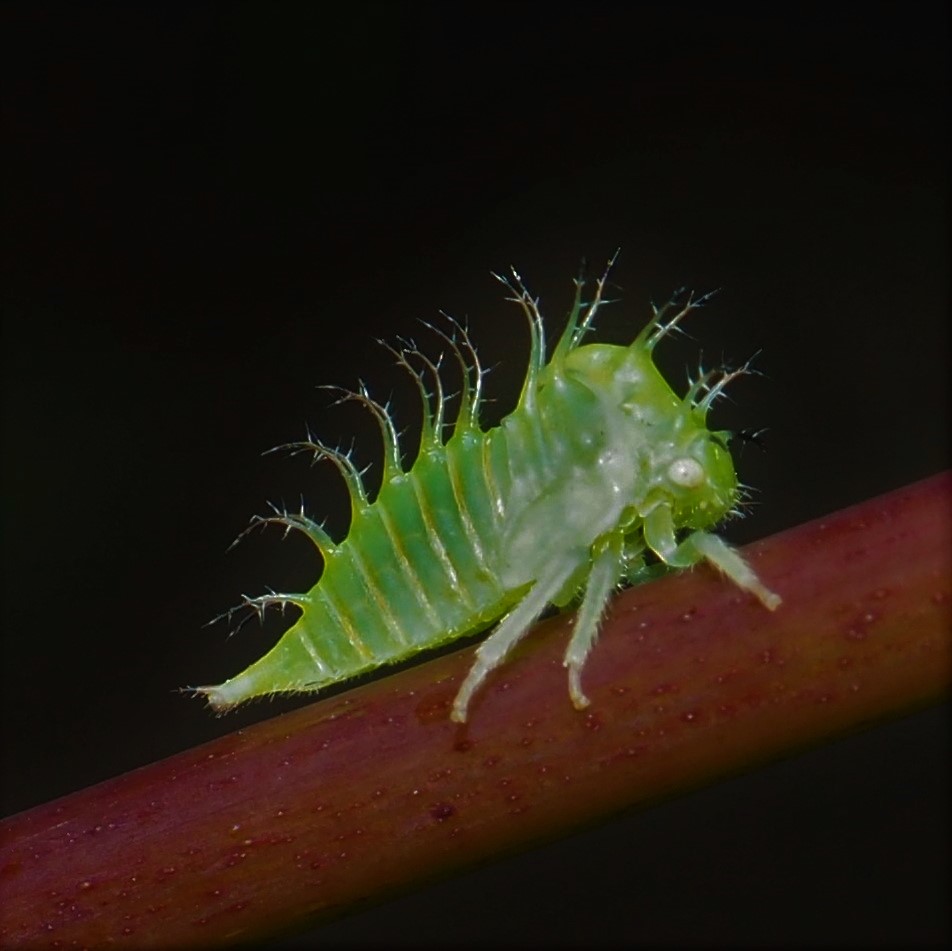
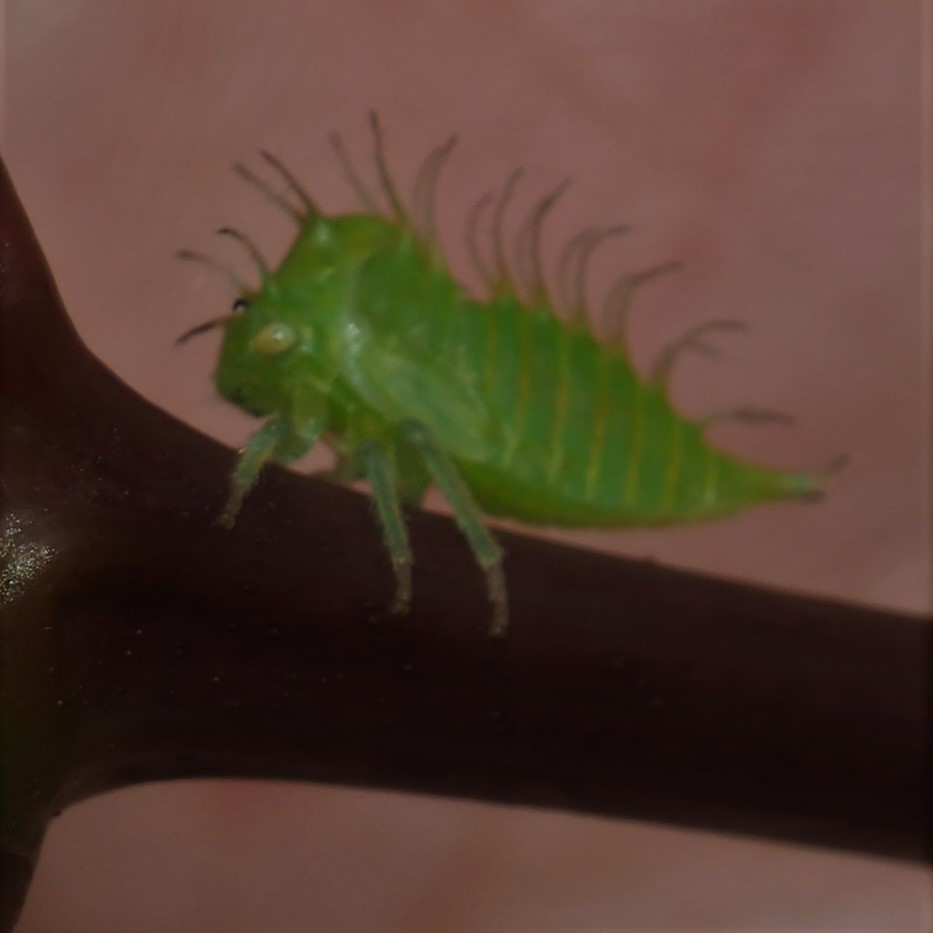
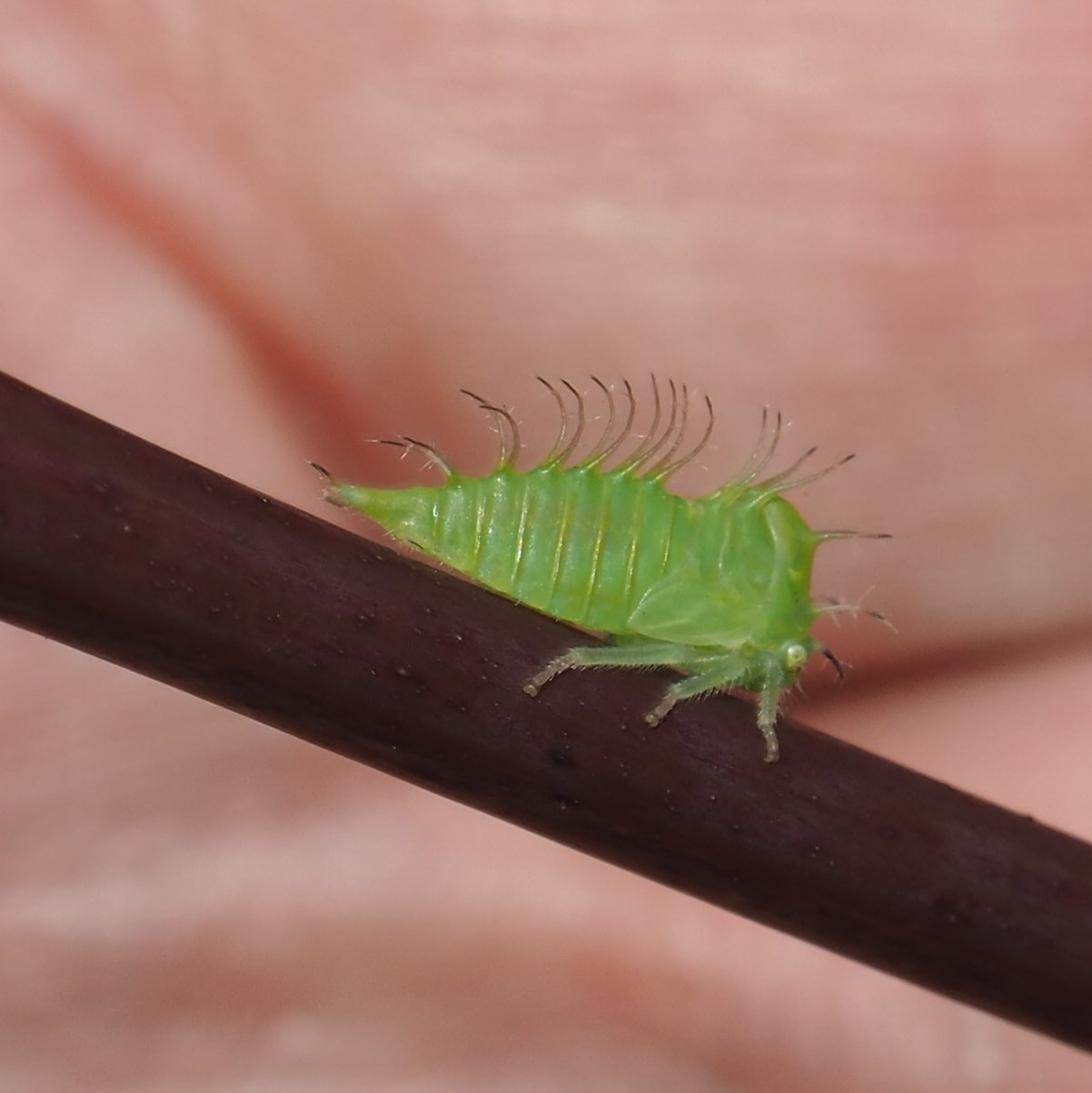
We have one faithful Damselfly, a male.
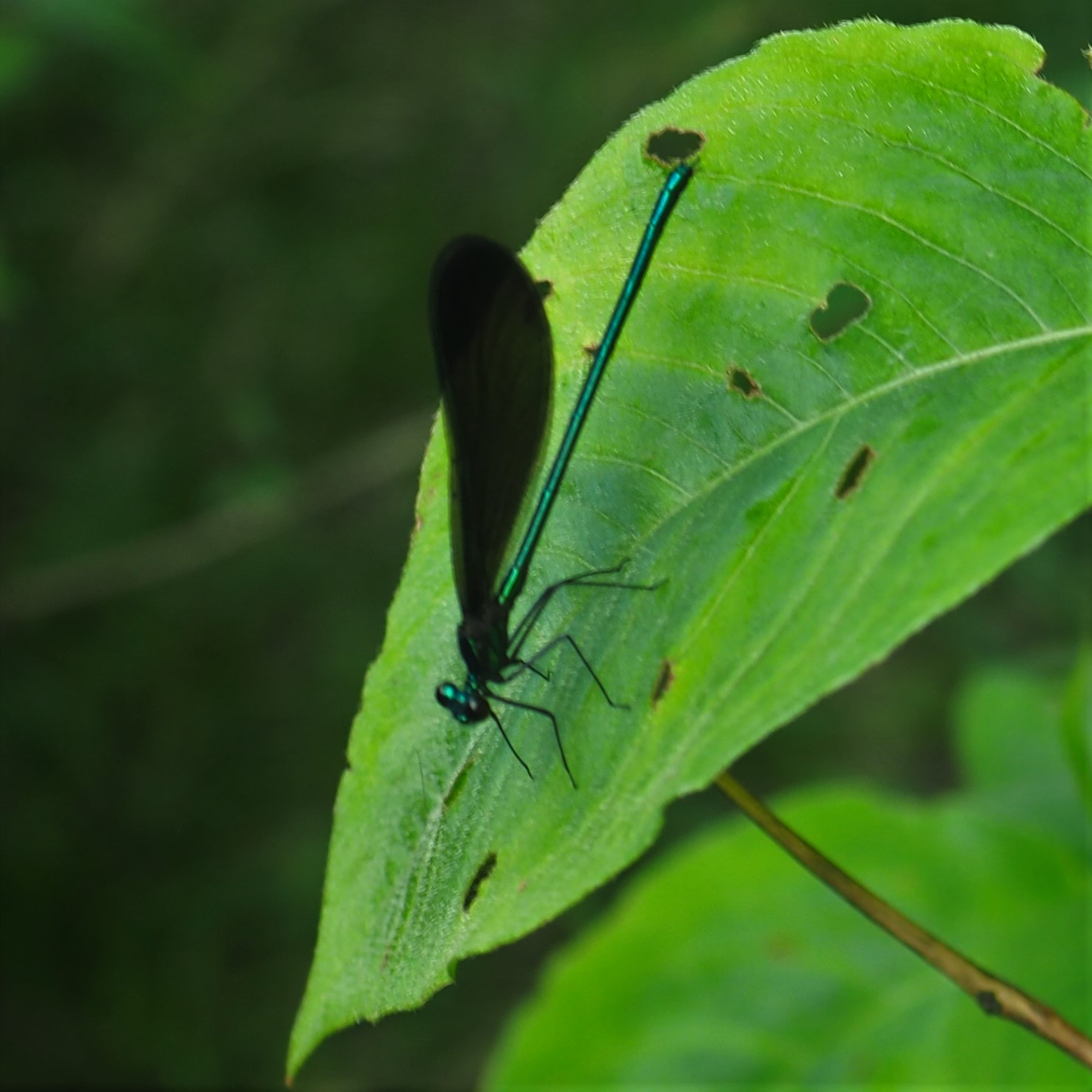

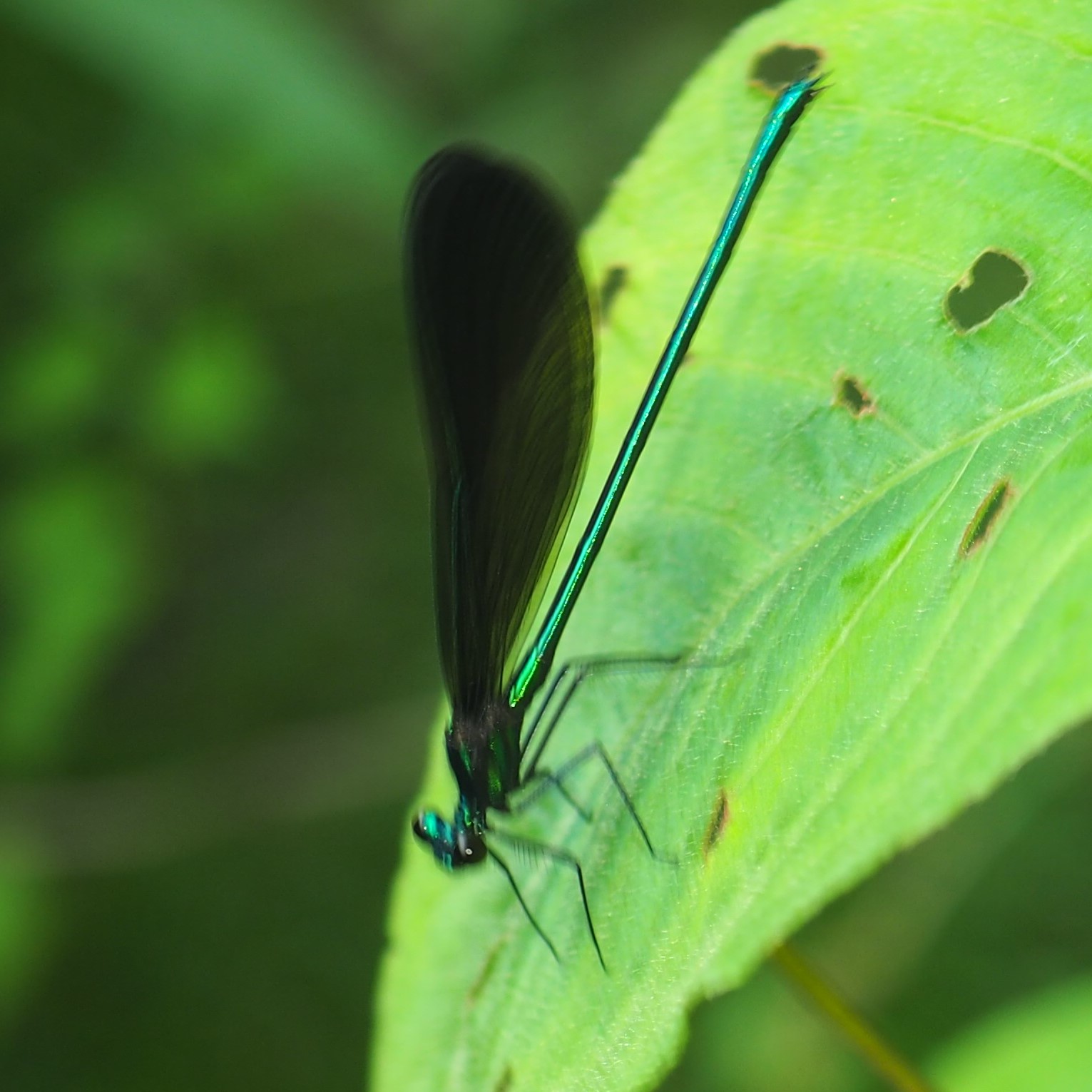
Here we have some colorful Flies.
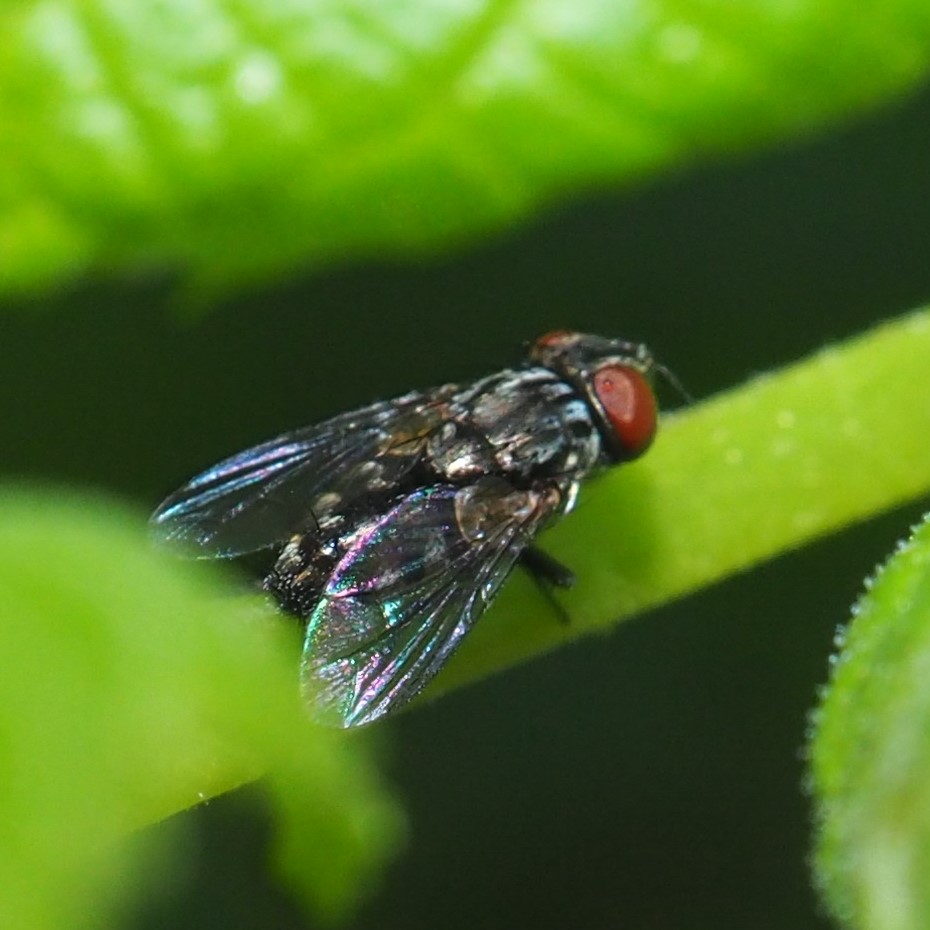
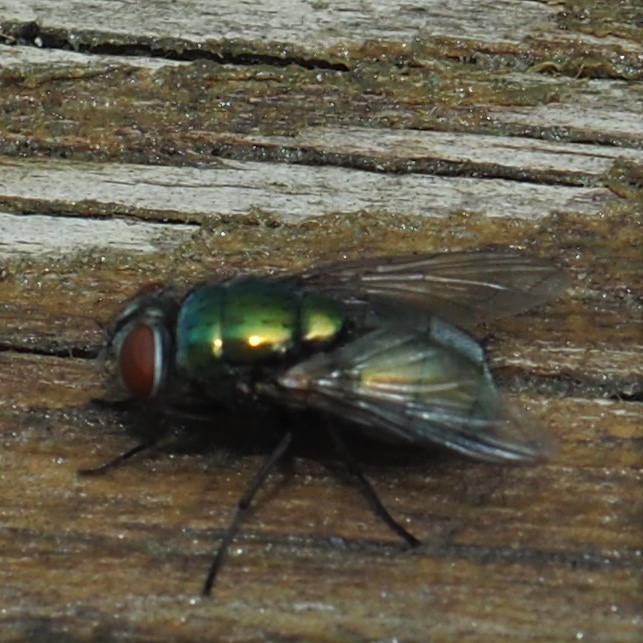
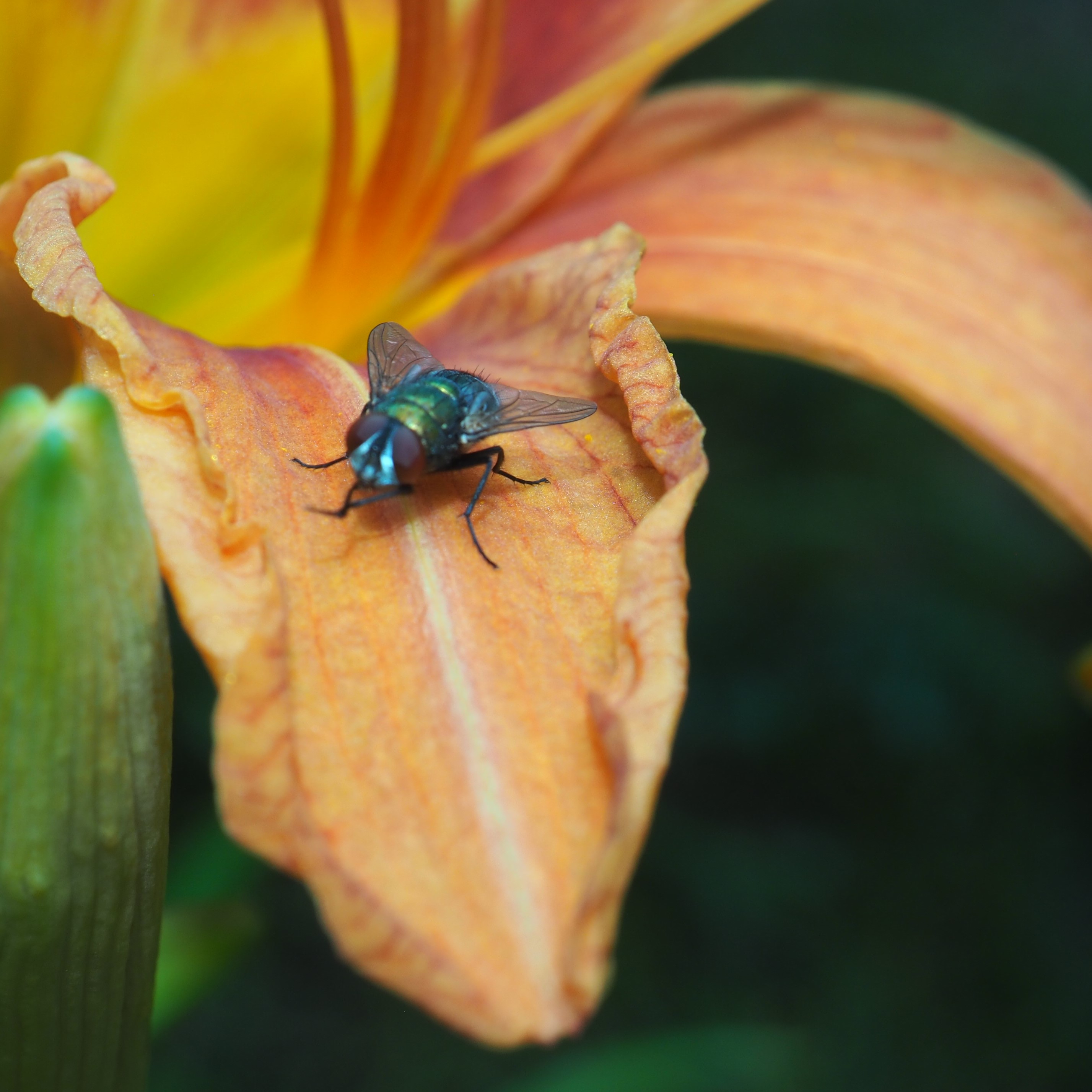
These are both pictures of Liriomyza type Flies. Remember that in fly names, -myza usually means "leaf miner". I love that they are so small and so beautiful.

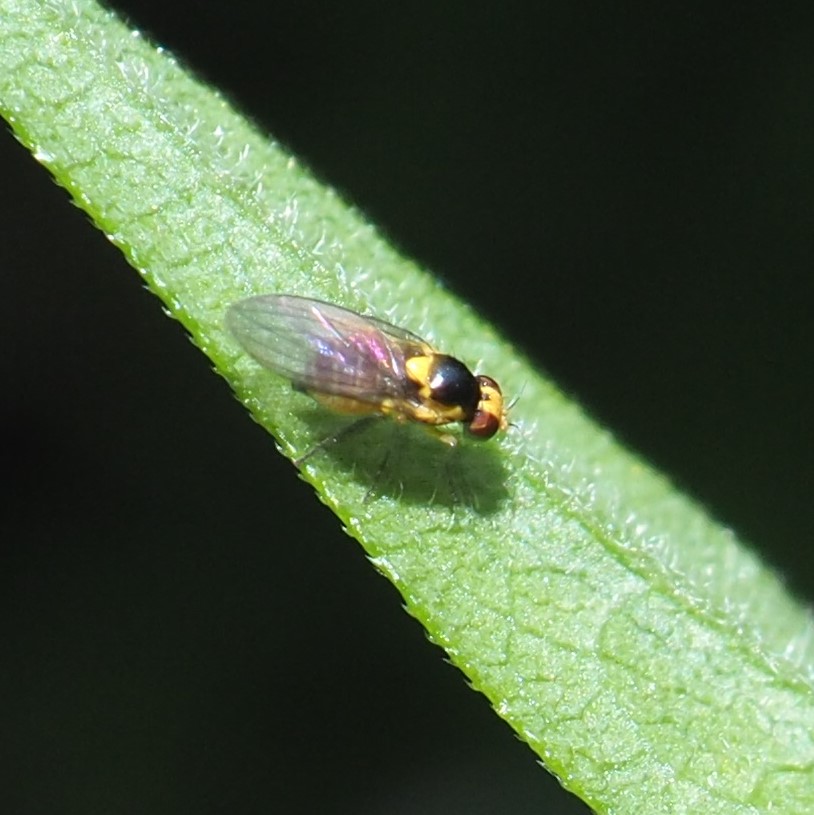
Some of the prettiest of the Flies are the Long-legged Flies, which come in brilliant colors, but also are very sensitive to the flash of the camera.
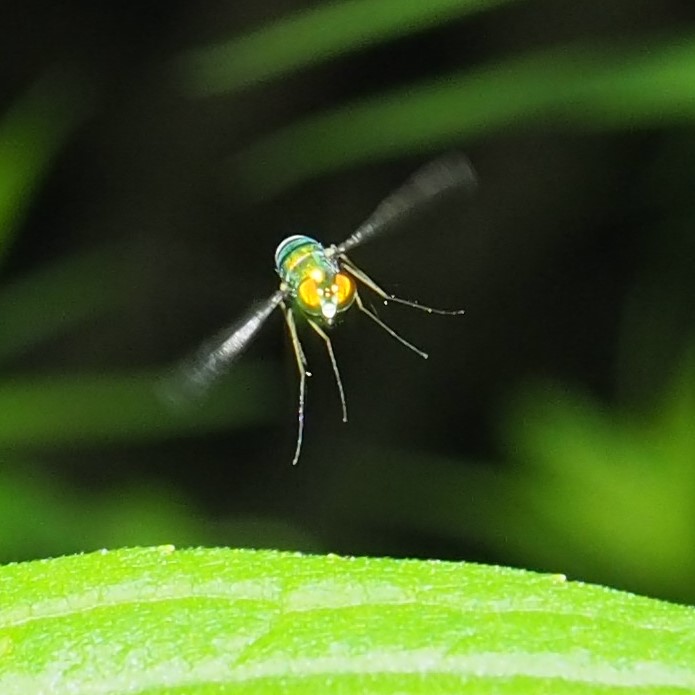
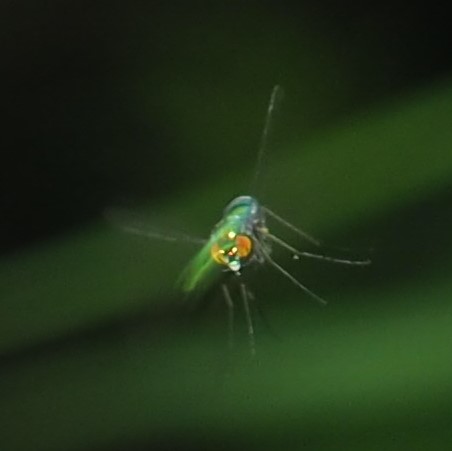
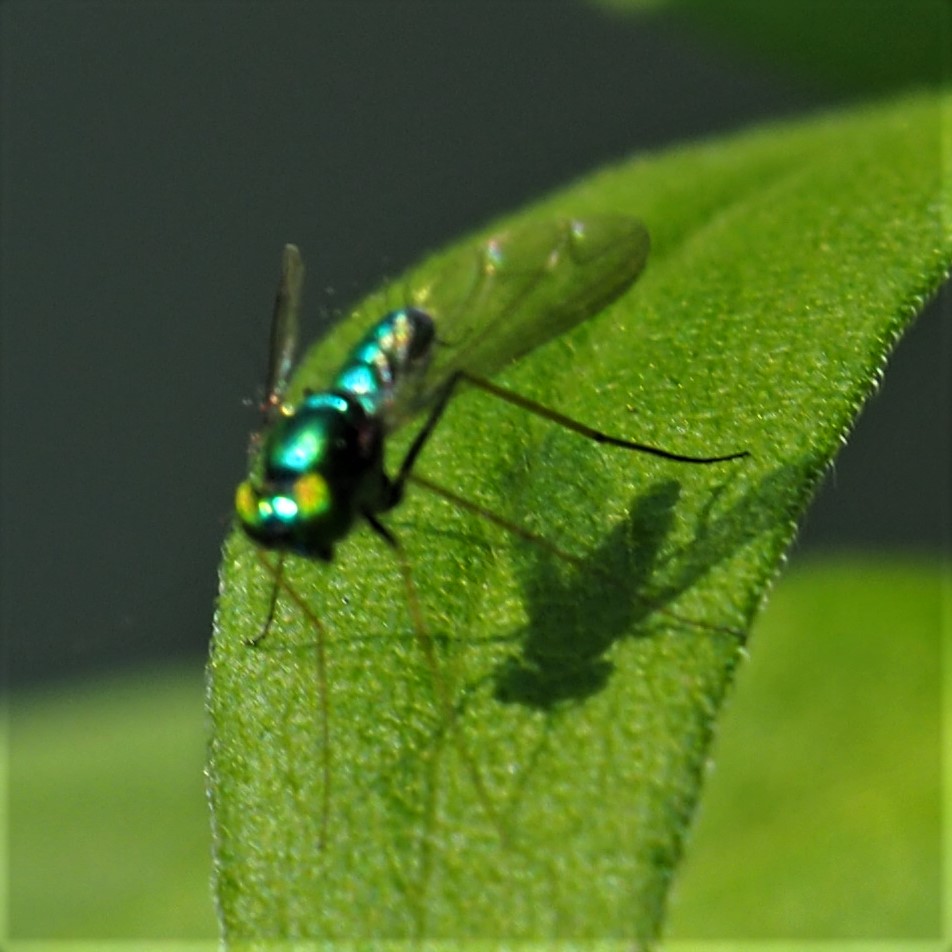
Some more pretty flies. The middle picture shows two beautiful flies making beautiful baby flies. Oh! I forgot to add this before sending it out, but the two beautiful flies are members of the subfamily Phytomyzinae (note that "myz" part that warns us that those beautiful babies will be spending their childhood making mines in the leaves of their favorite plants). The last frame shows that even Fungus Gnats can be lovely if they iridesce.

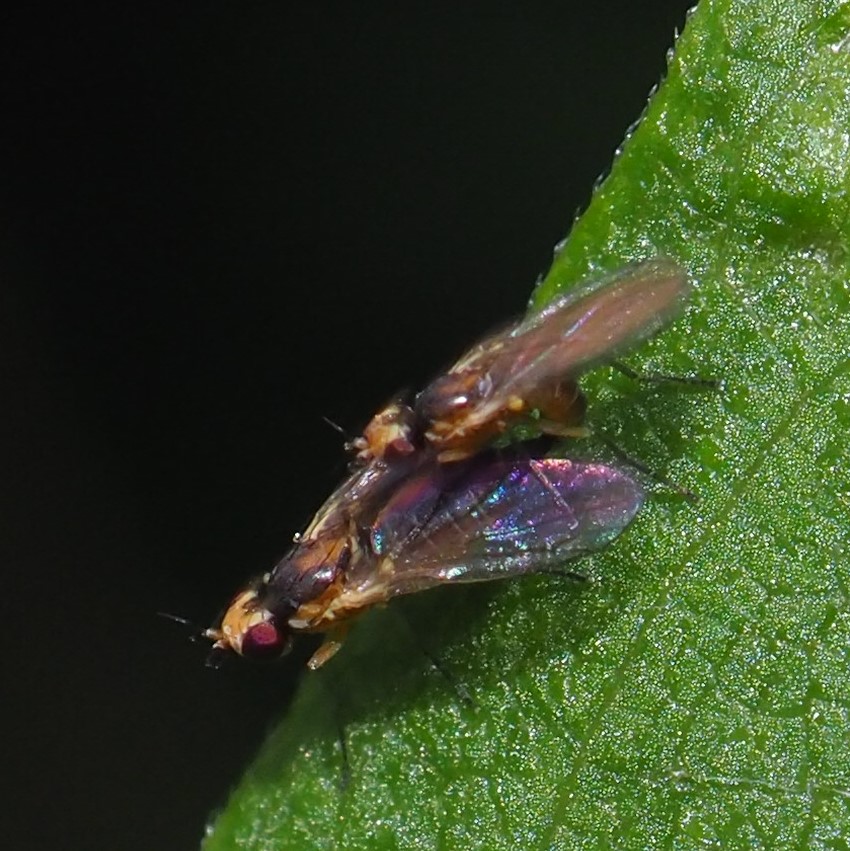
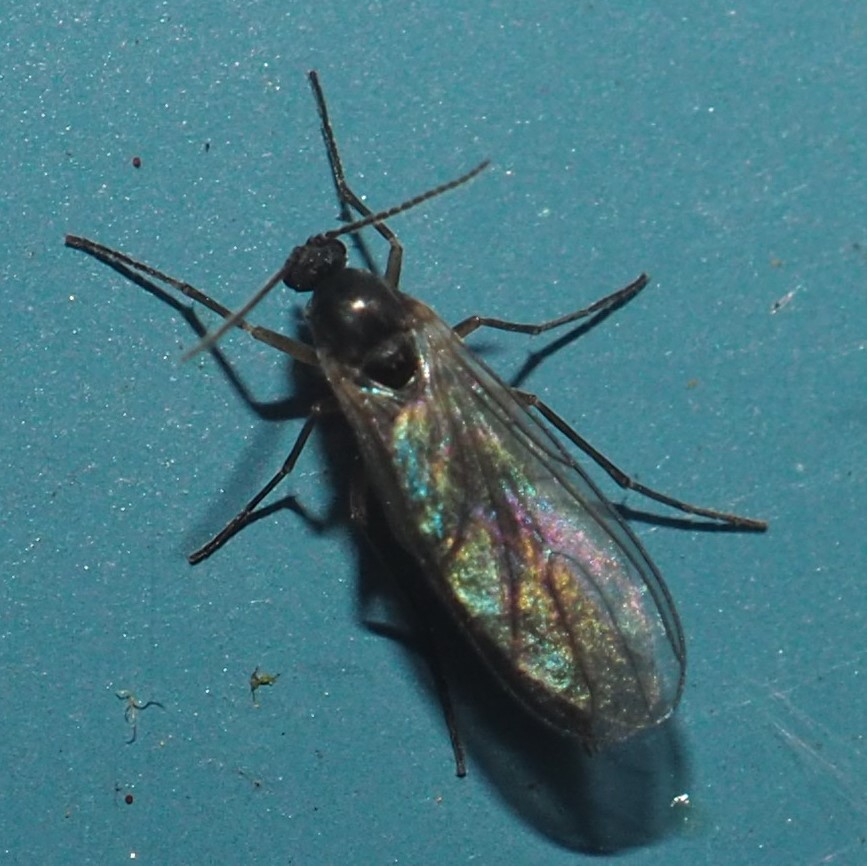
We come now to a very nice Hover Fly with an unusual pattern in its body. The third picture shows what's left of the Hover Fly Pupa that was glued to the siding in August, 2020. I was hoping to be able to see the Flies that must have hatched. Who knows? The puparium came apart during one of those horrible rainstorms.
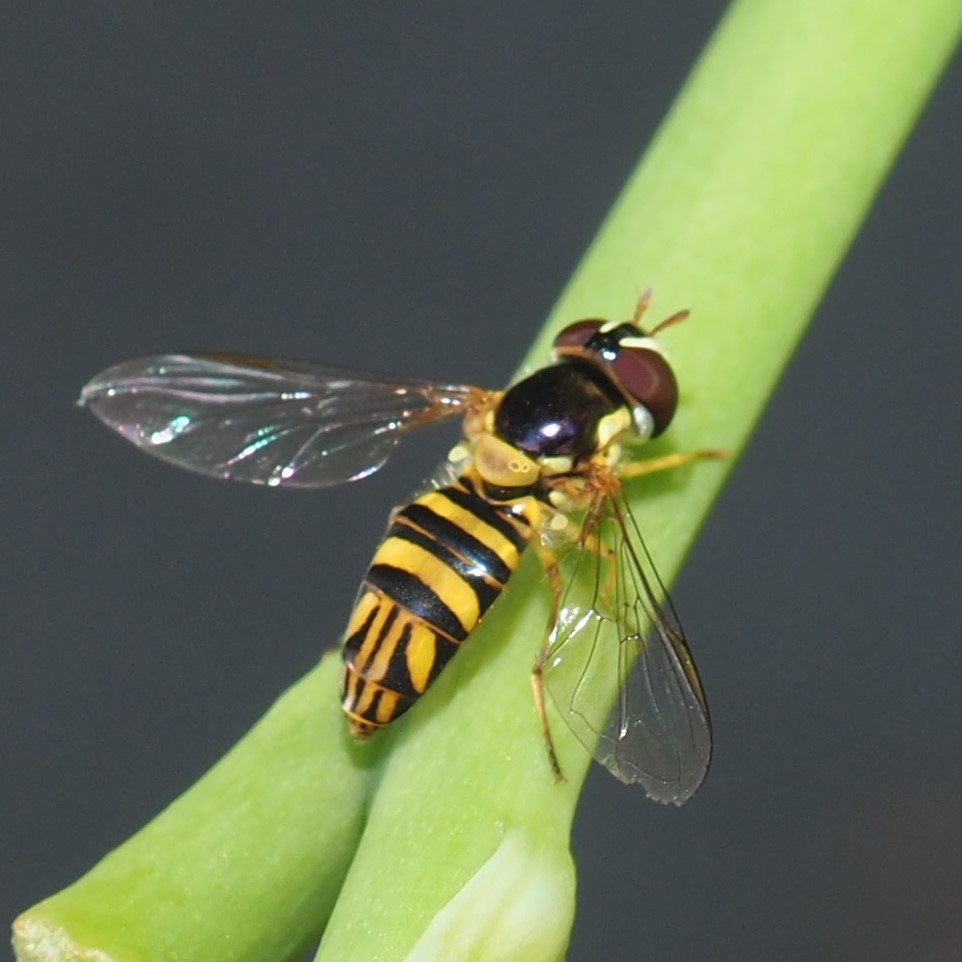
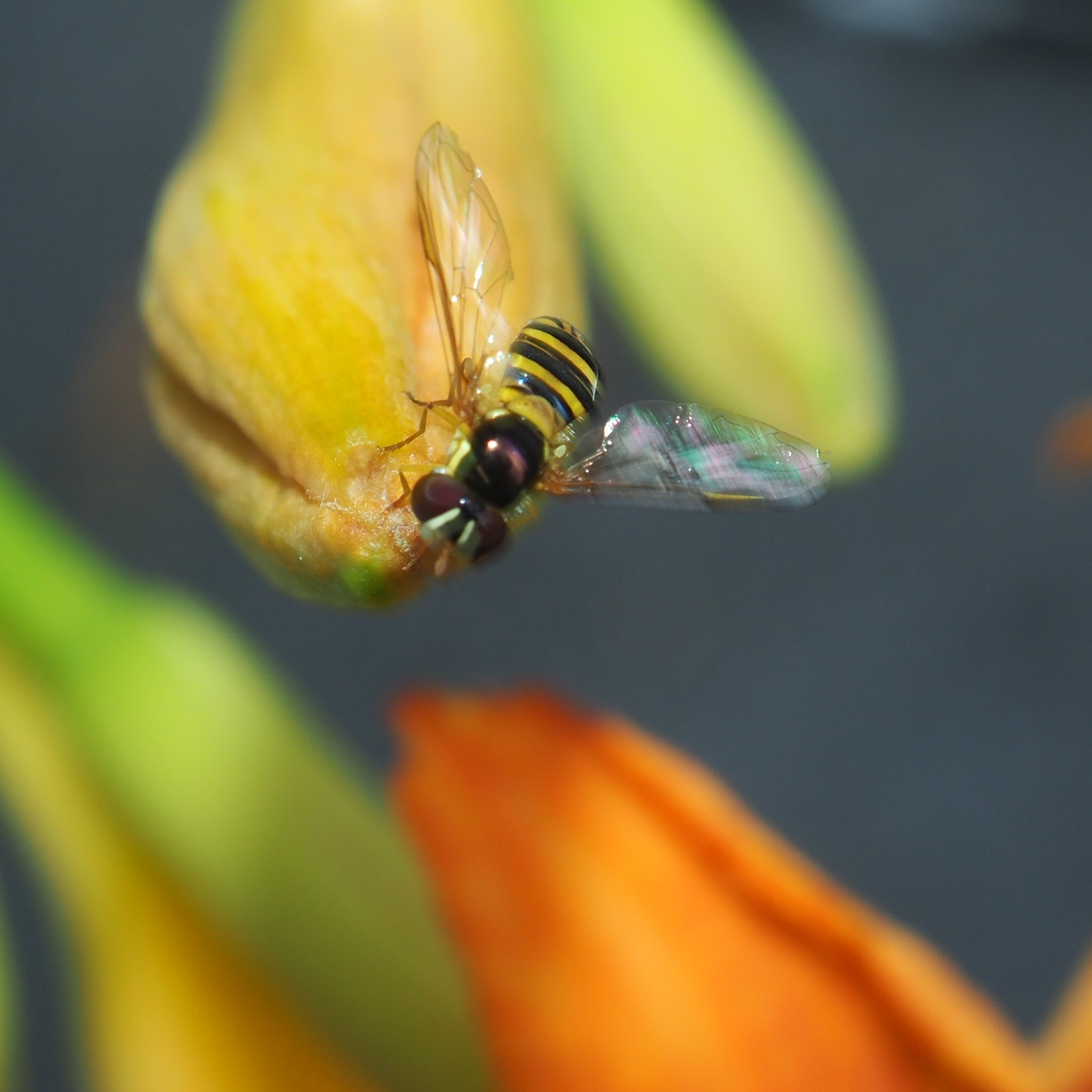
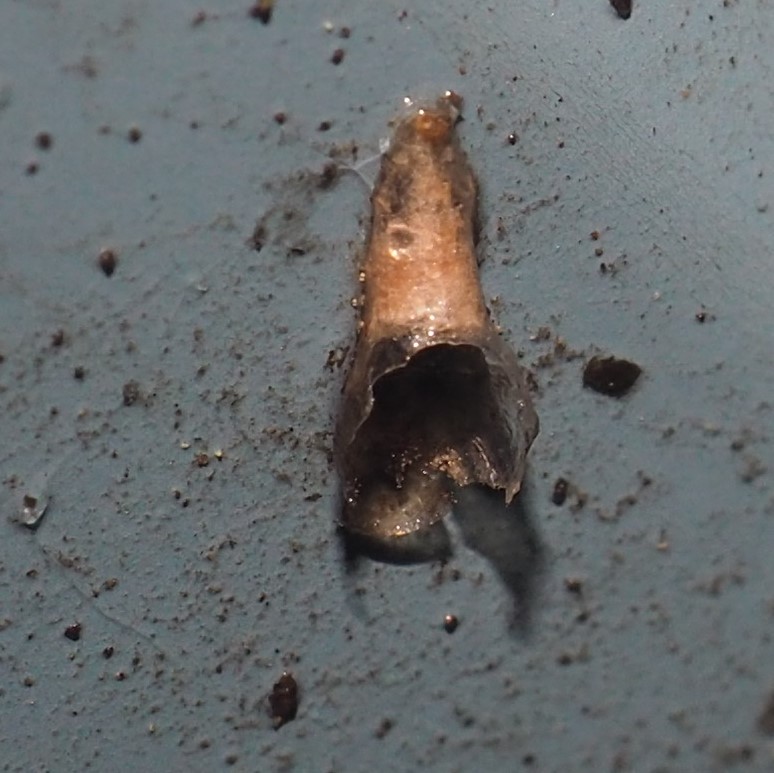
I hope that you remember the two Green Frogs that arrived beside the pond last week. The end of the story is that one by one they jumped into the pond about dusk and were gone by morning. These one-nighters! I hope that somewhere down in that algiferous water there were eggs laid, which would mean that there is a chance for many little frogs in a few weeks. There are still many little tadpoles from the last mating of Toads. And best of all, every day I have to tread very carefully to avoid stepping on tiny toadlets. (They are less than half an inch long!) And here I was worried about their being able to climb out of the pond! I still don't know how they do it. But I have seen the frogs practising jumping out!

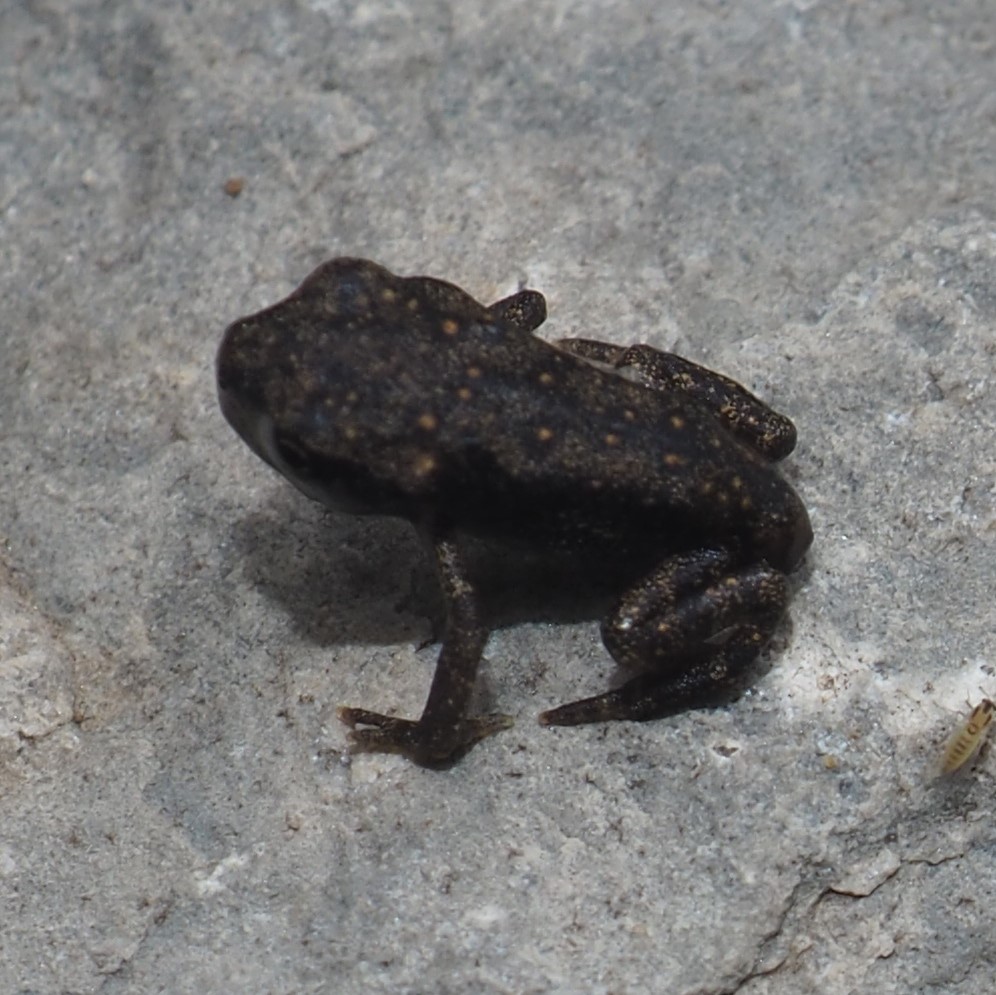
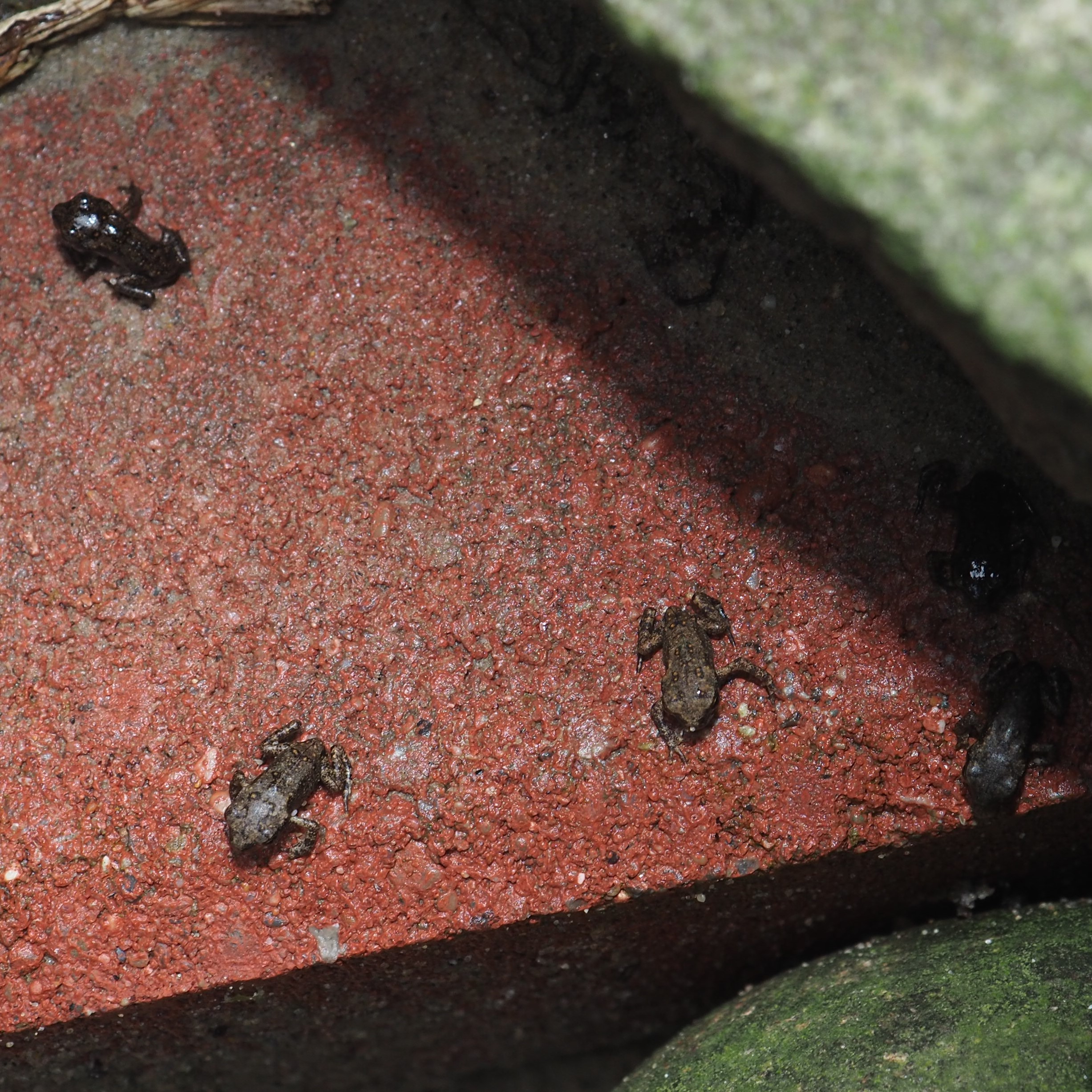
Here is a Speckled Dun Mayfly that has been around for quite a few days (maybe they took turns).
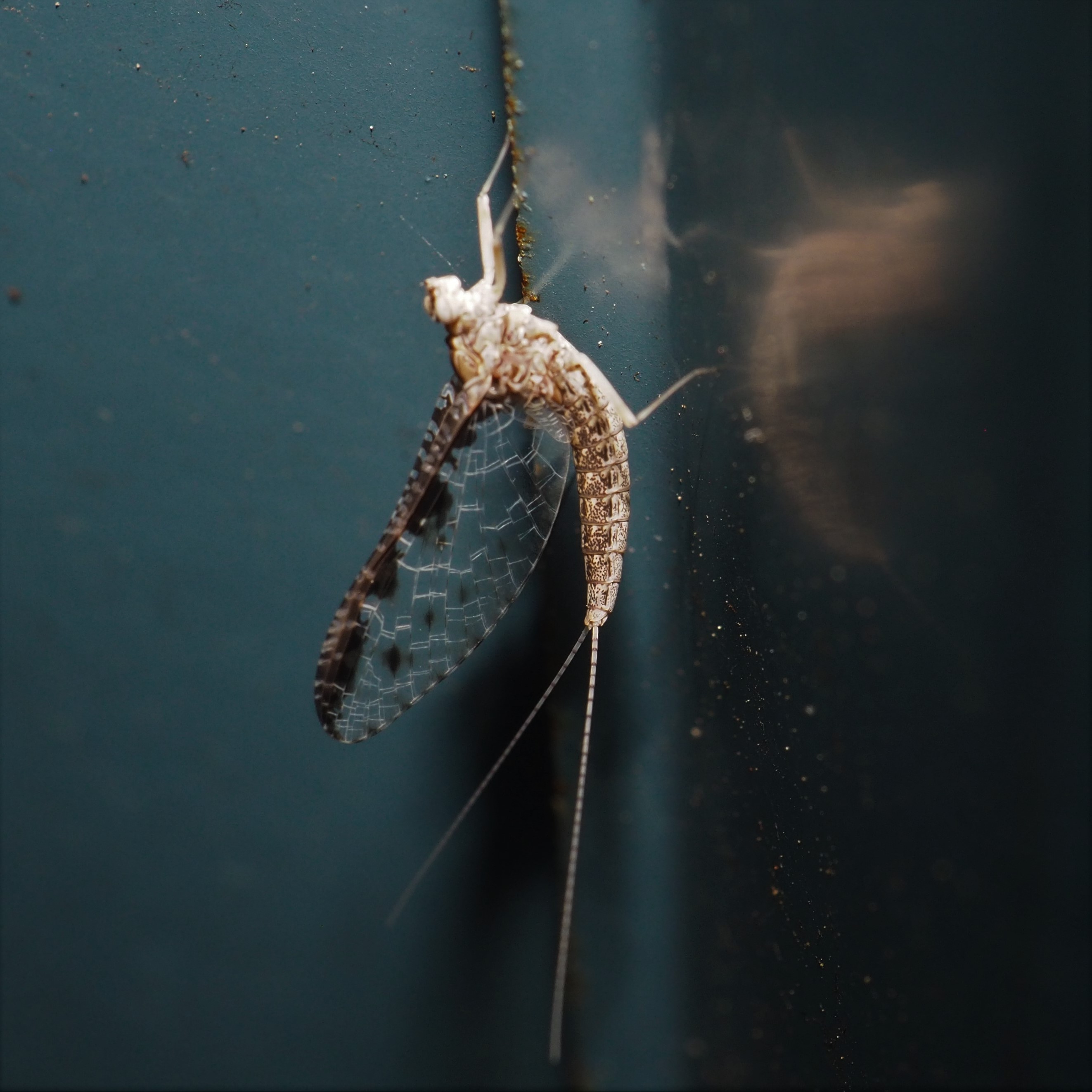
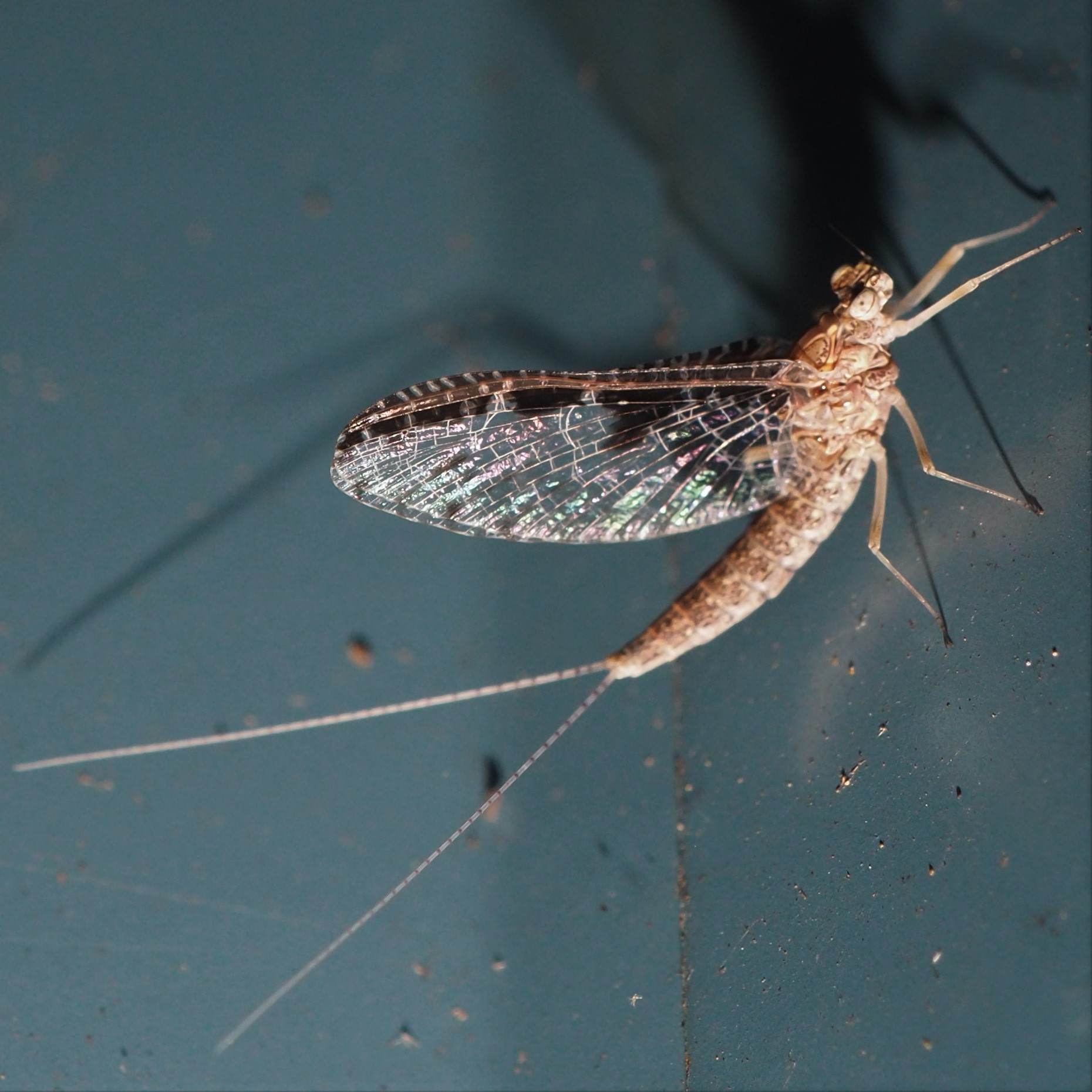
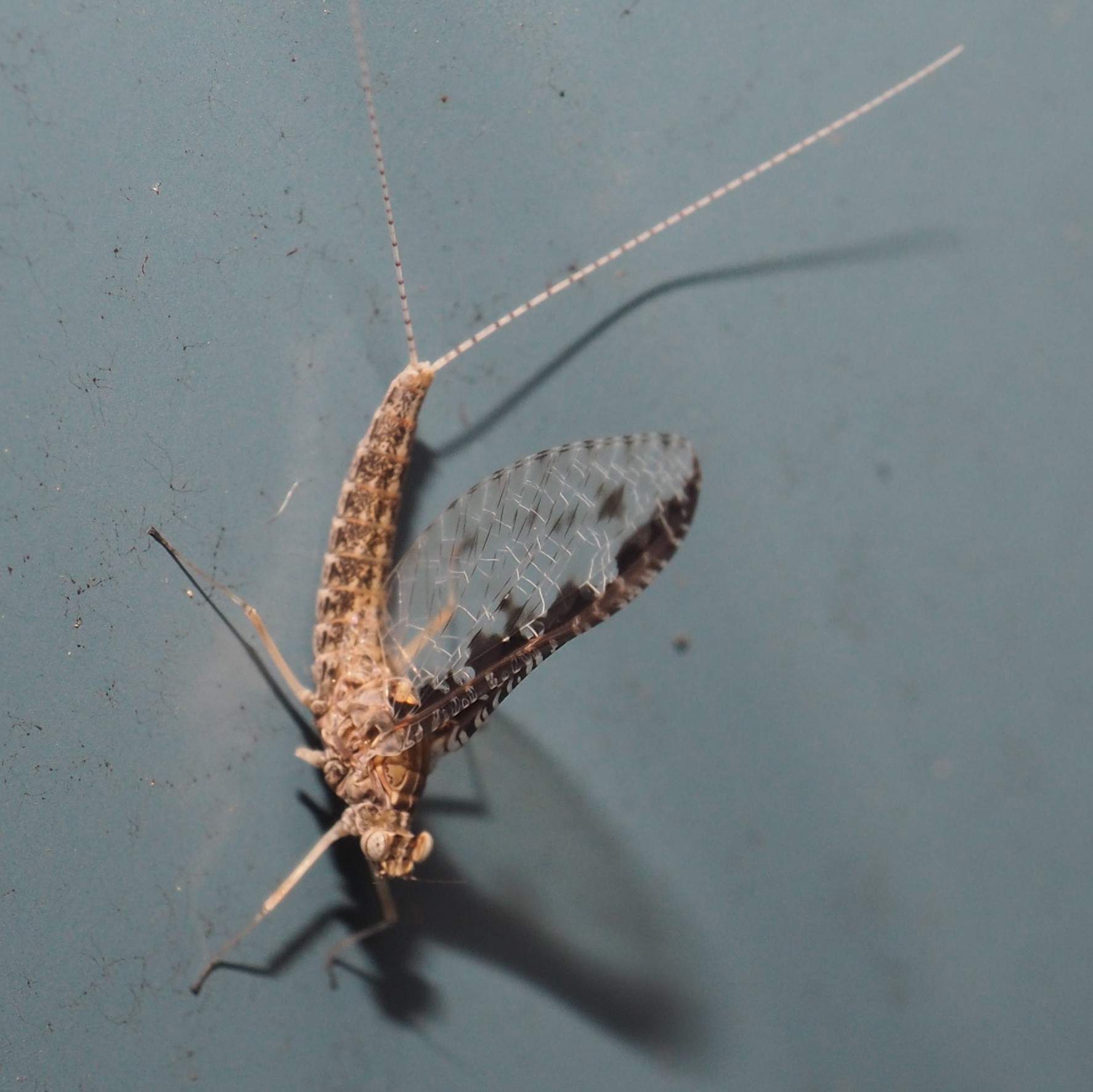
We've had more Moths than I had time to look them up. The third one seems to have a laughing face on it!
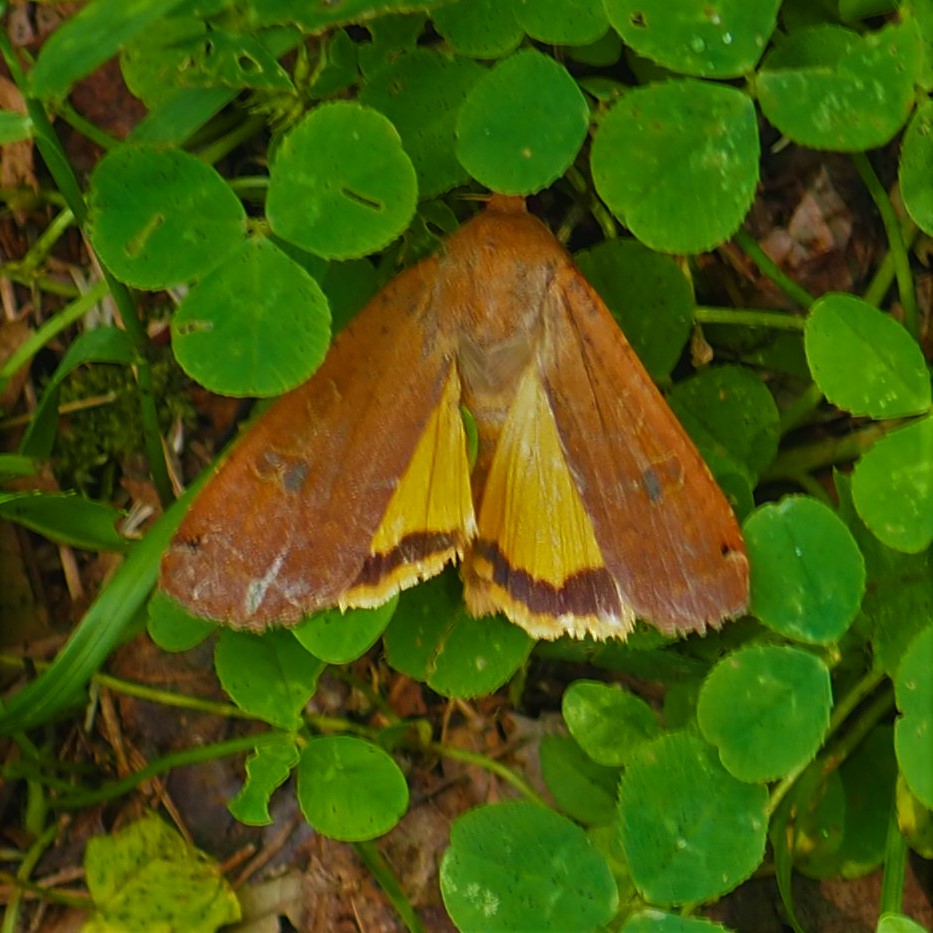
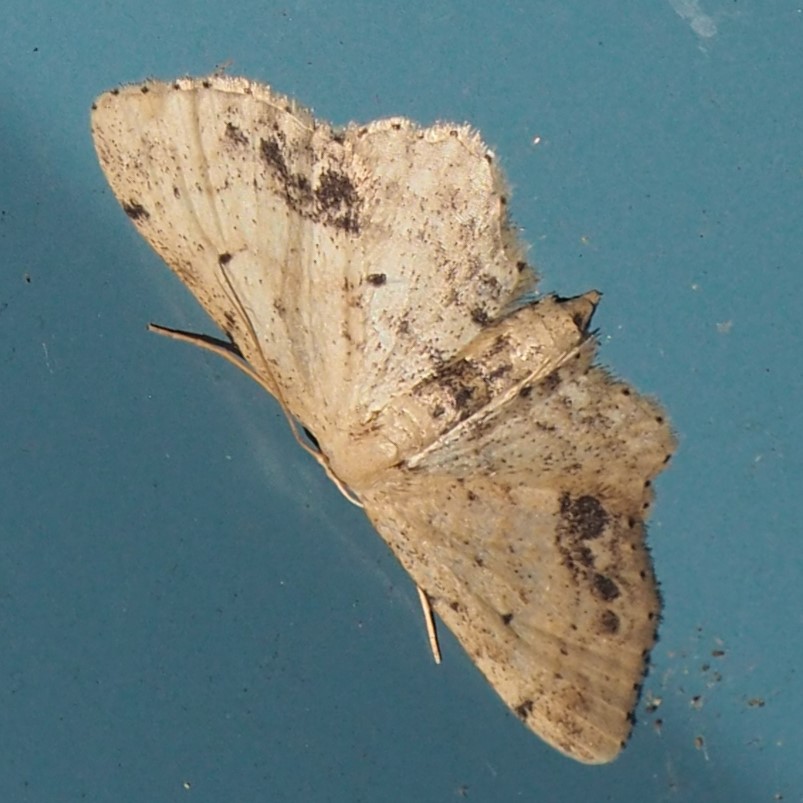
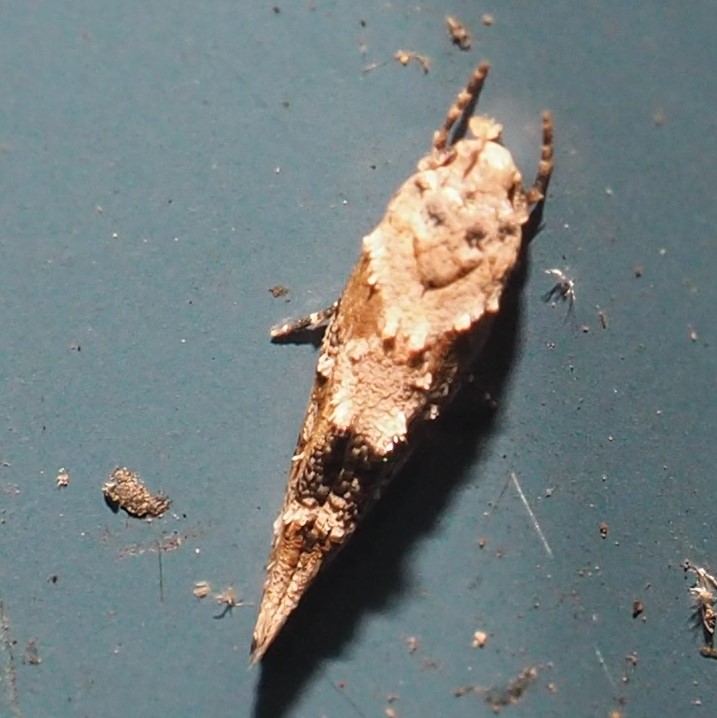
More moths.
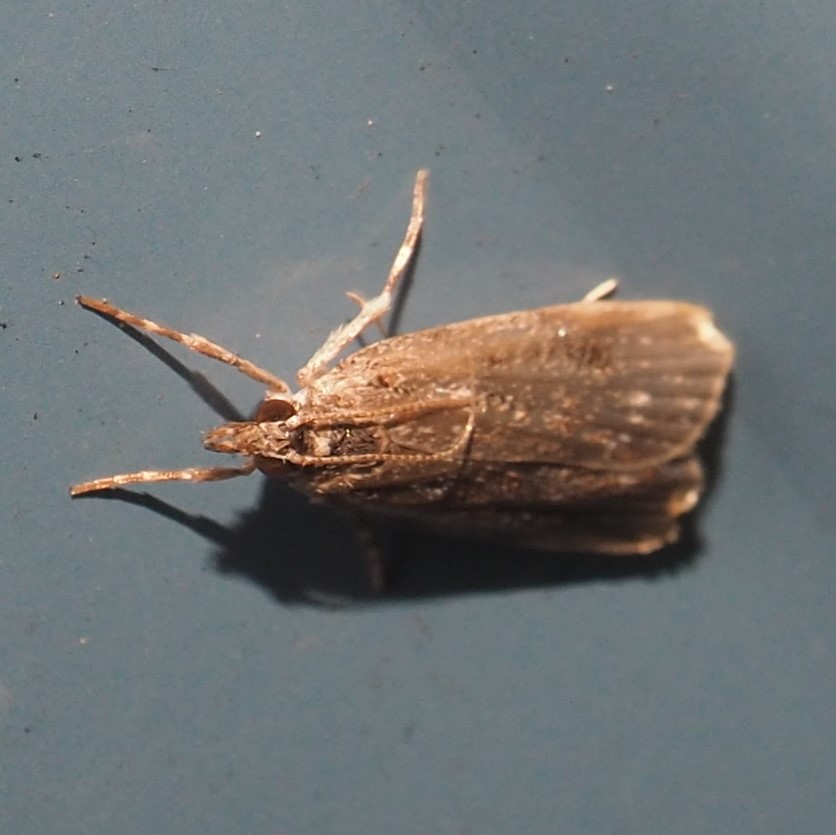
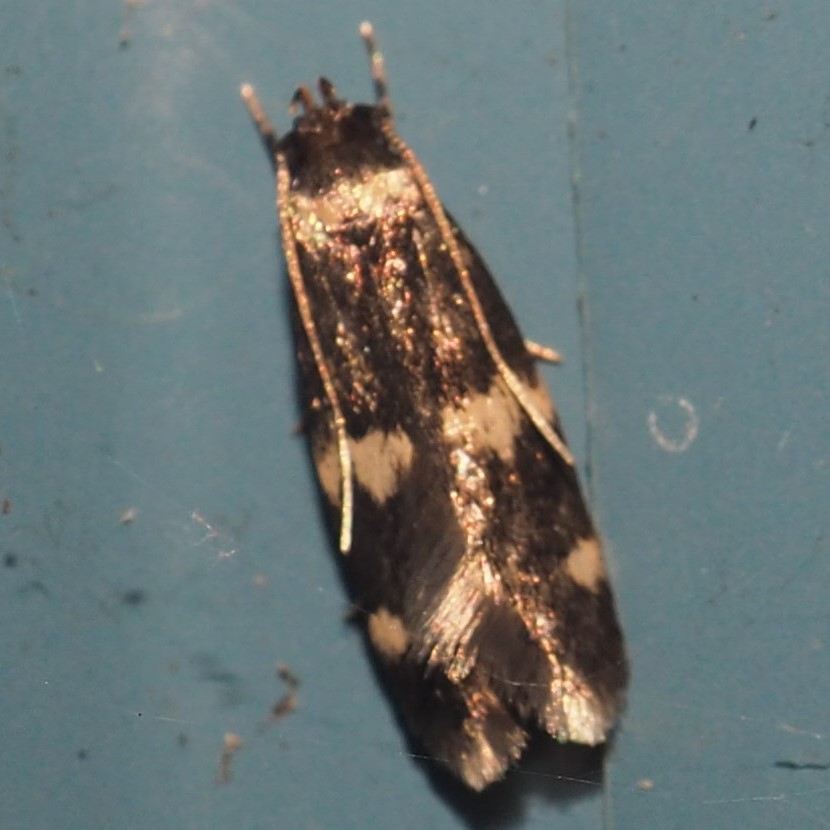
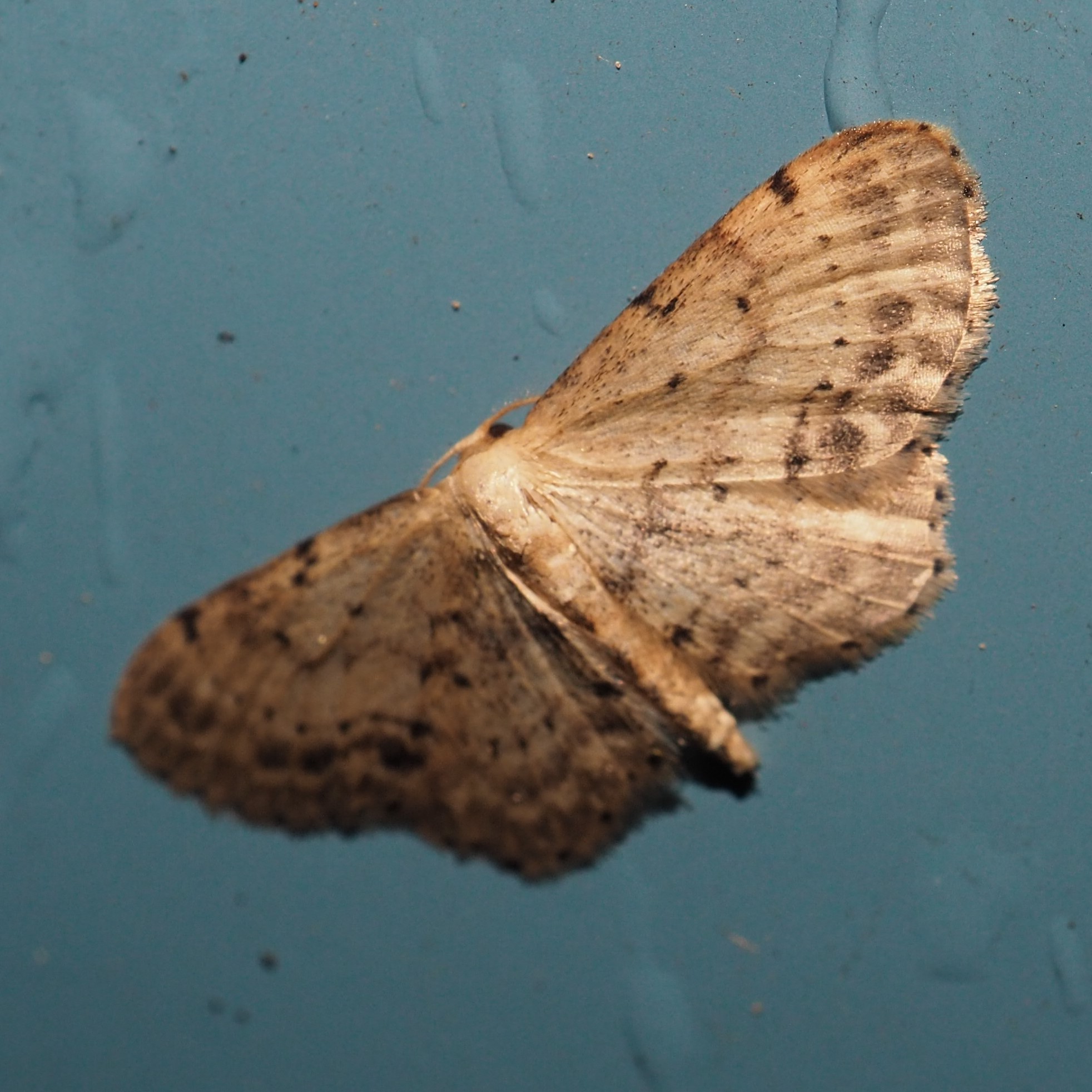
Next is a Leaf Miner Moth, which you can tell from its posture. Next is the ONLY caterpillar I saw all week! And one more Moth.
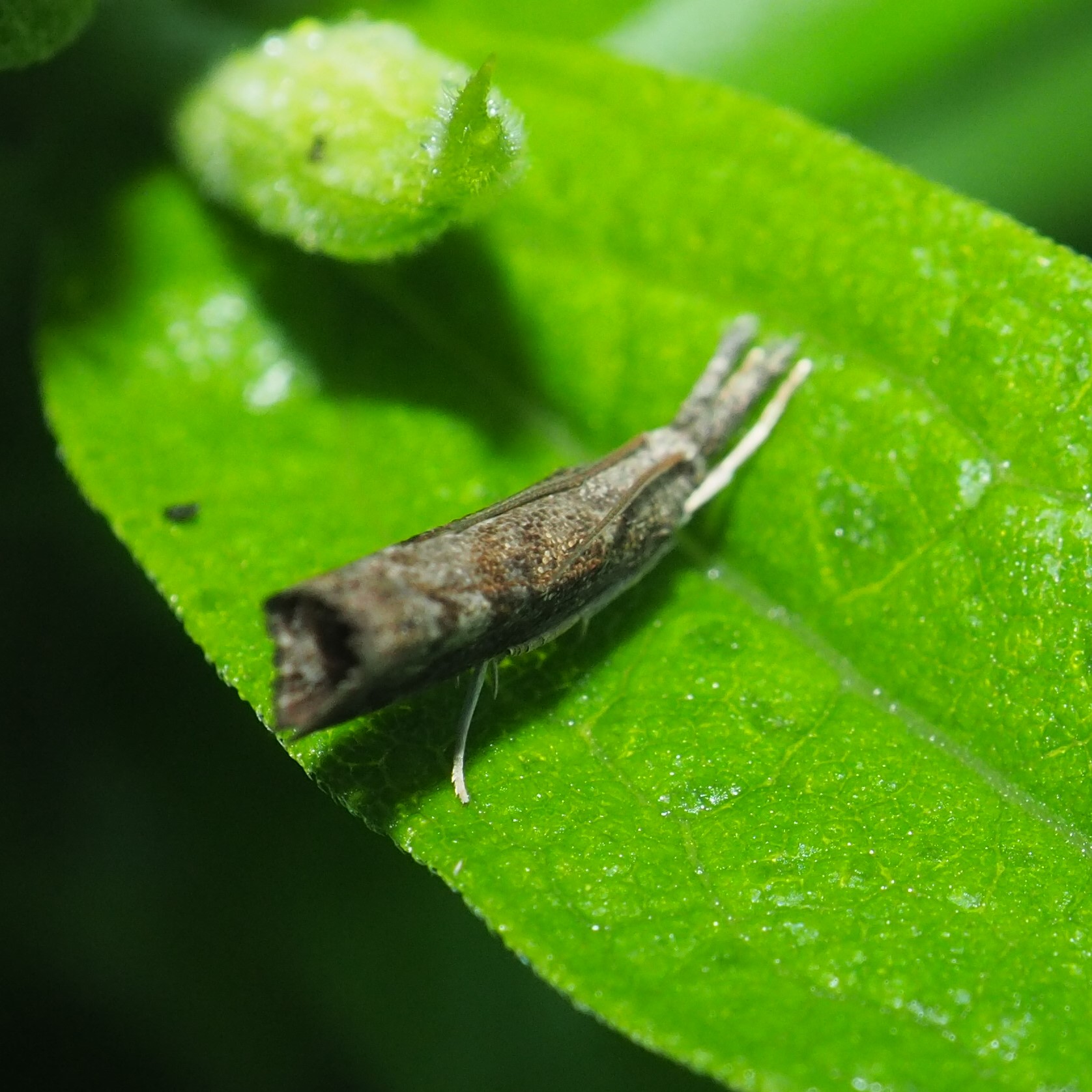
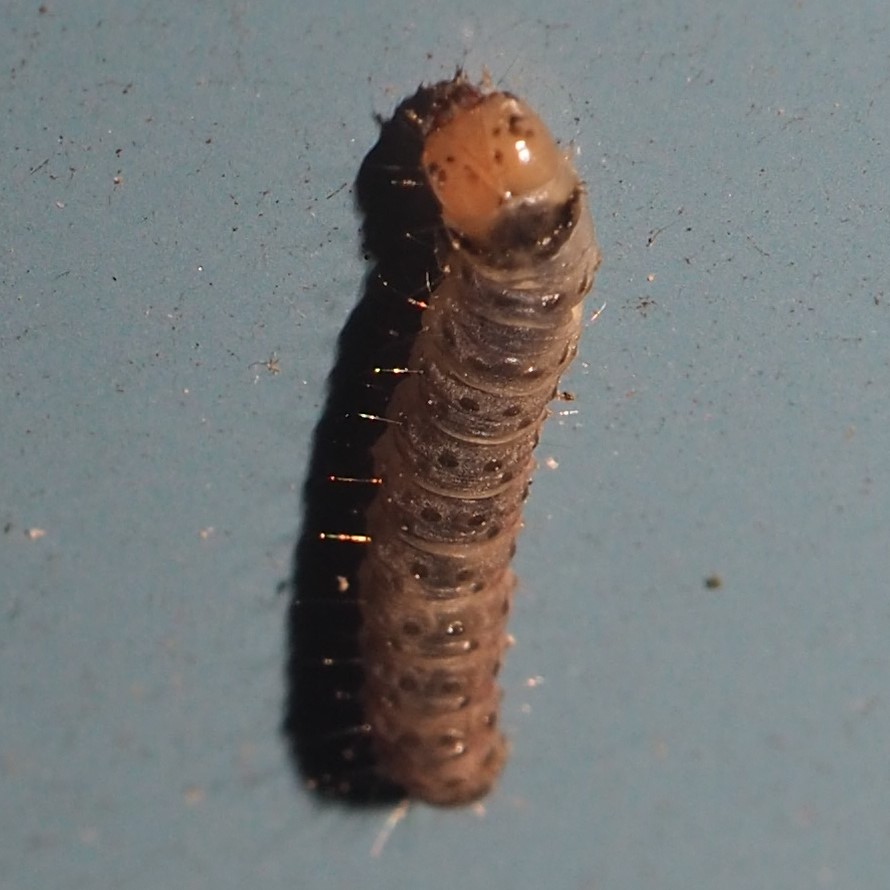
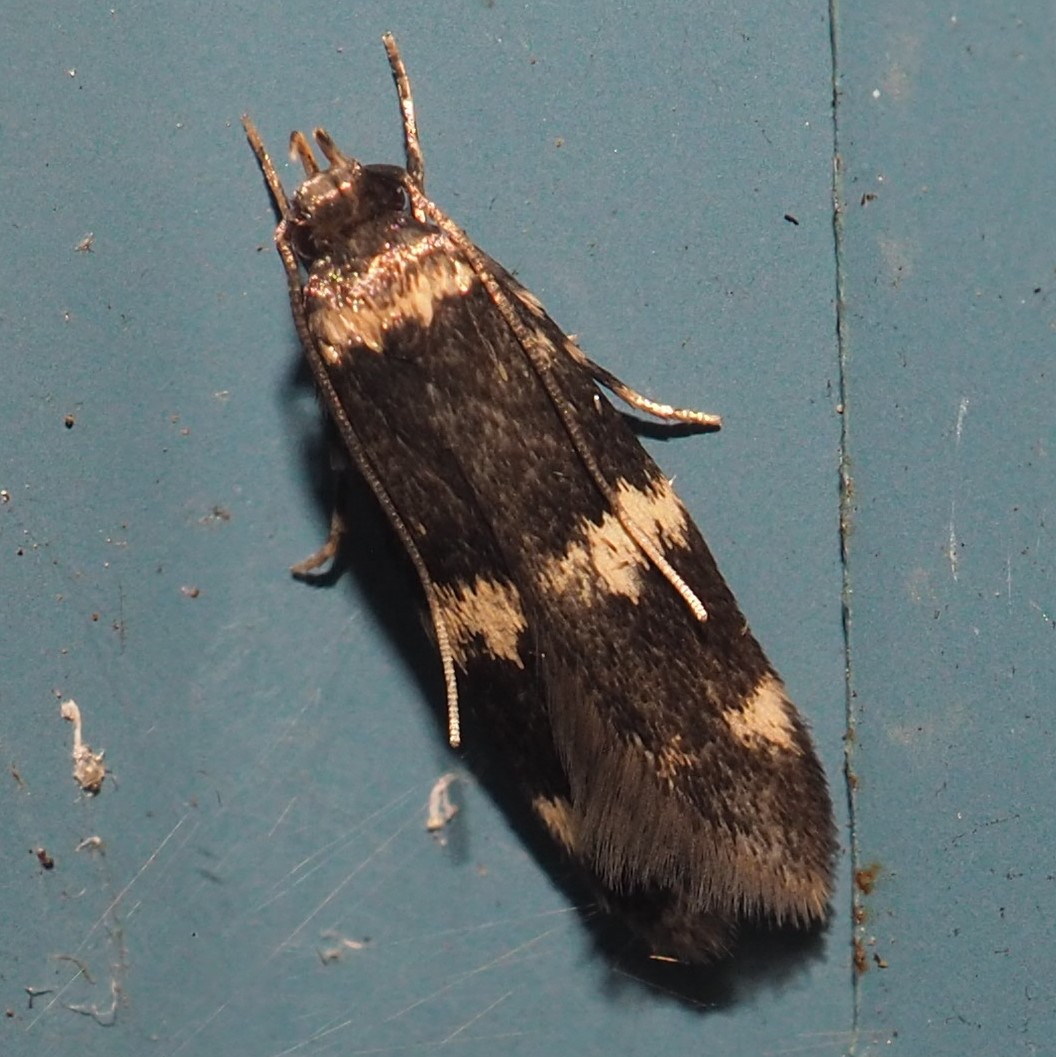
I do think it's time for a walk in the flowers! Here's the Rose Campion again. One single flower is itself worth viewing, isn't it? And the Celandine Poppies are still going, one golden flower at a time.
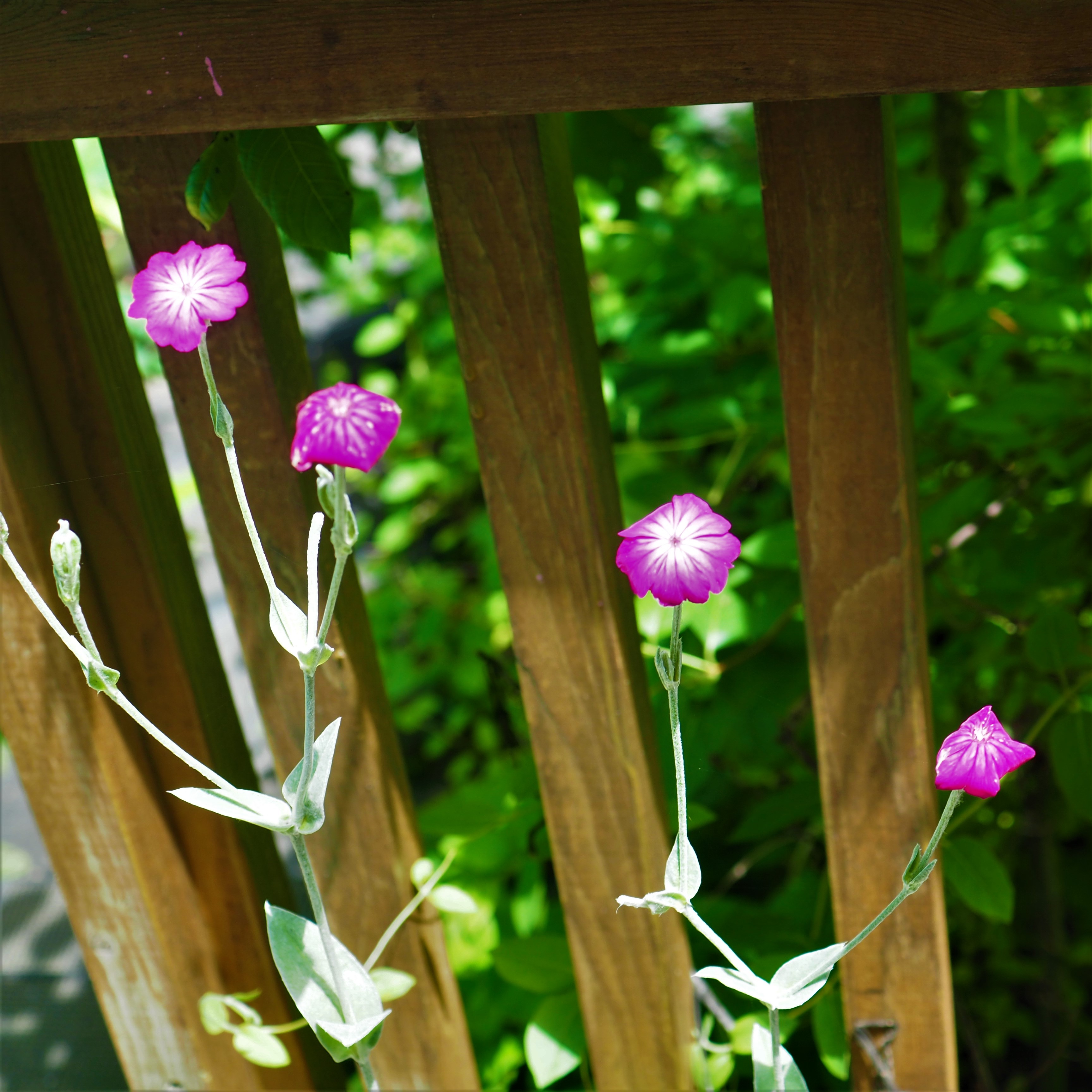
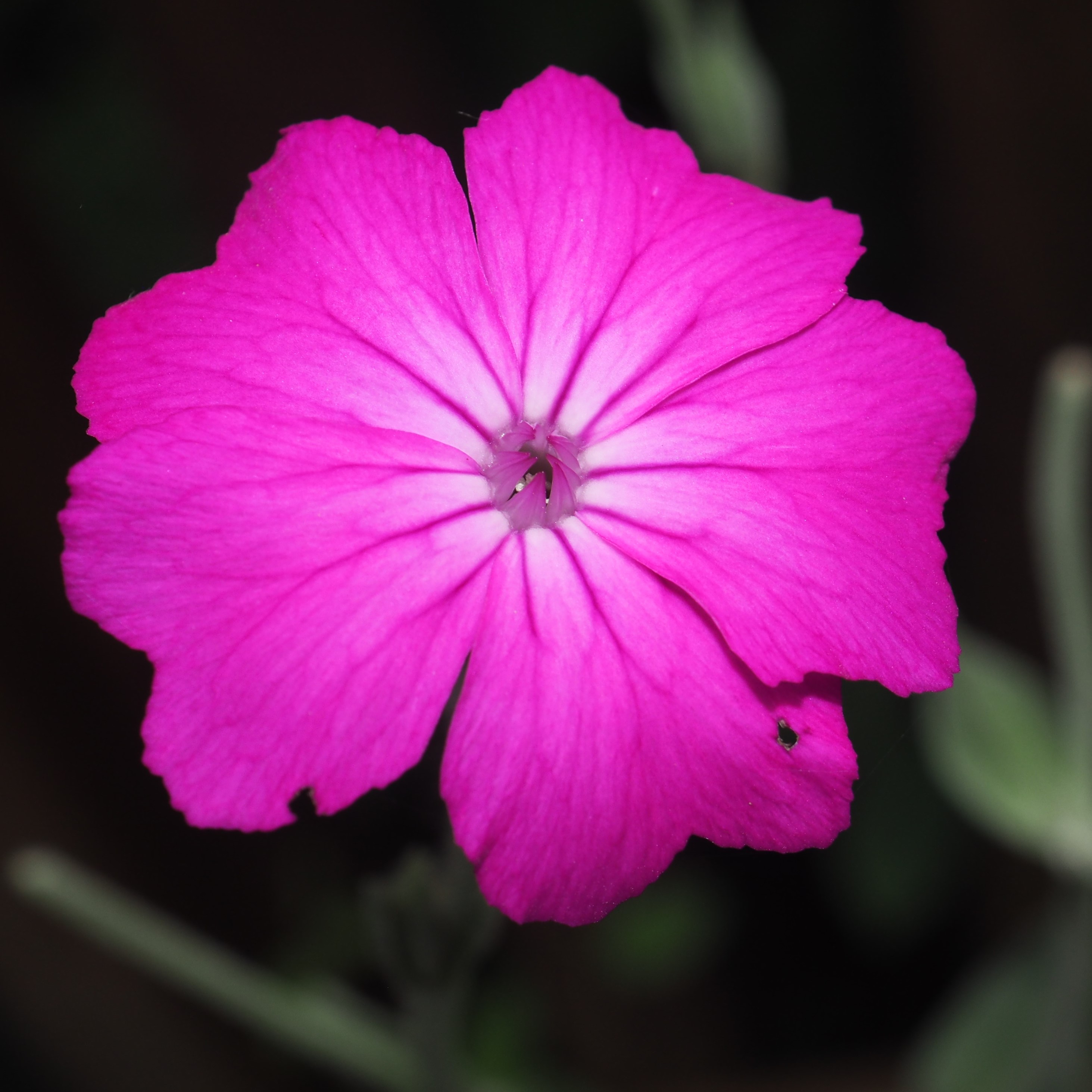
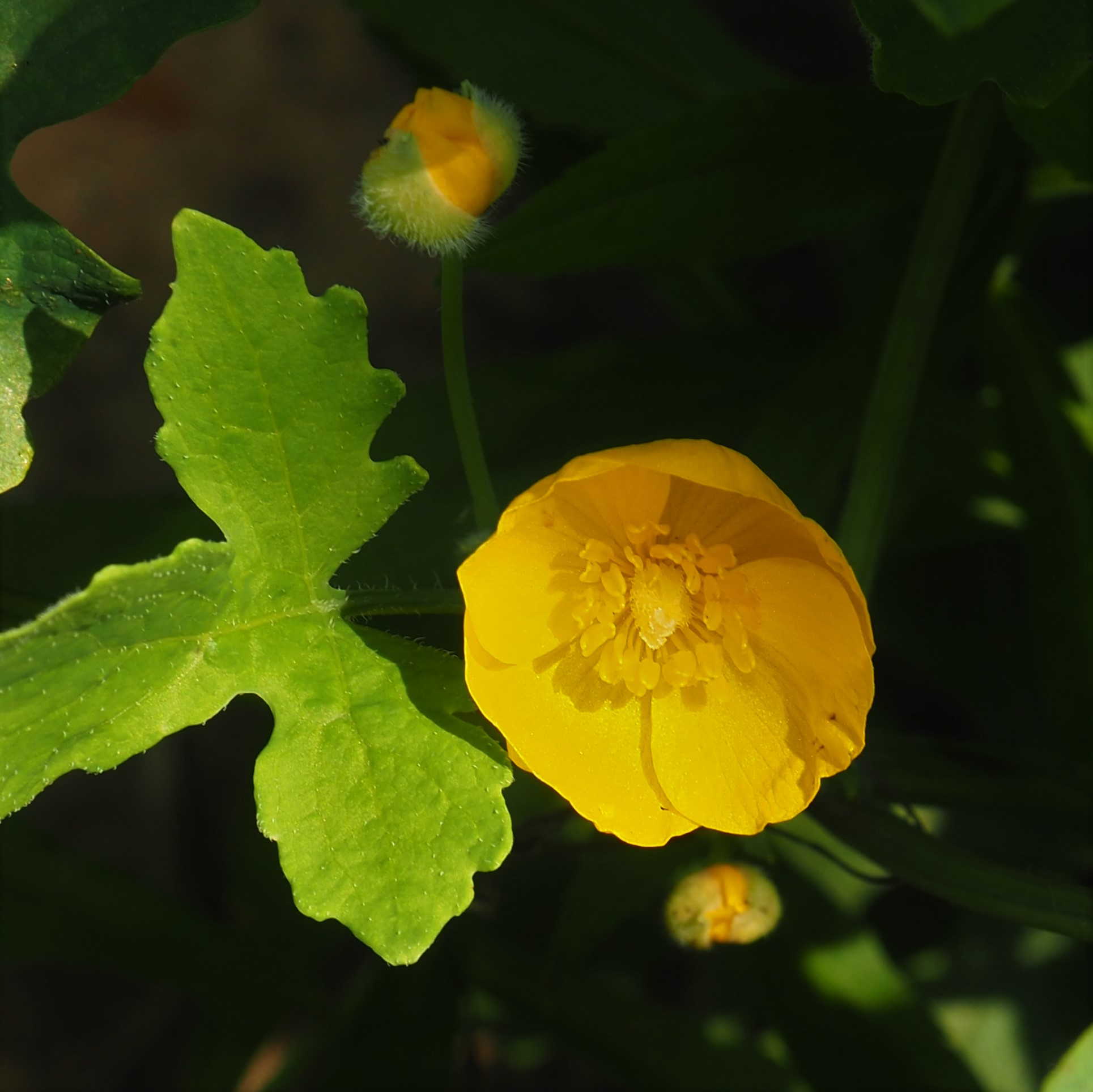
Here are the Lilies - the Stella d'Oros, the Common Day Lilies, and the ones that I've forgotten the names of, but not my admiration for.

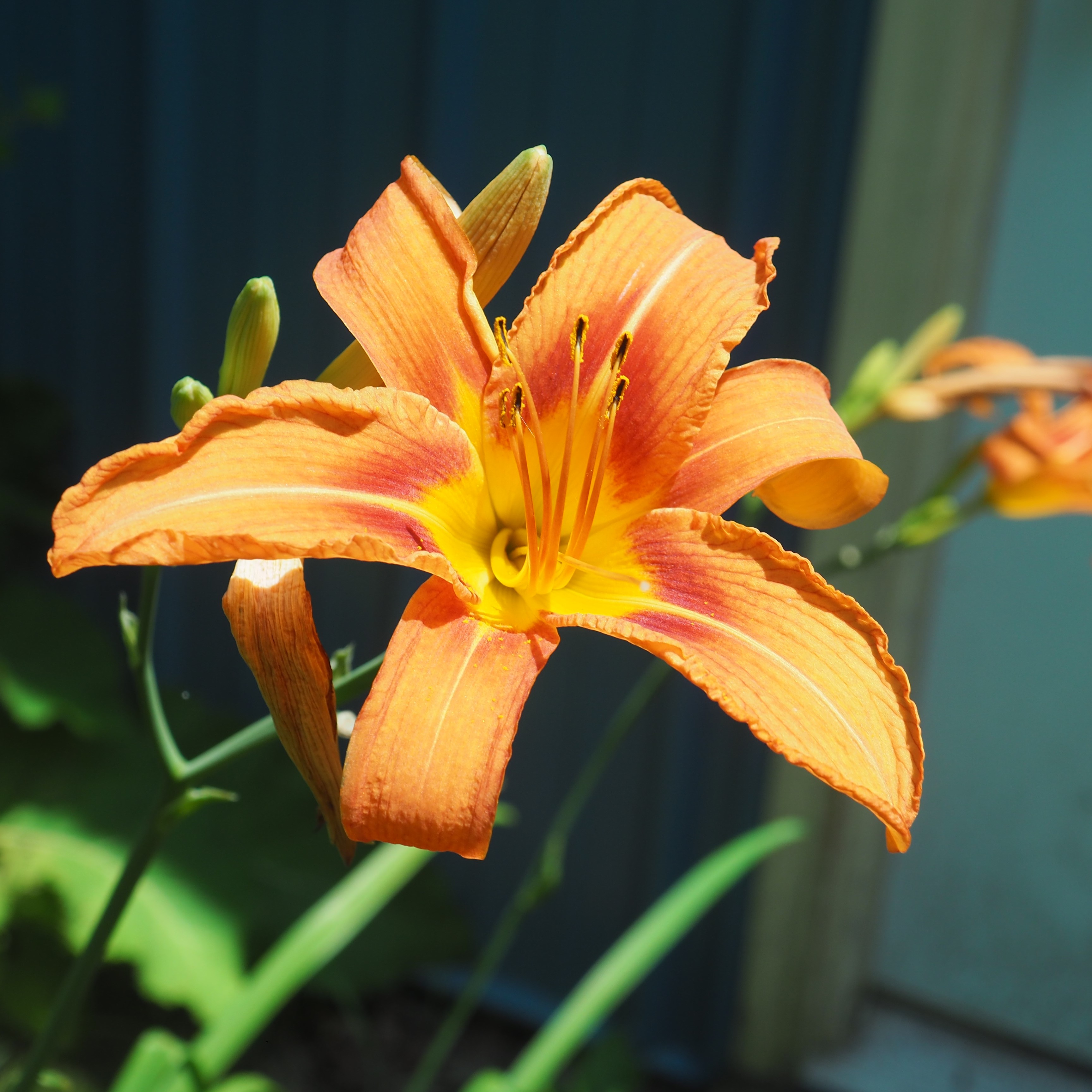
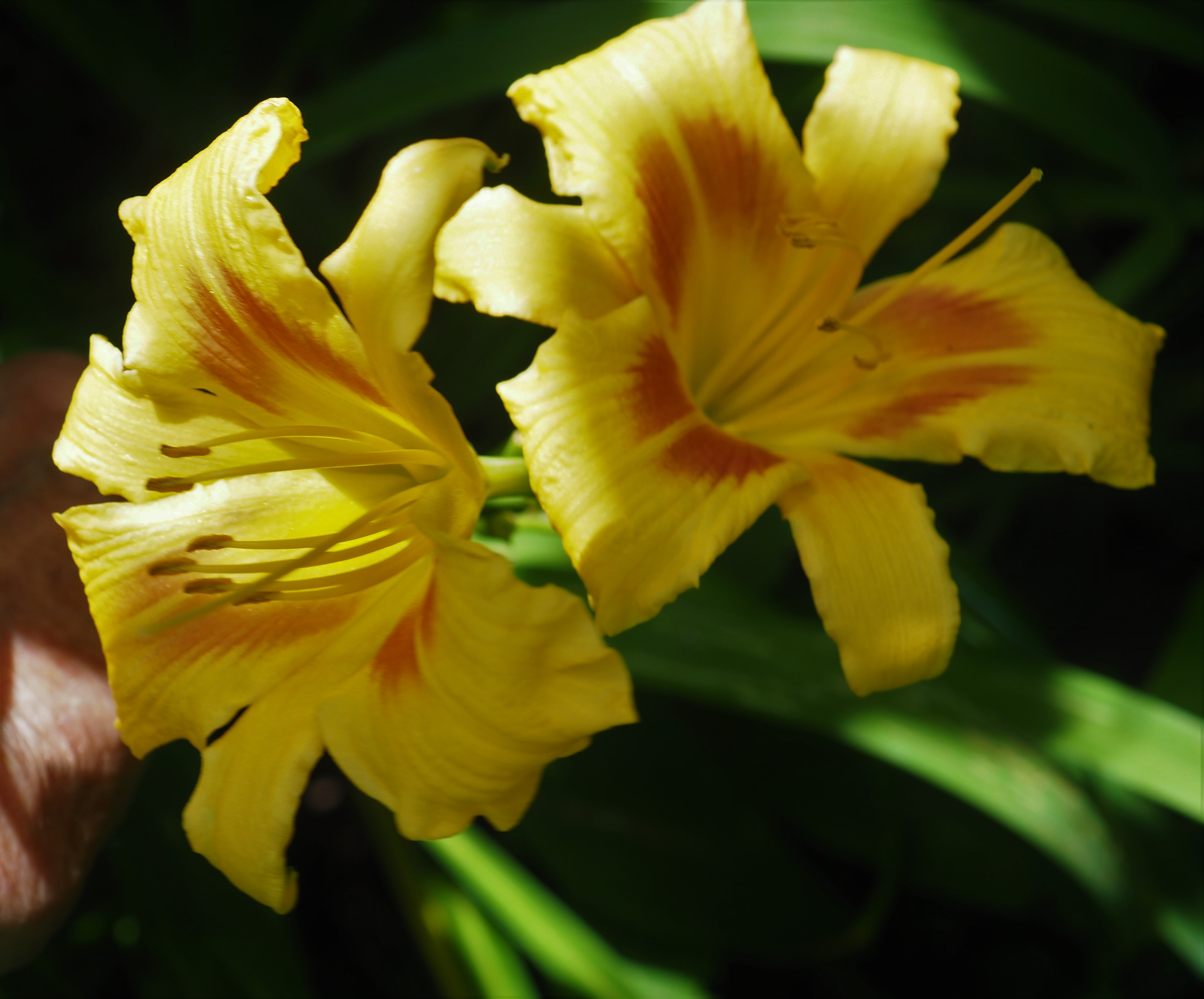
The Fleabane, the Butterfly Weed just waiting for the Monarchs, and the tiny Cinquefoil.
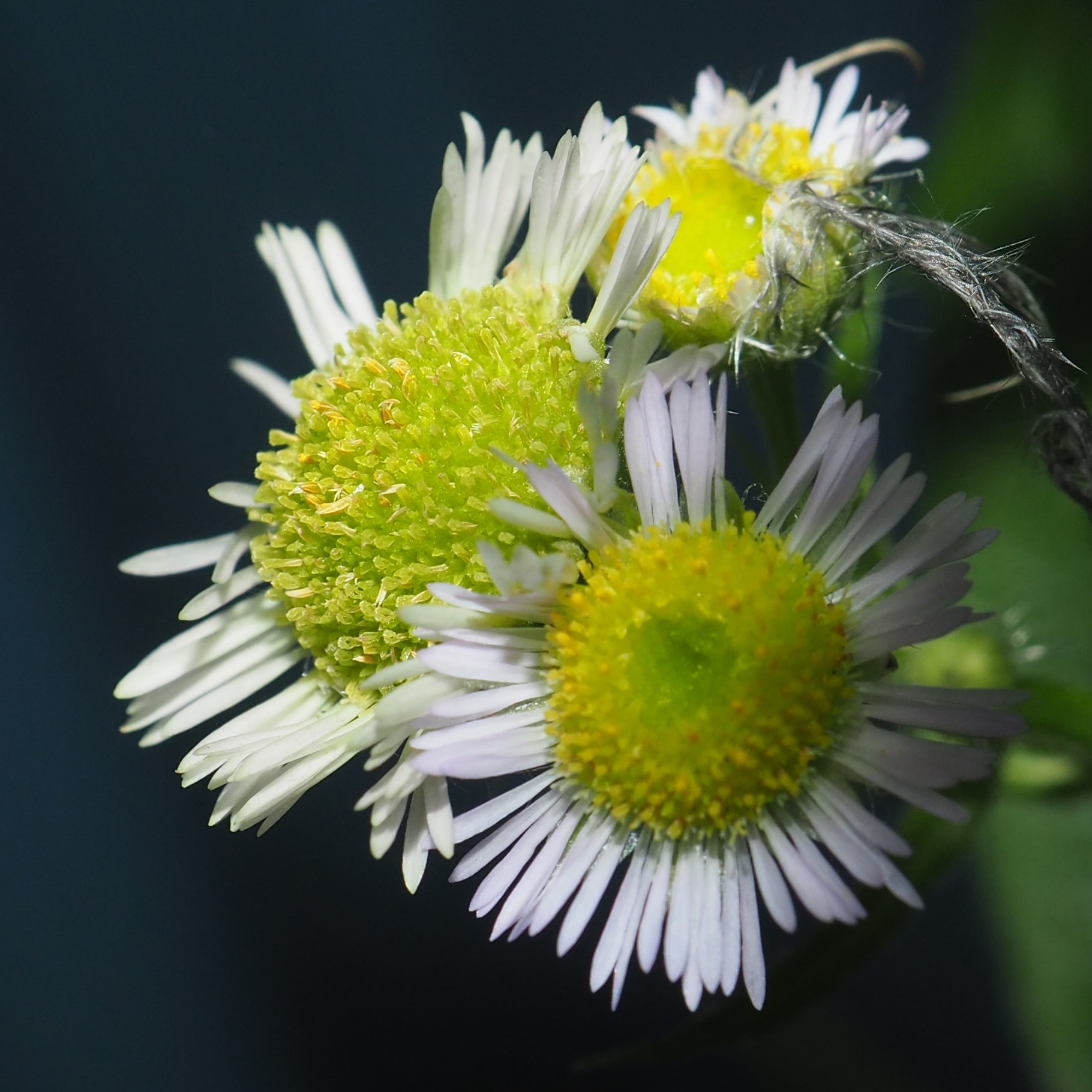
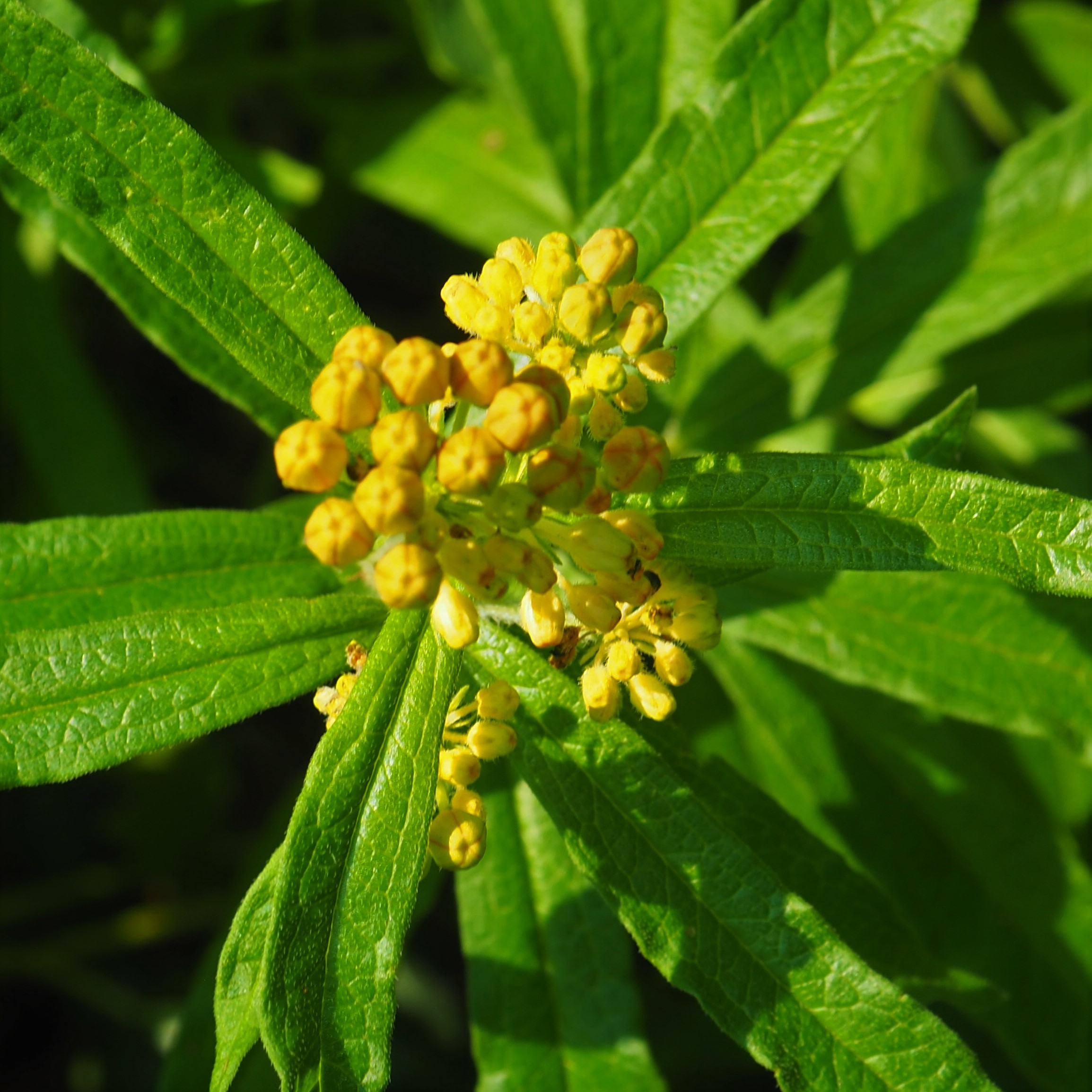
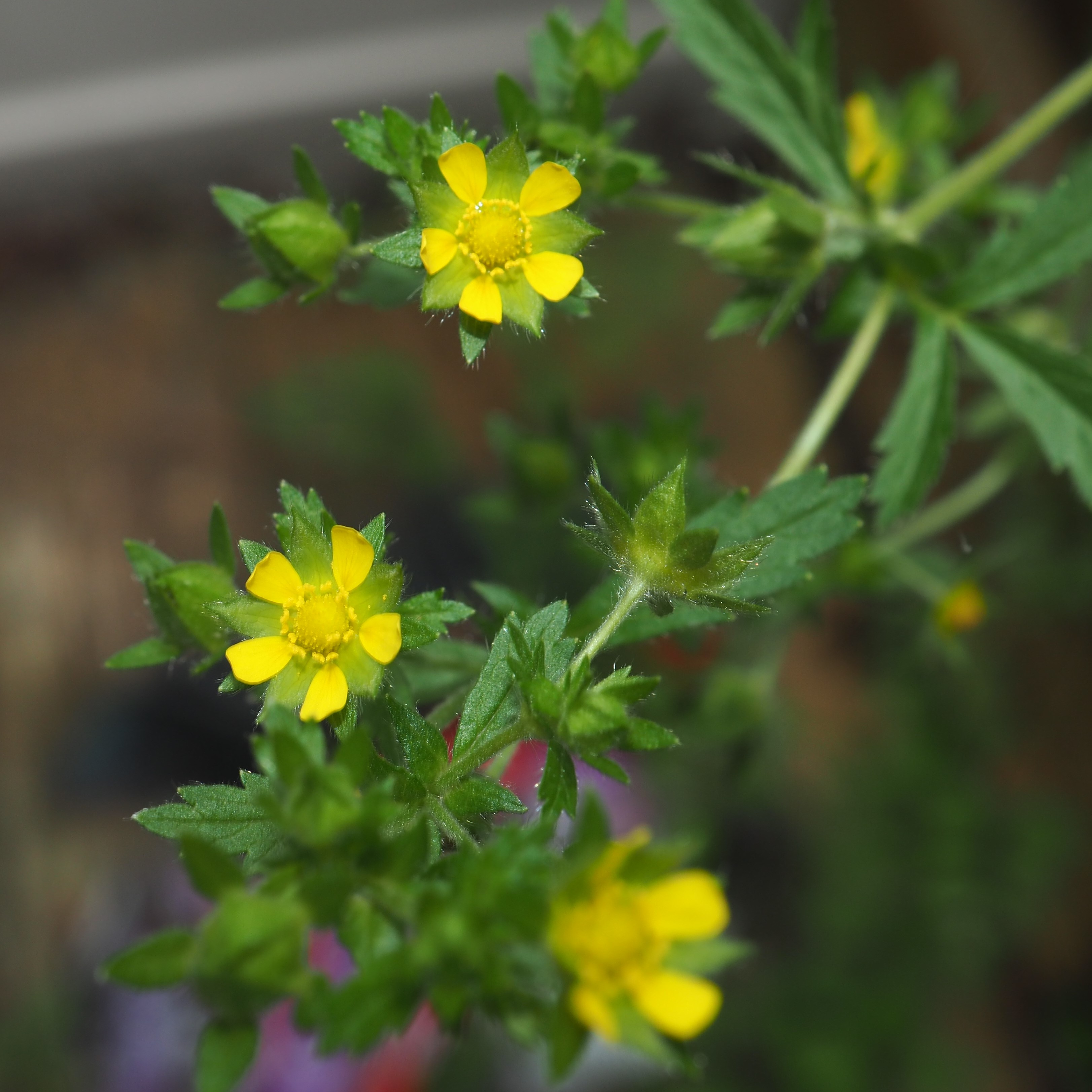
The Foxglove and the Spiderwort.
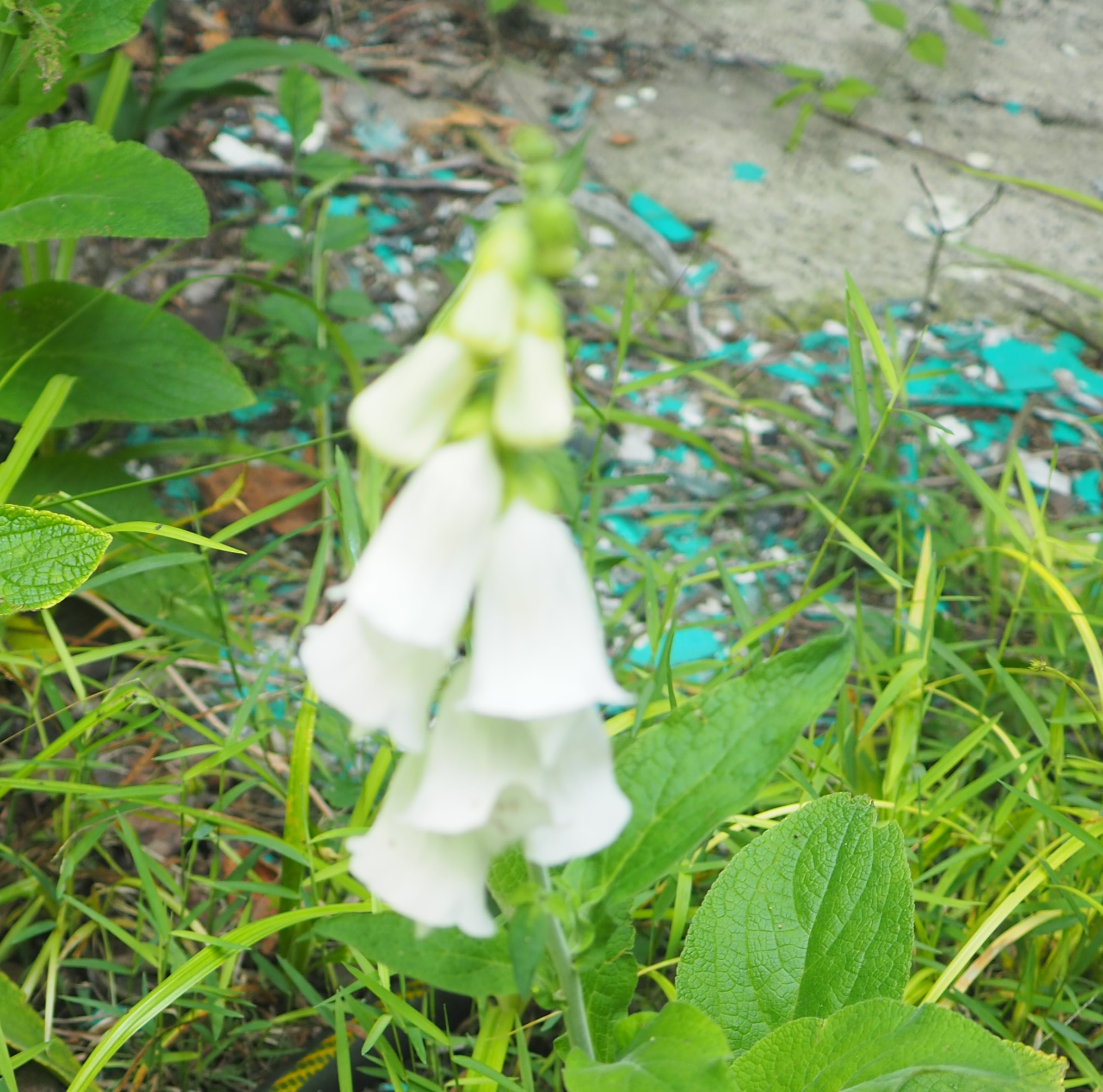

And the Trumpetvine! I was going to hold out, but you've been so good, I just couldn't!
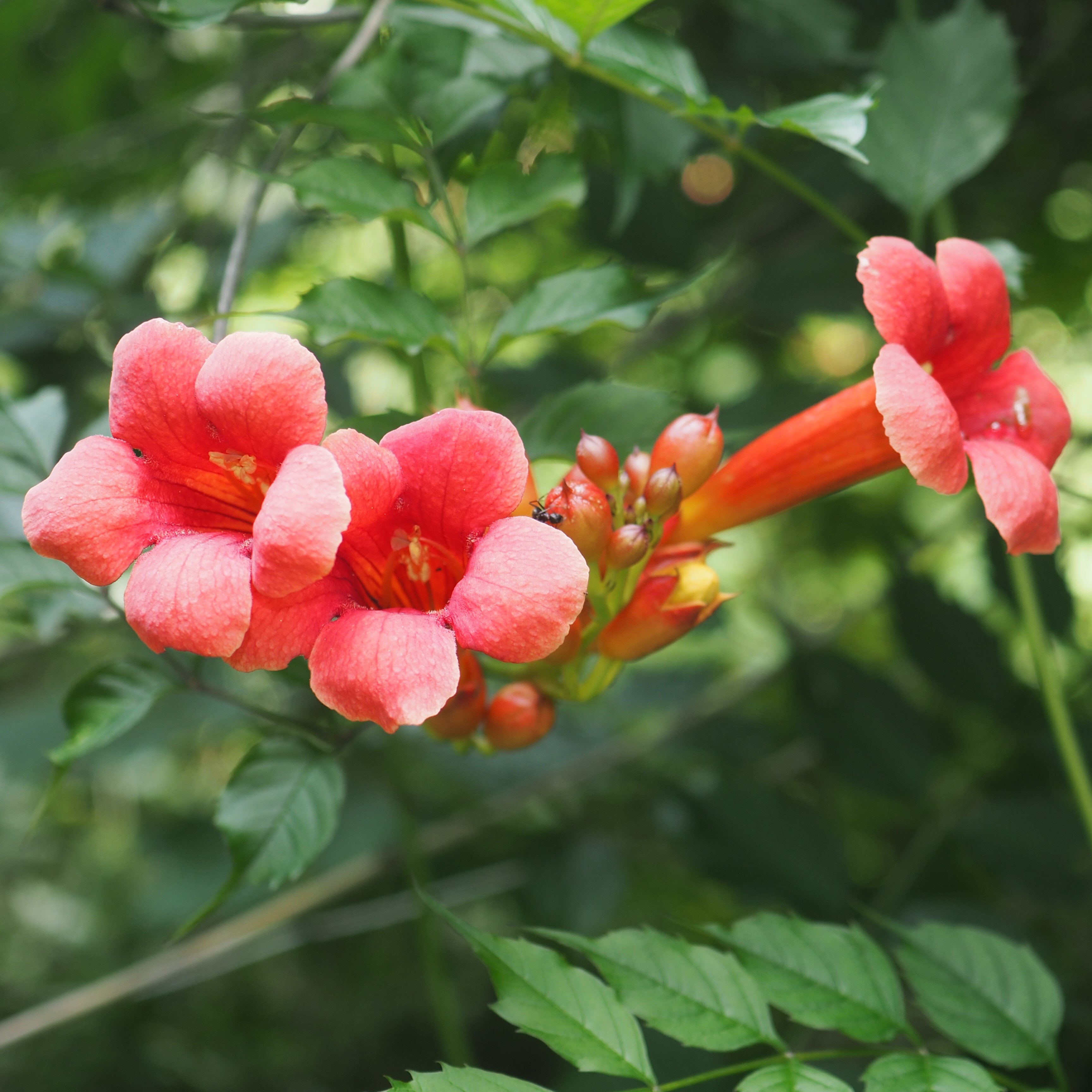
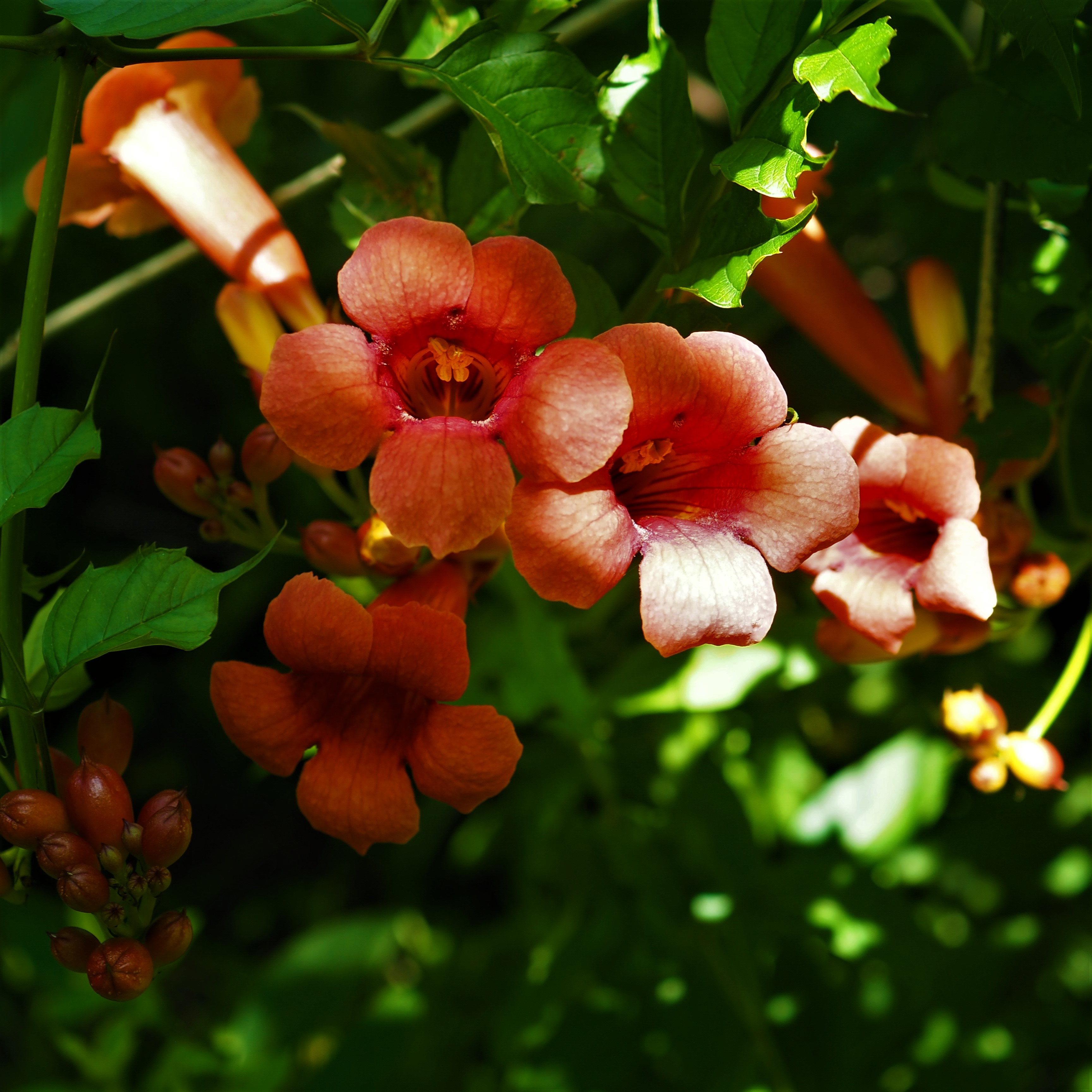
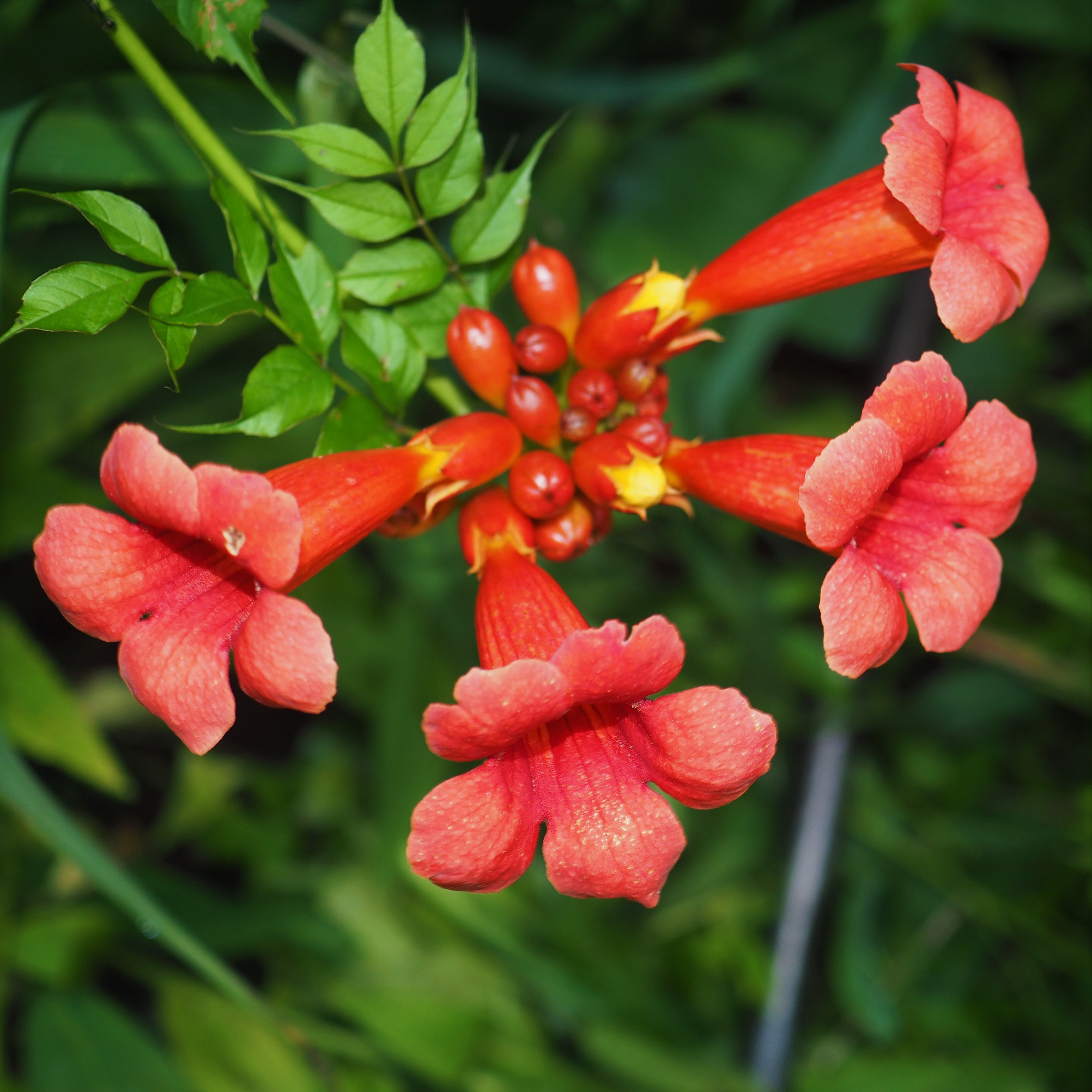
Well, my friends, I think it's time for some of the sweetest Spiders on this green earth. Just the sweet ones. This first is one of the Eustala genus. Next is Mangora placida. And one little Jumping Spider.


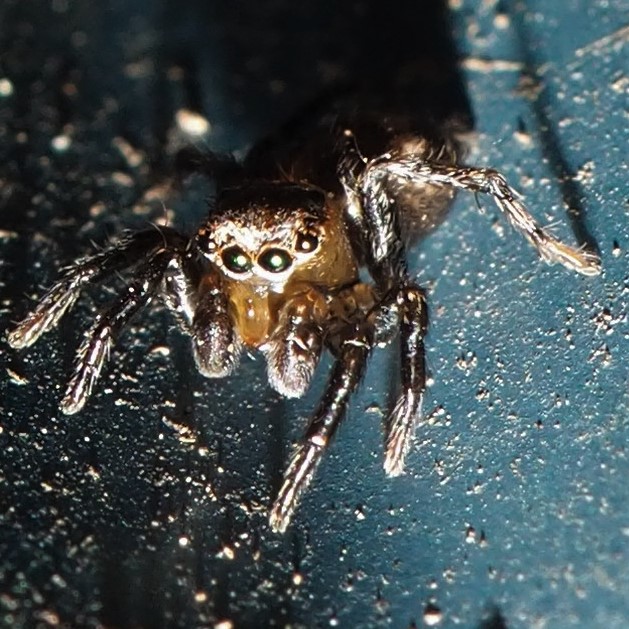
Now my favorites. There are at least a couple of these Mimetus puritanus out there. I love that Joker face. The third one seems to have caught itself a nice Spider for supper. Oops - So has the second one!

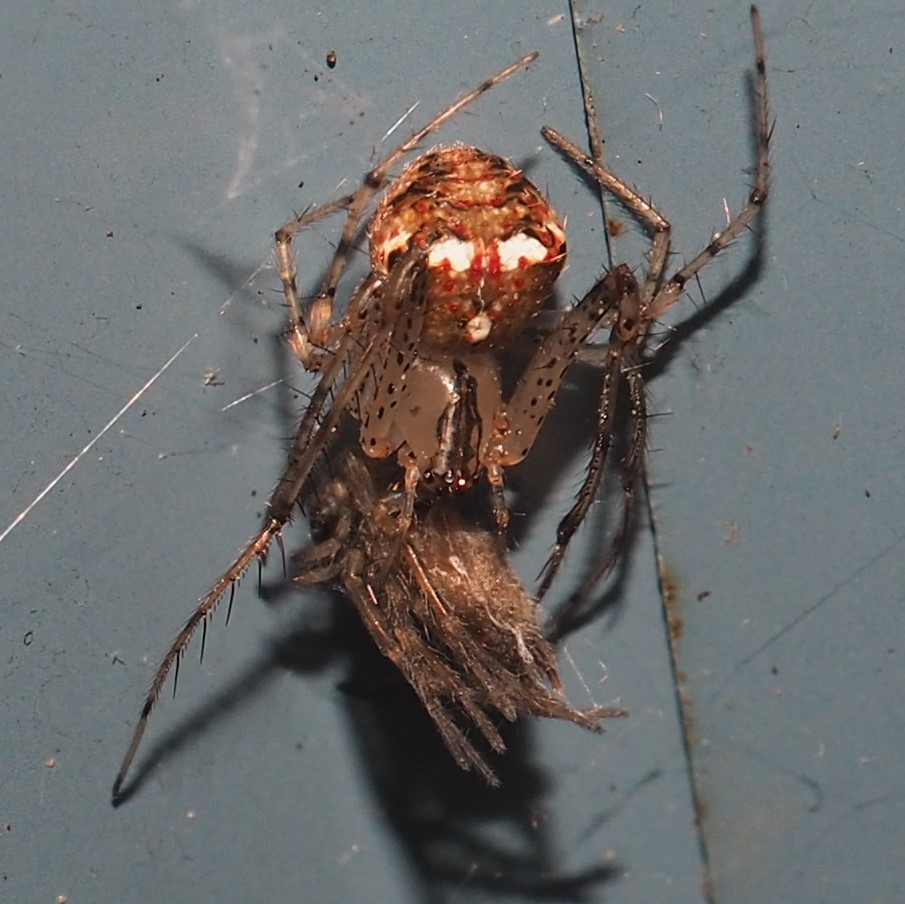
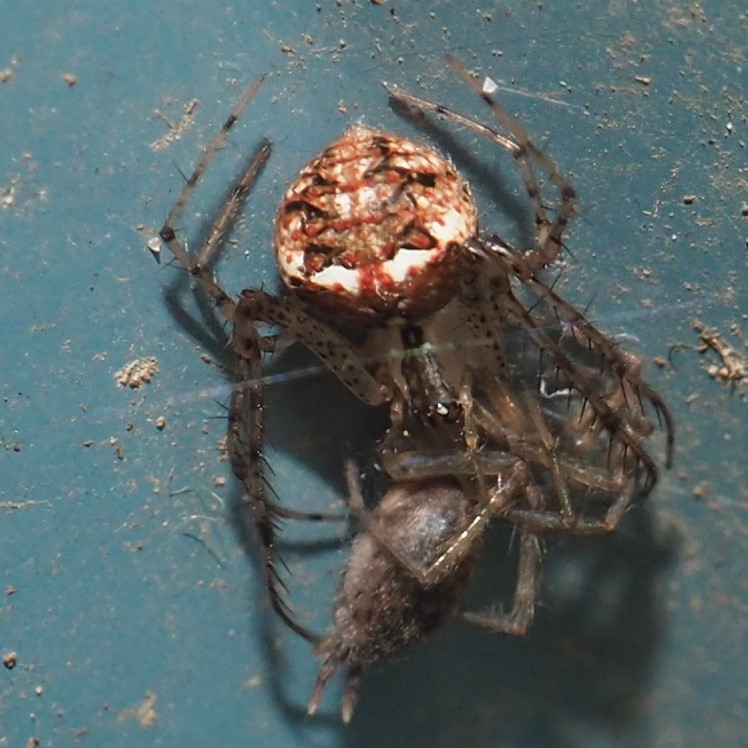
Here is one that was dangling from a string.
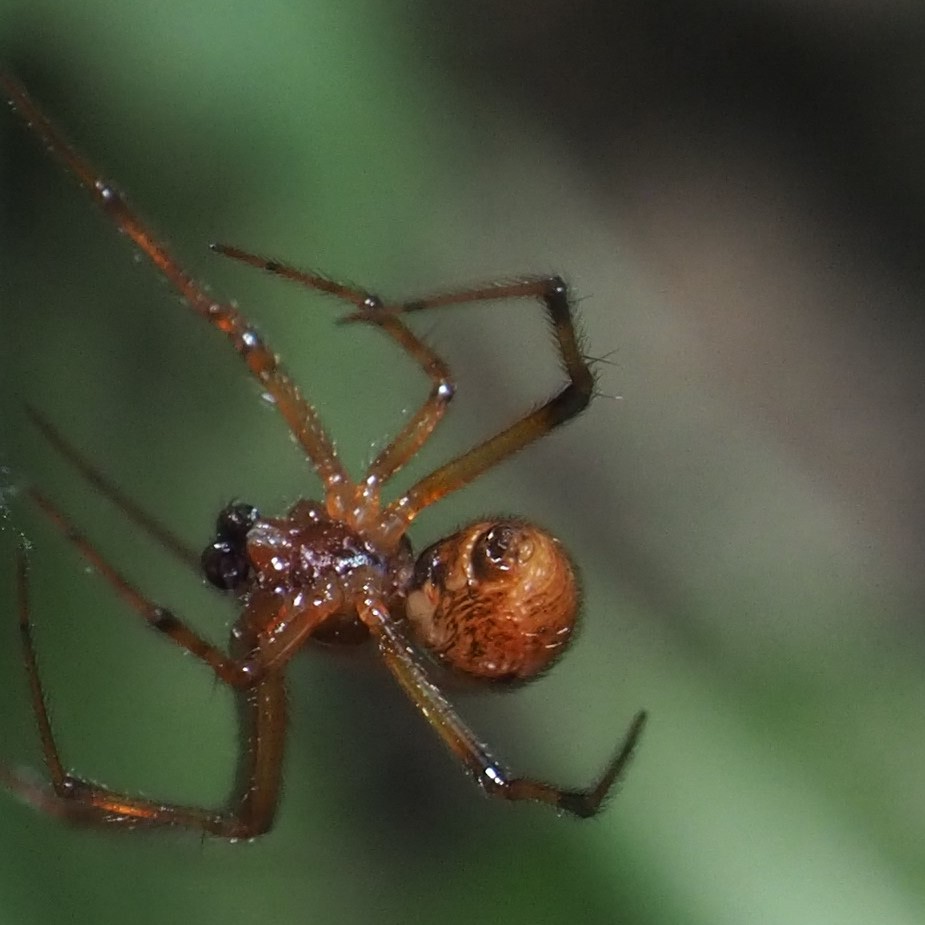
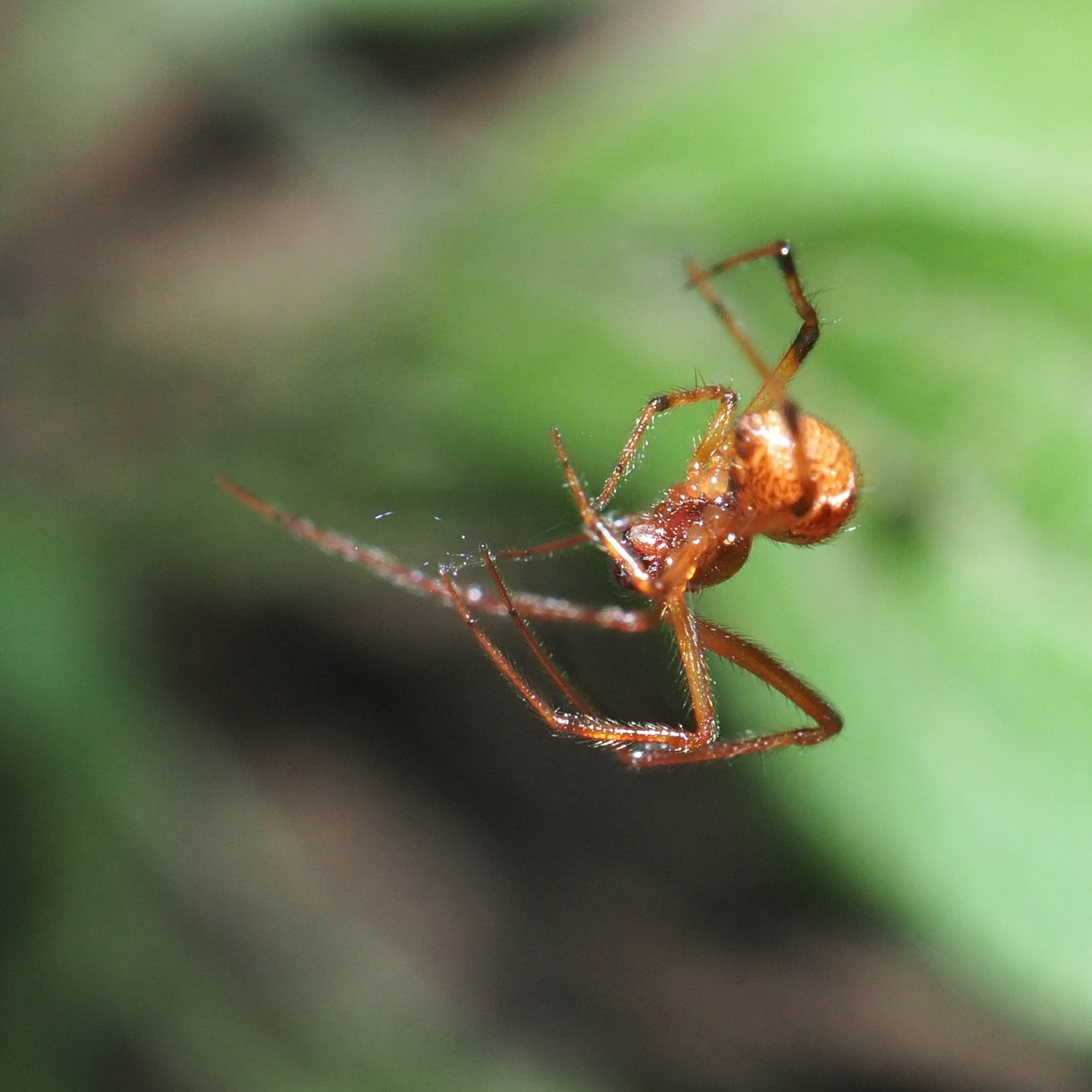

And now my favorite - this delicate work of art. And one more Mystery Spider.
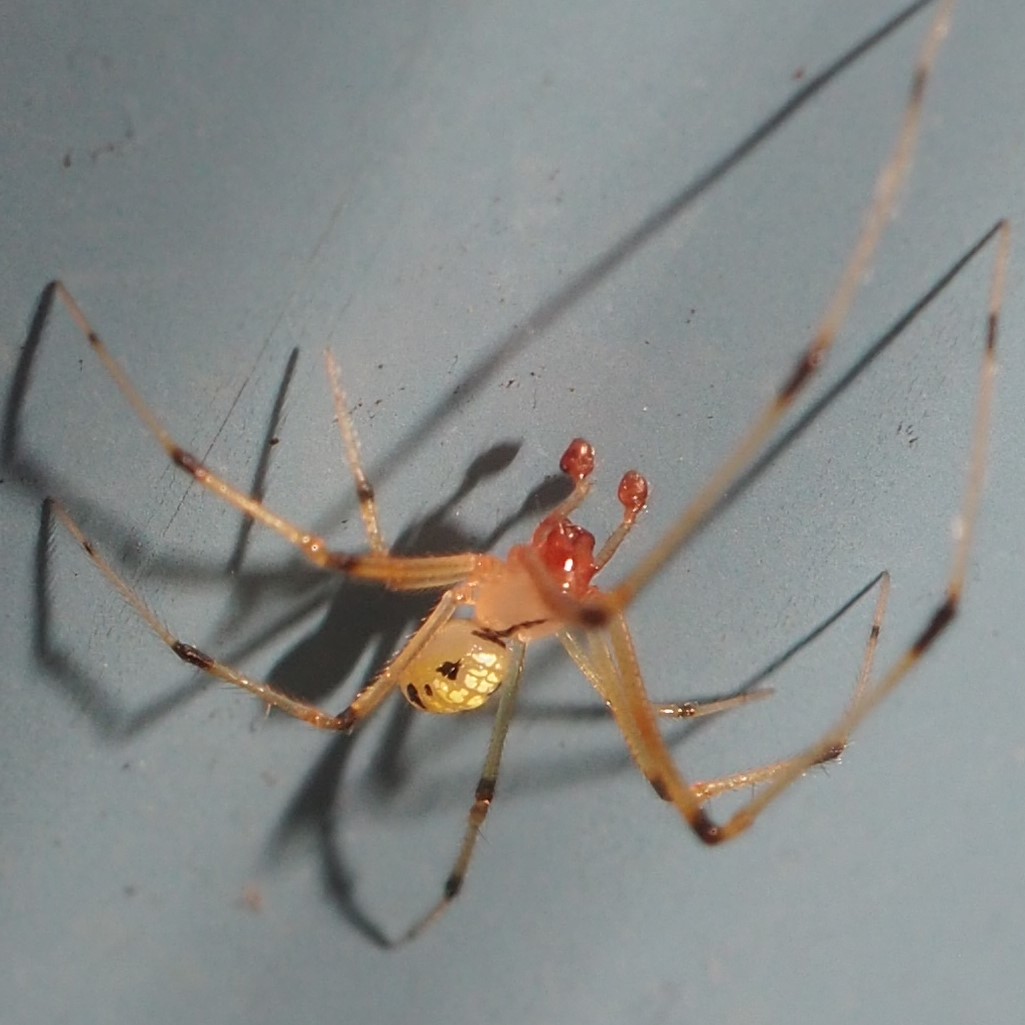
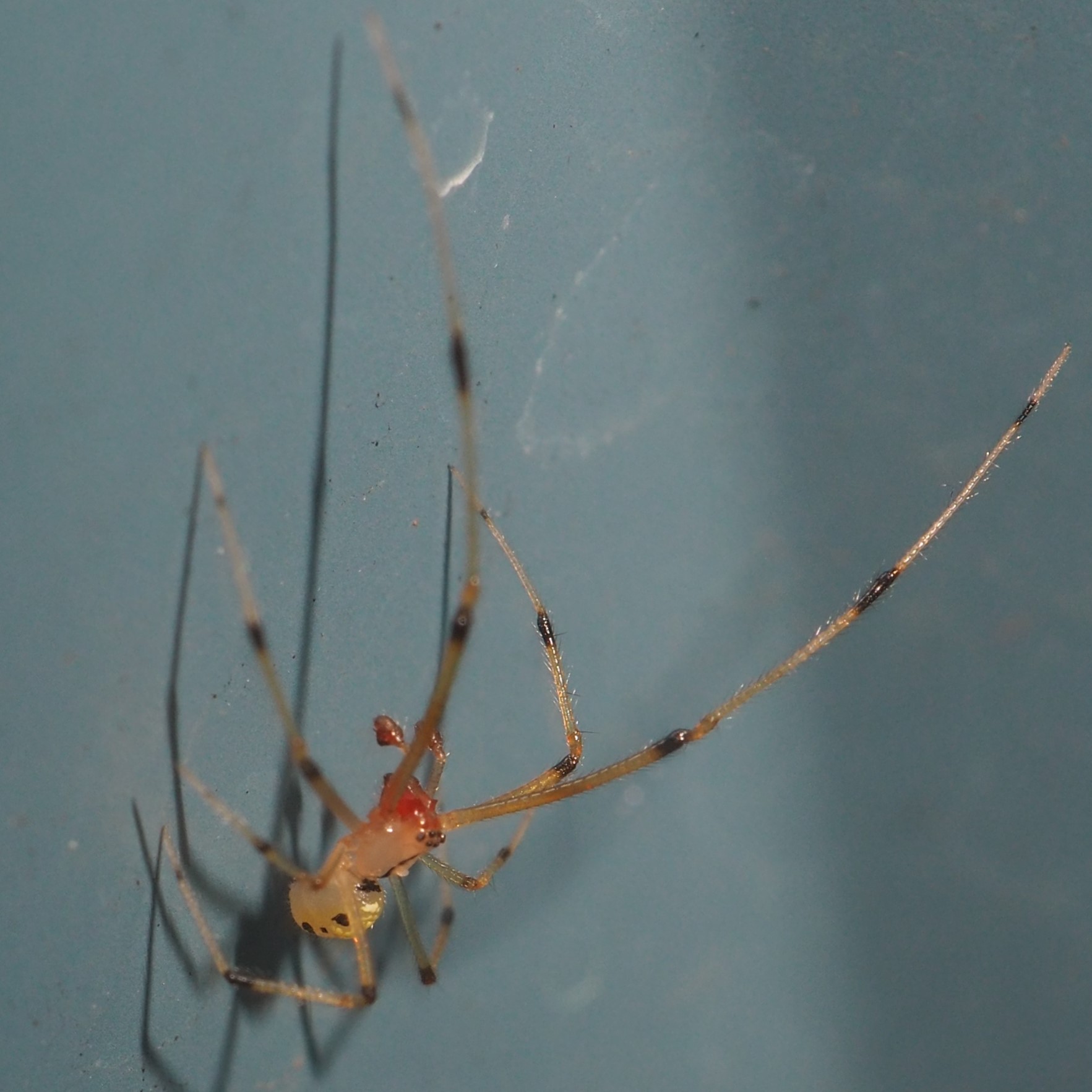
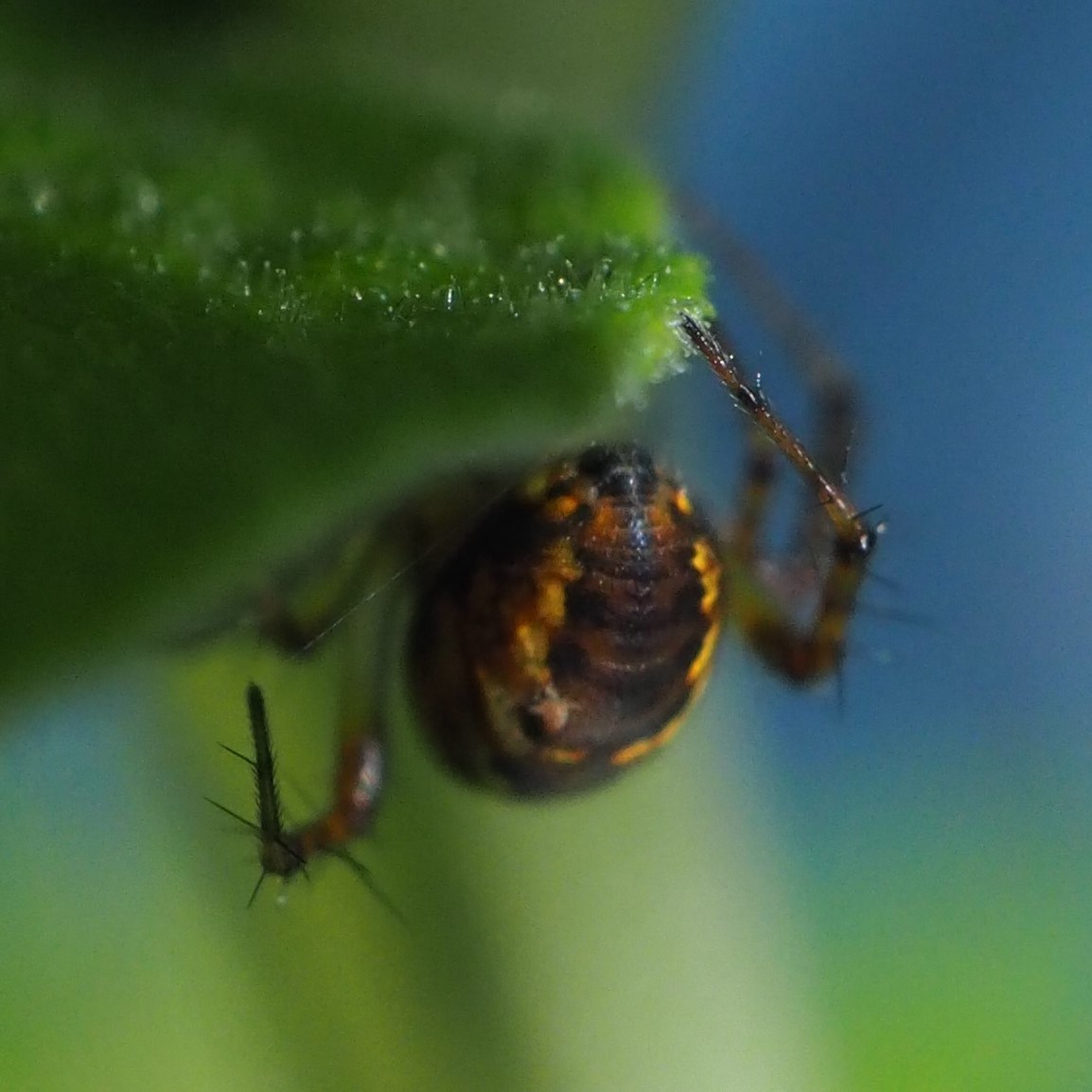
About June 30, this wonderful creature showed up. It's a Pseudoscorpion. Just so you won't be scared, they are very small and could not hurt a monster like us. Here is one with a small spider. I think they're marvelous.
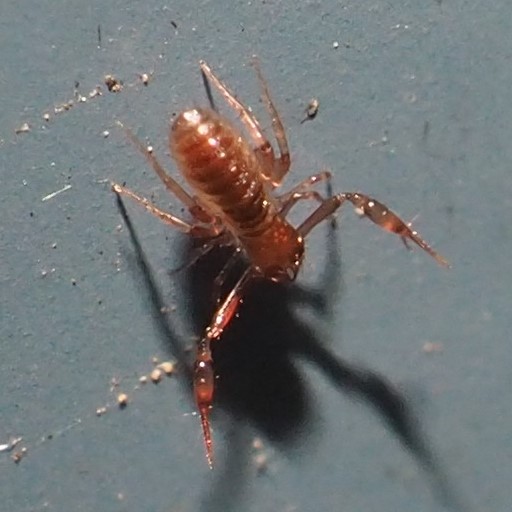
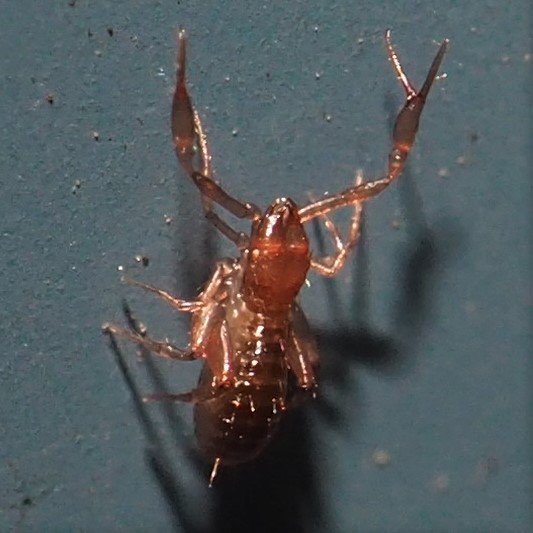
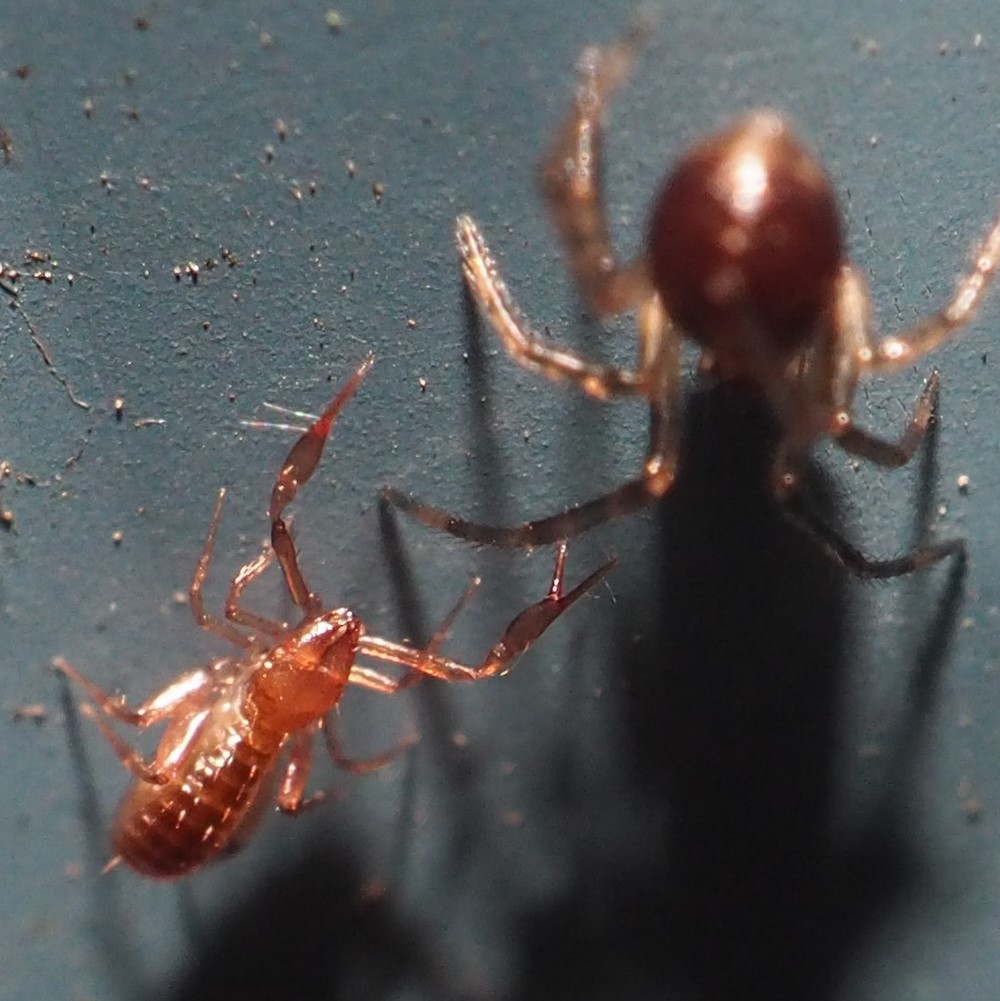
We had a note of sadness this week. The Robins successfully raised three chicks to fledging. Unfortunately one of them did not understand about streets. The mother tried to get him to run for safety, but the person in the car did not understand either. We buried him out back next to Big Bunny.
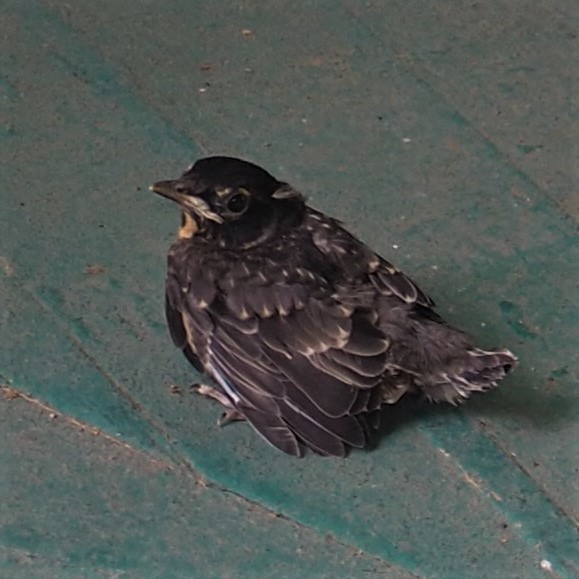
Life goes on. Come on over and sit with me by the pond - one of the most calming things in the world is to know the quantity of life that goes on in so little space.
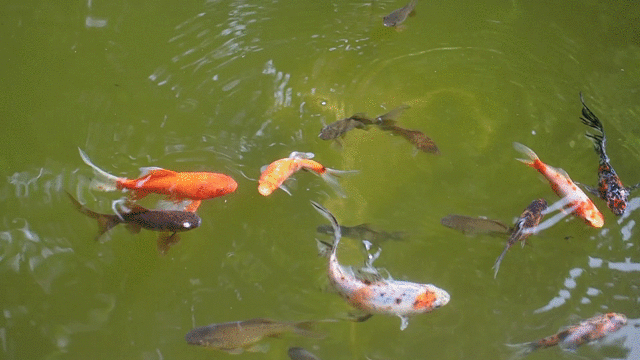
Love, Martha
Back to June 27, 2021
Forward to July 11, 2021
Back to main menu
copyright Martha O'Kennon 2021
























































































































































